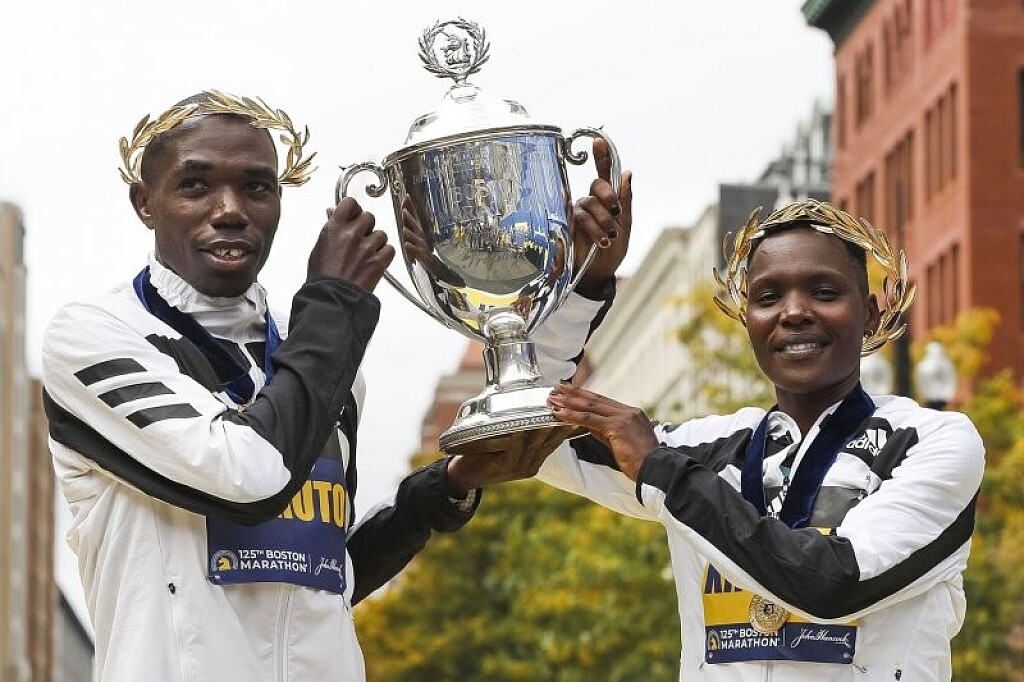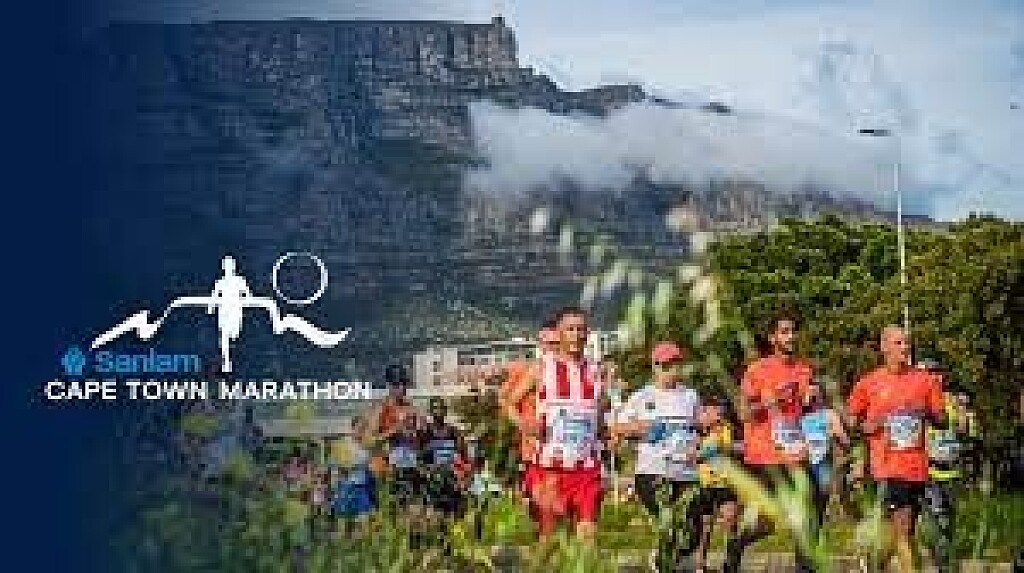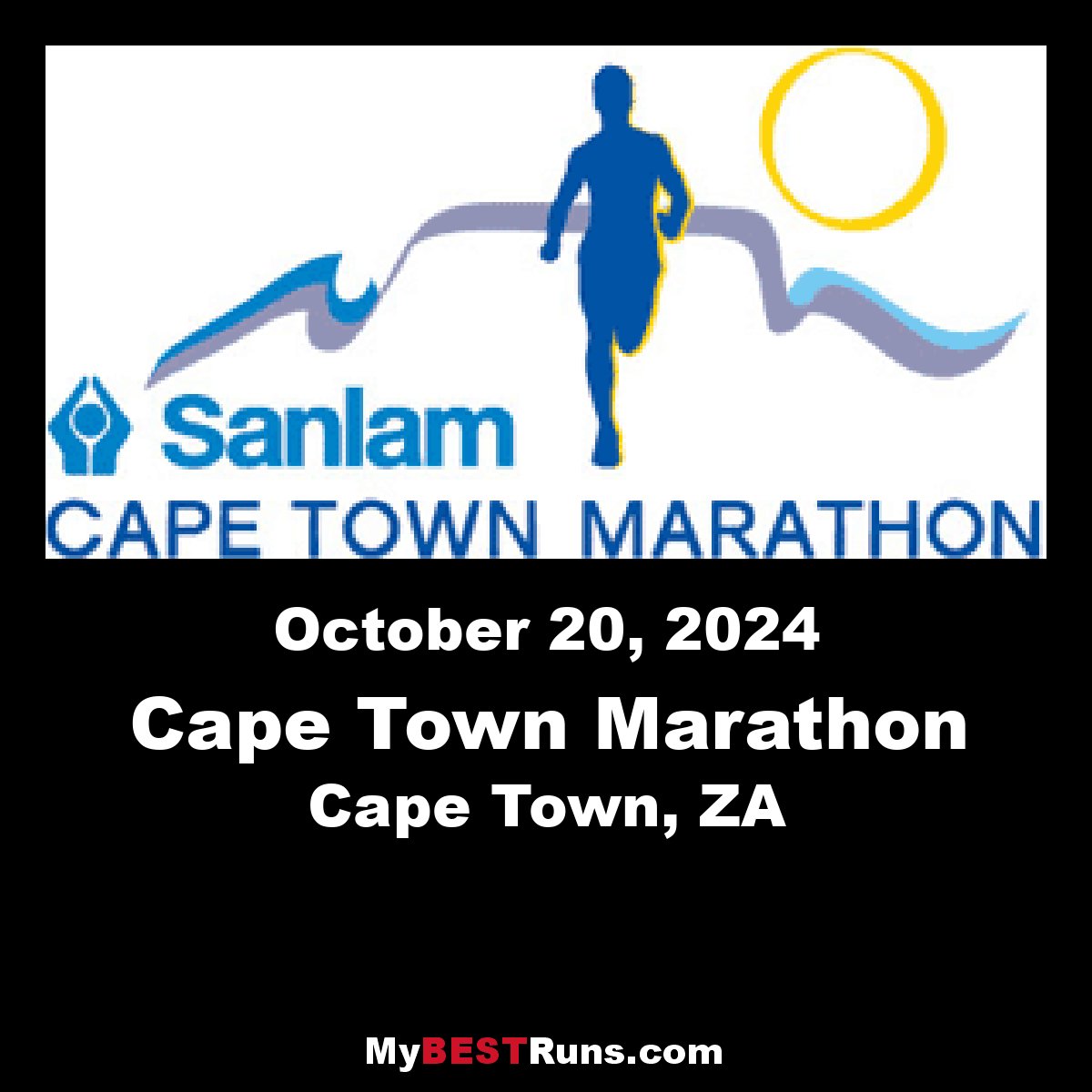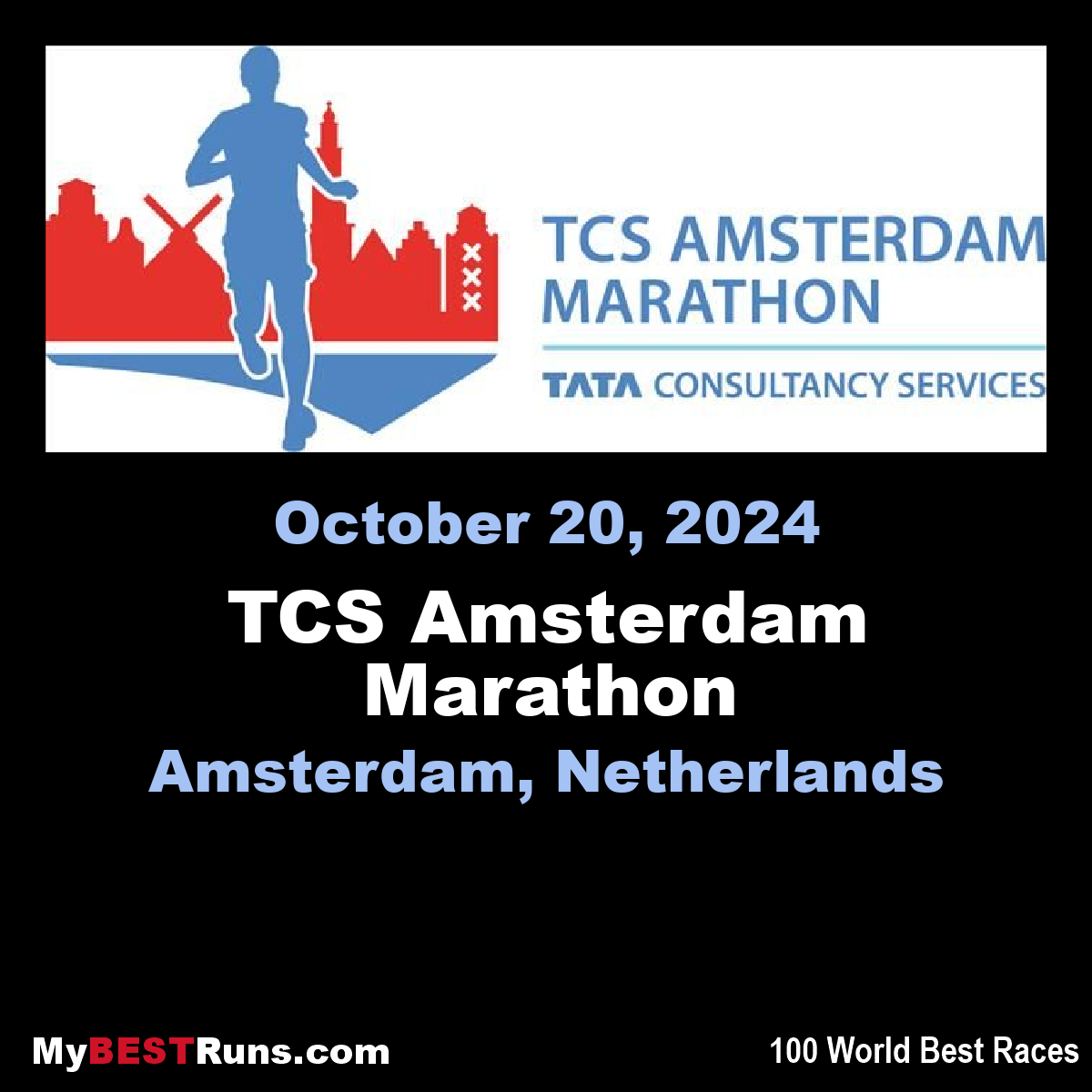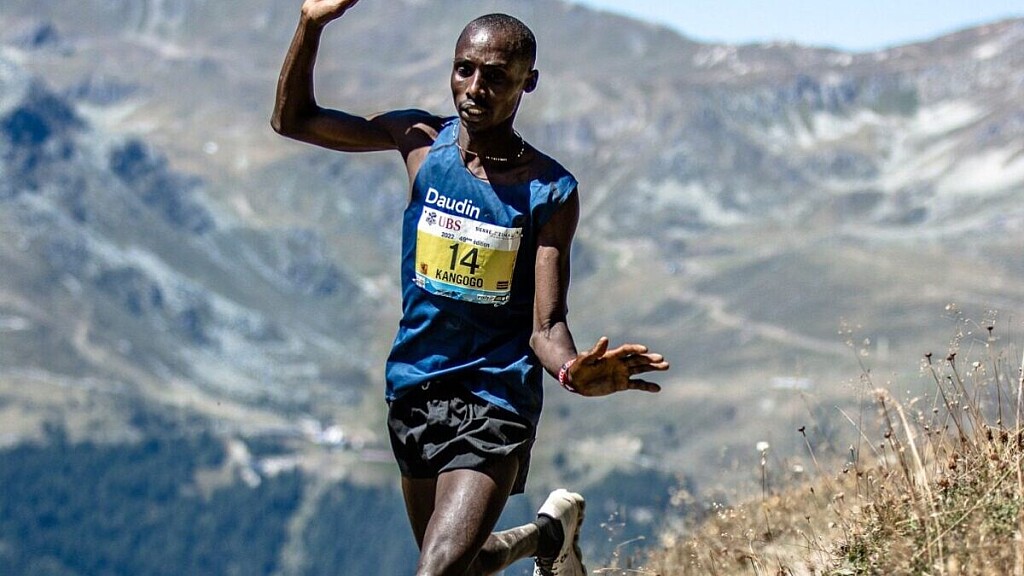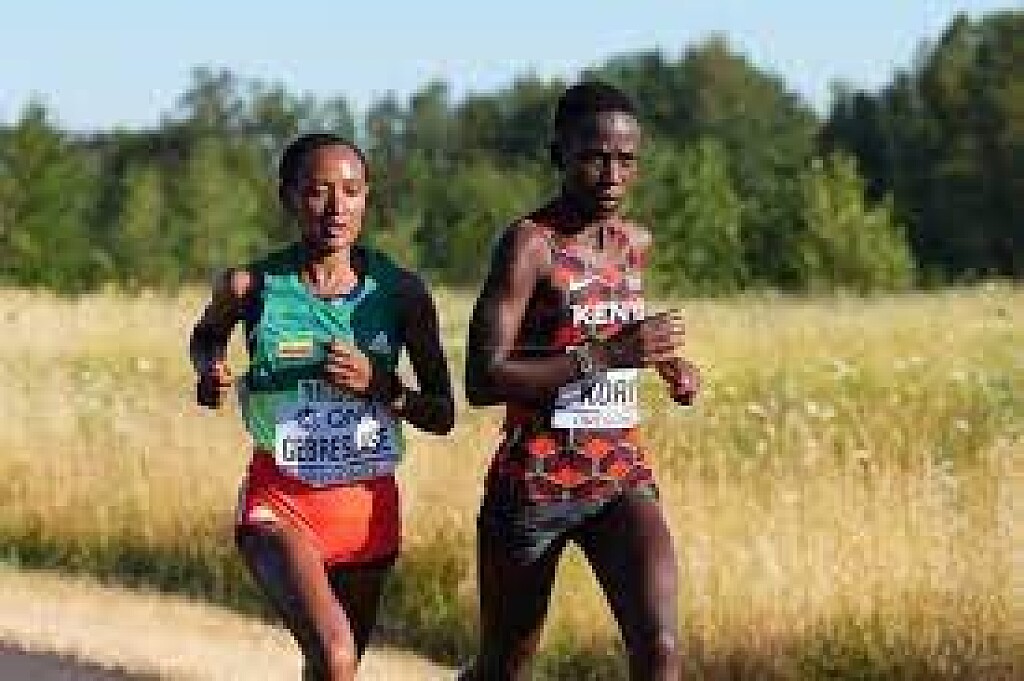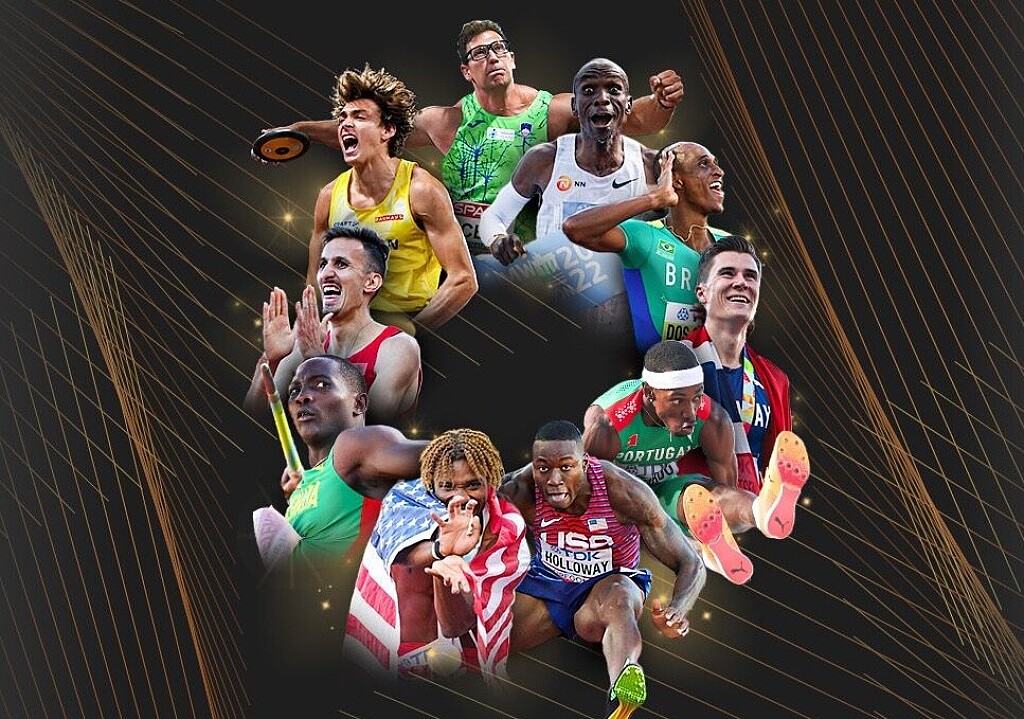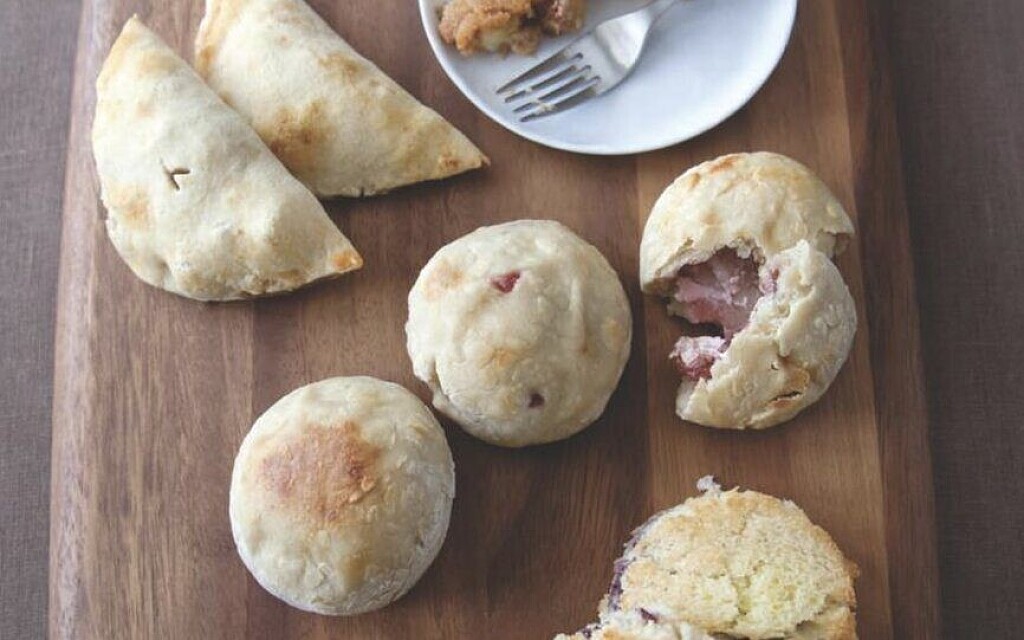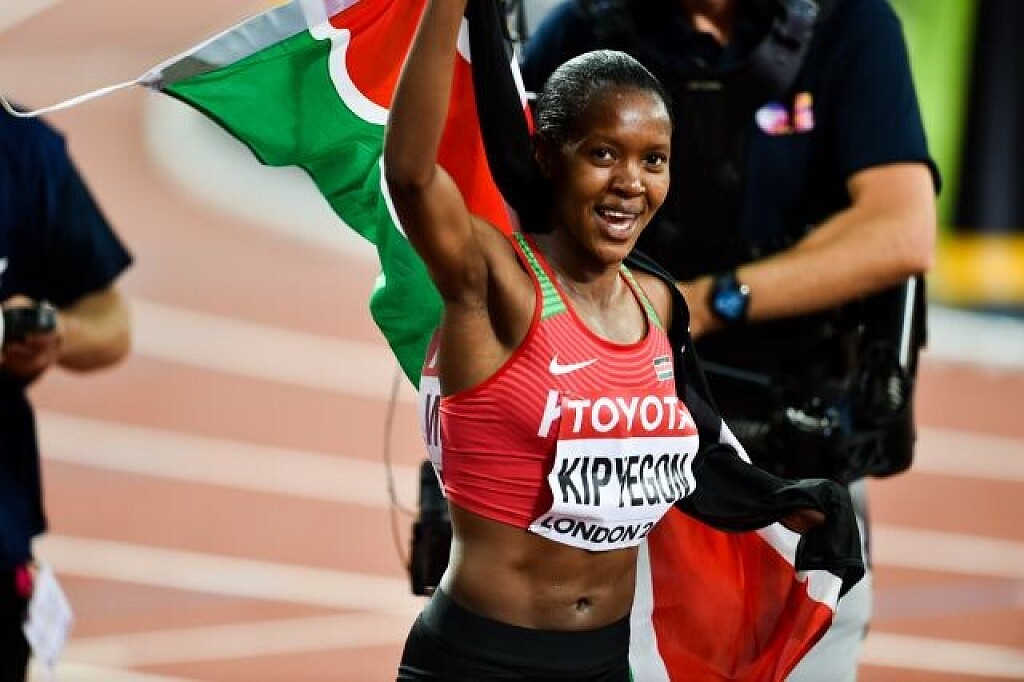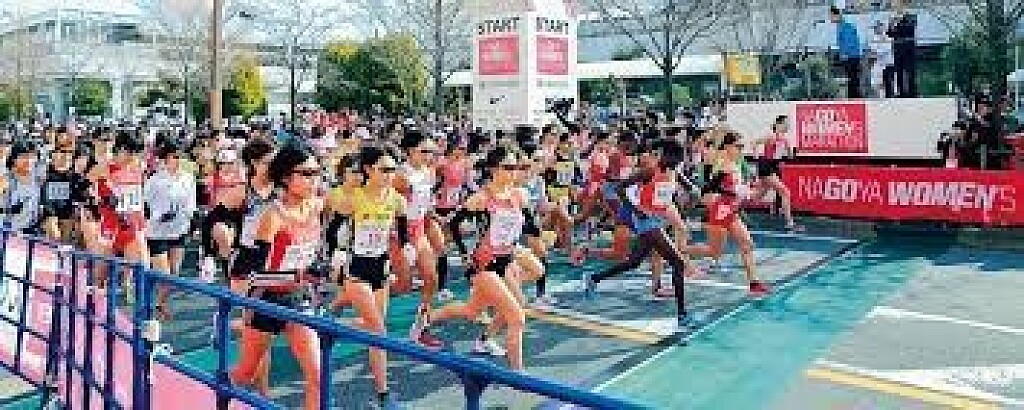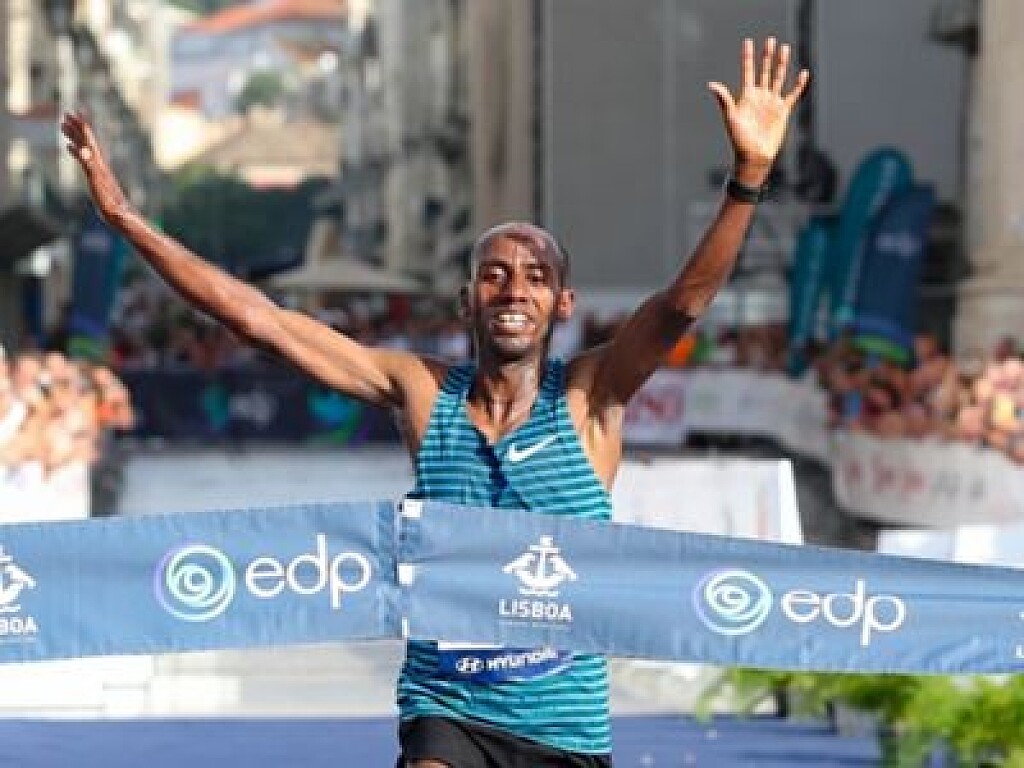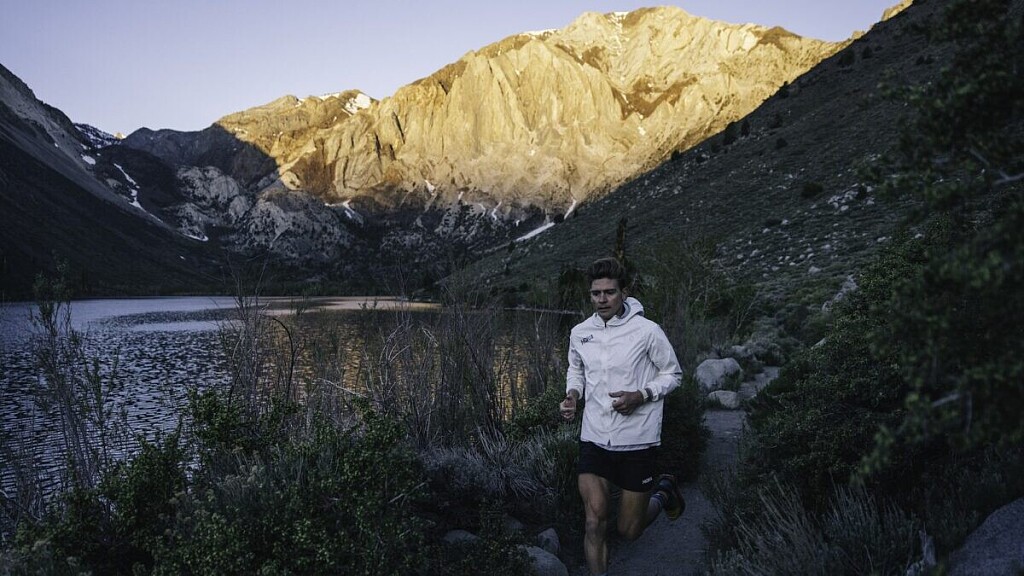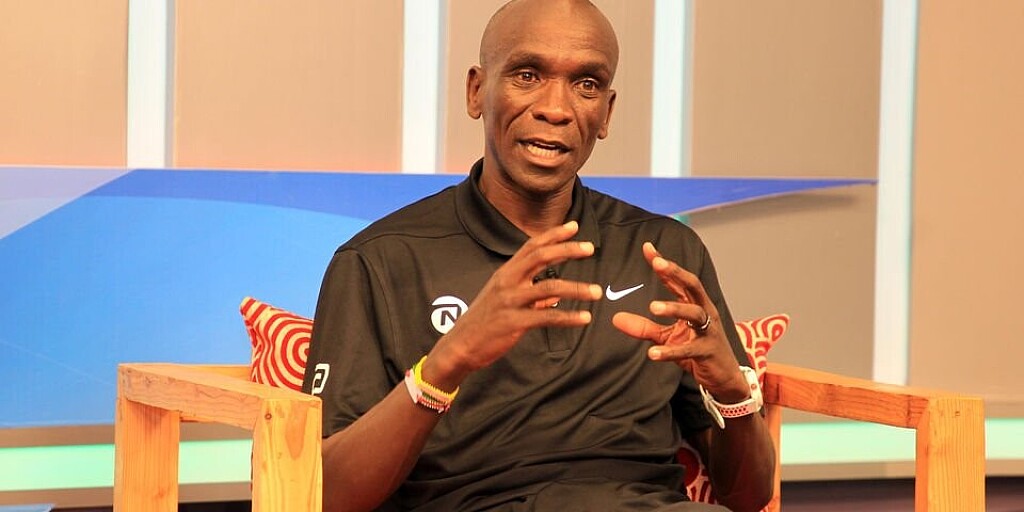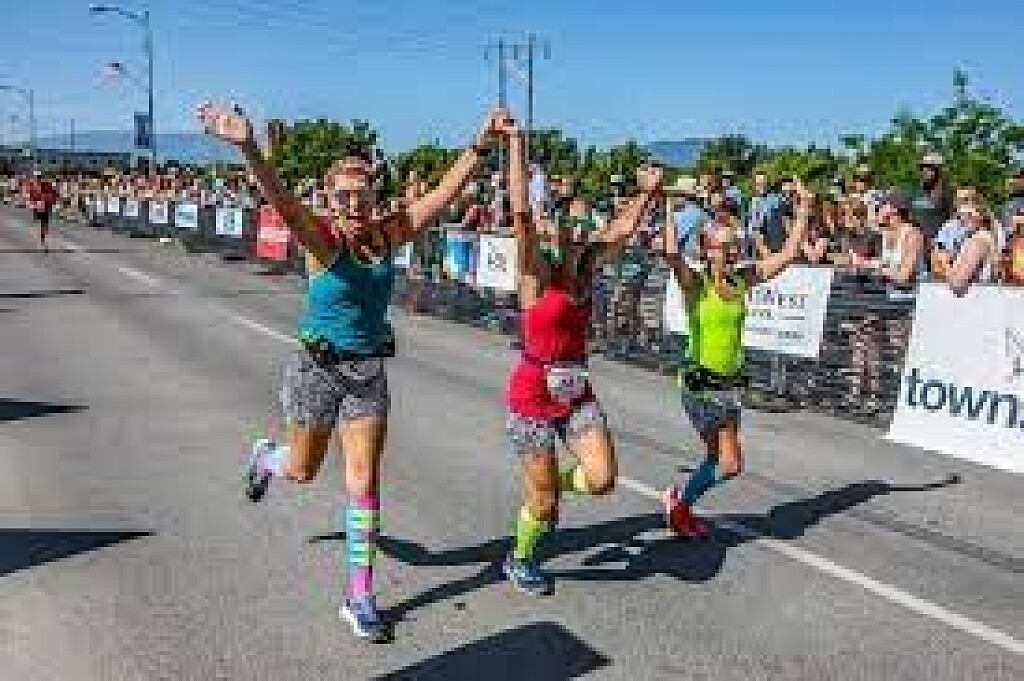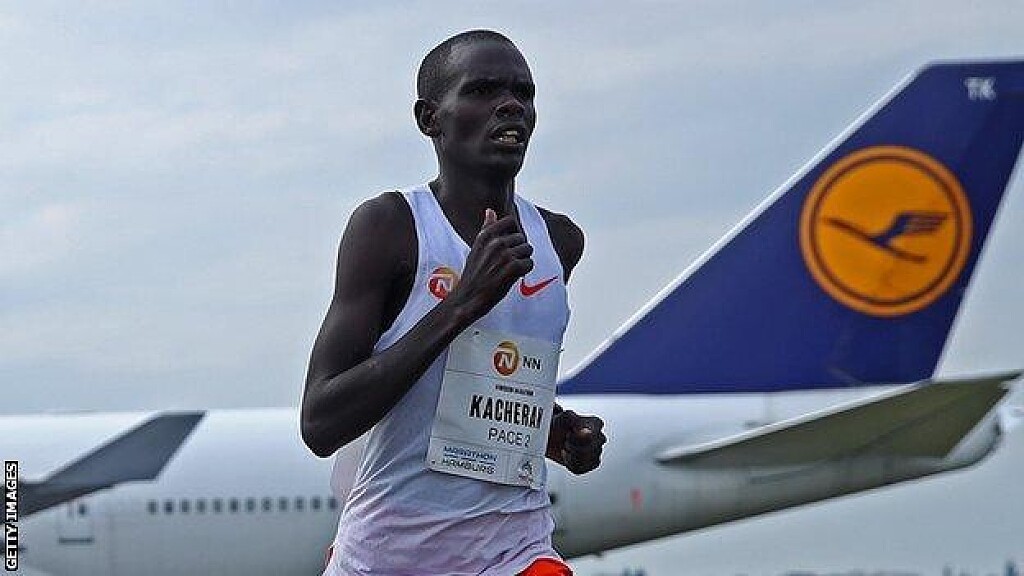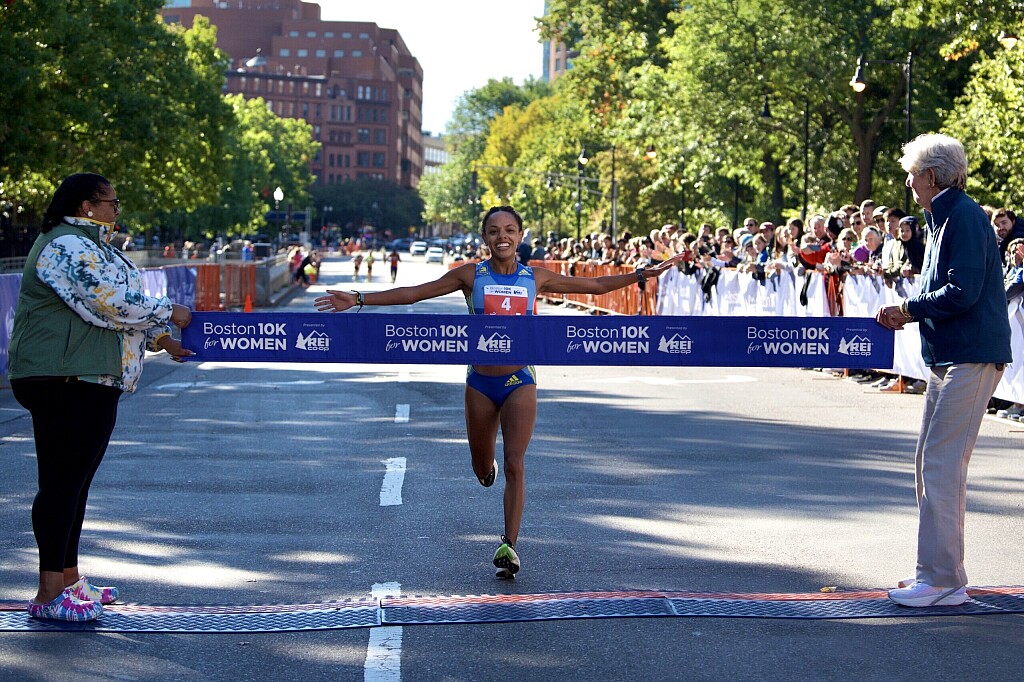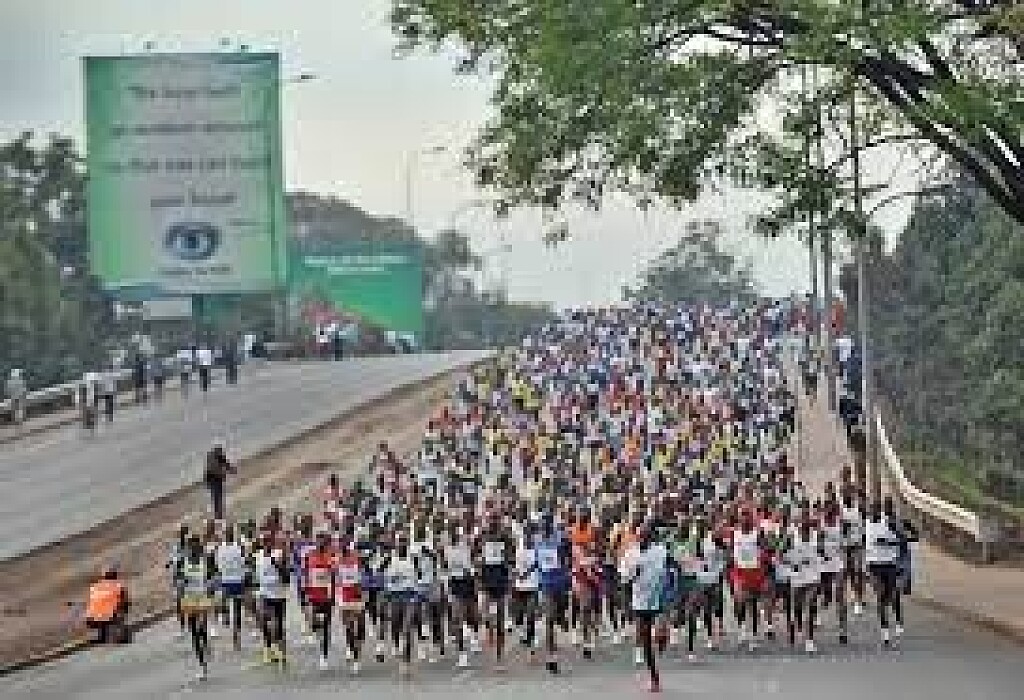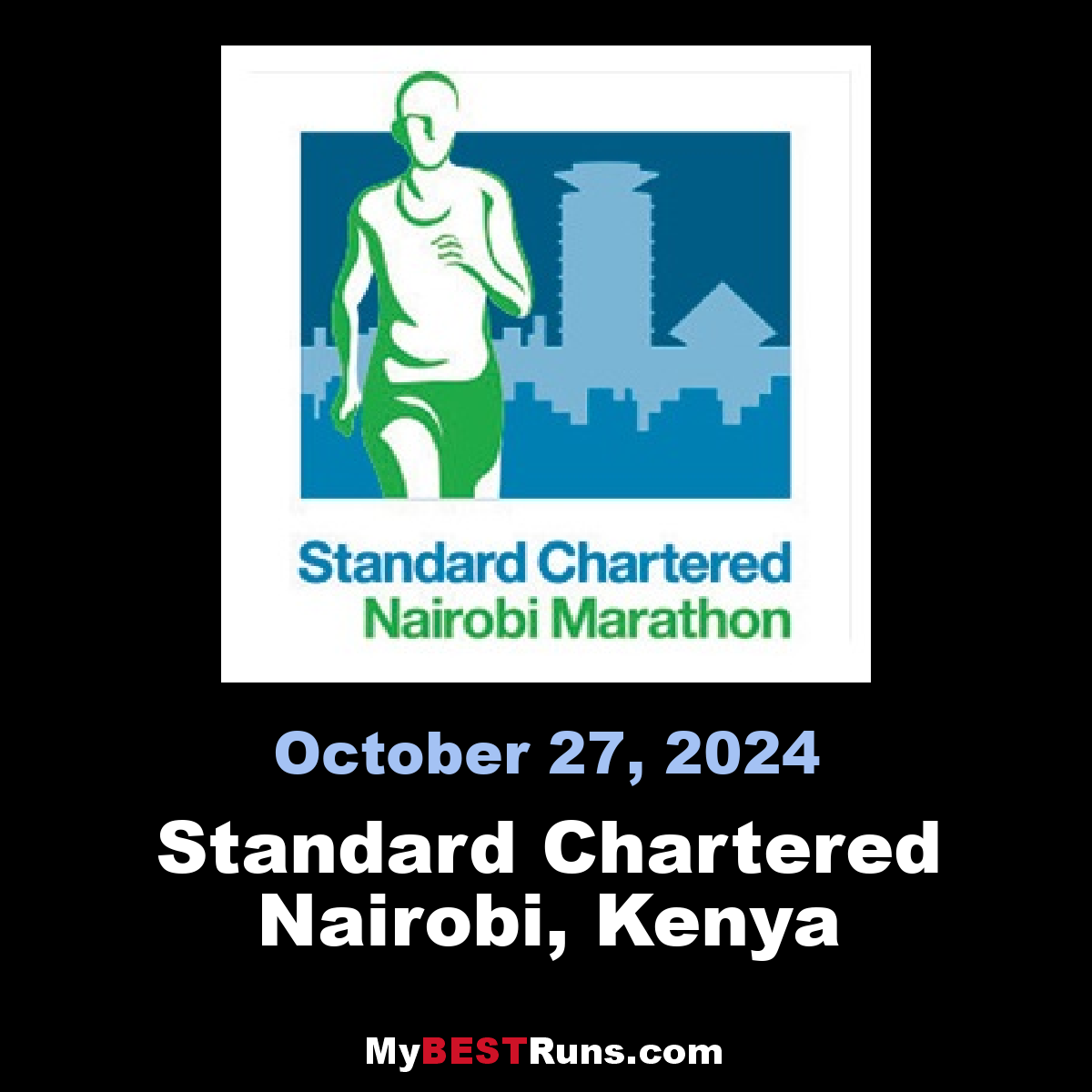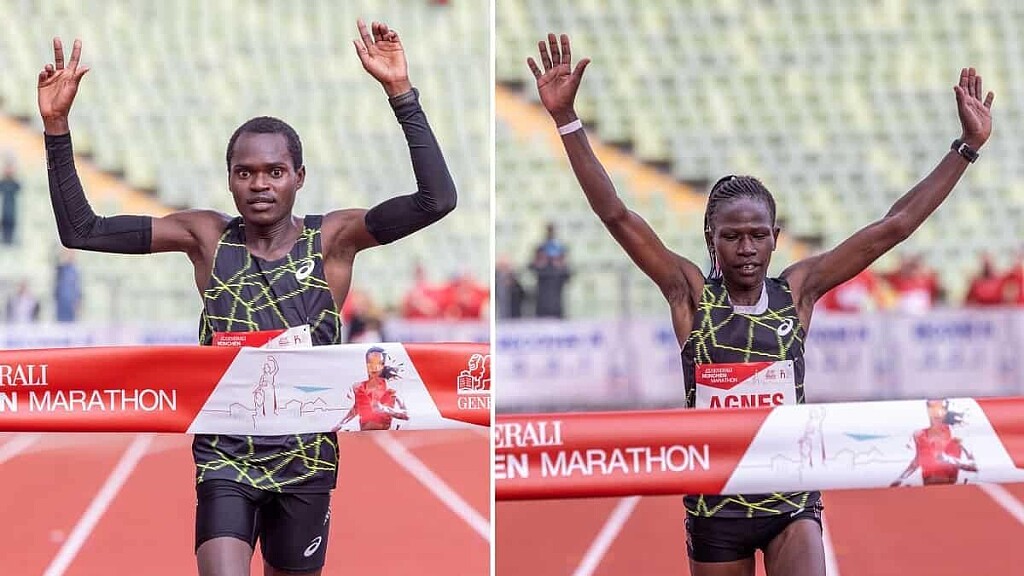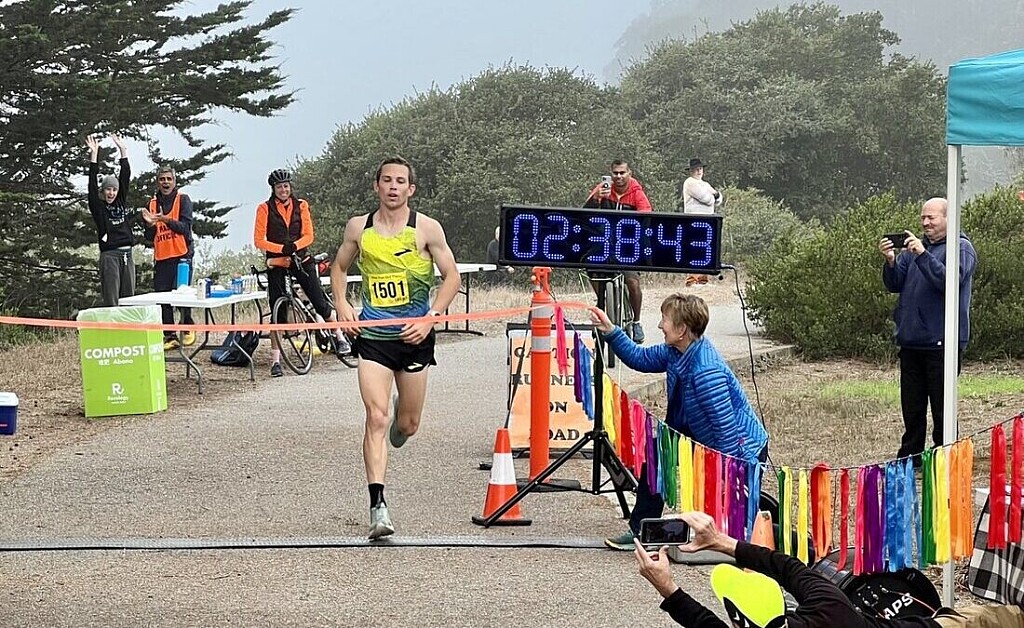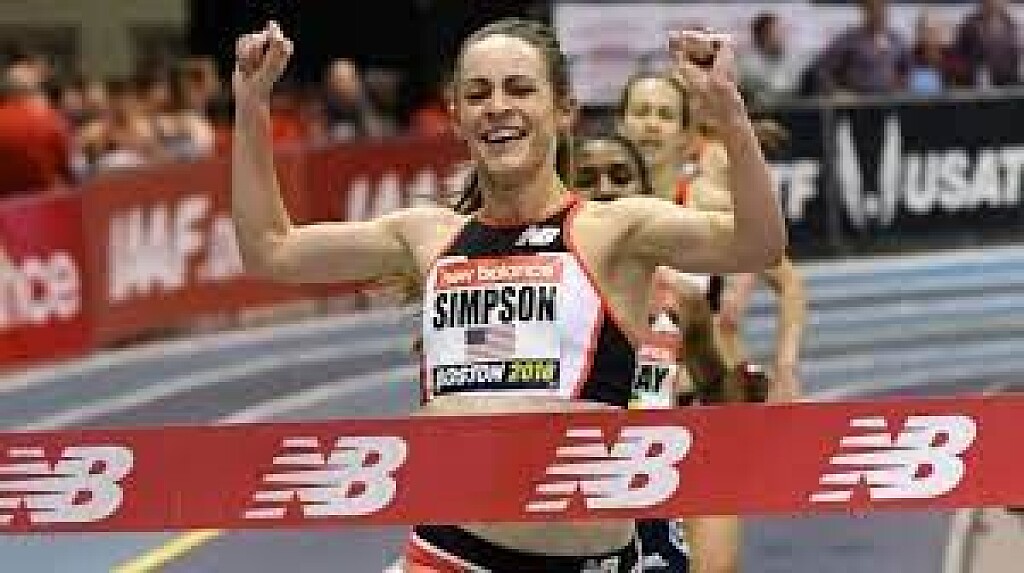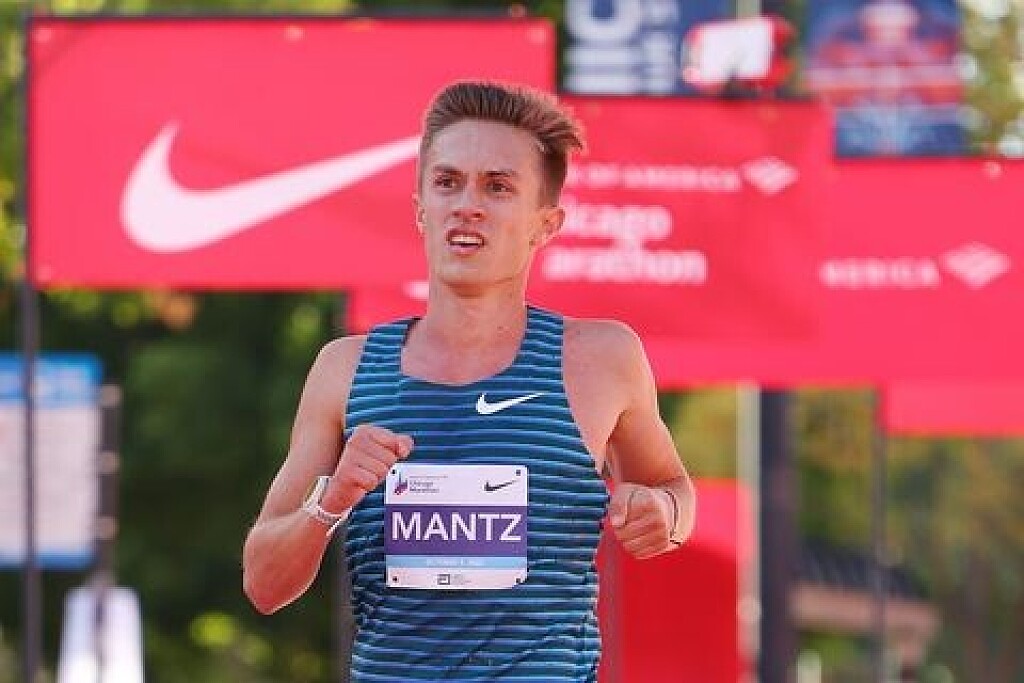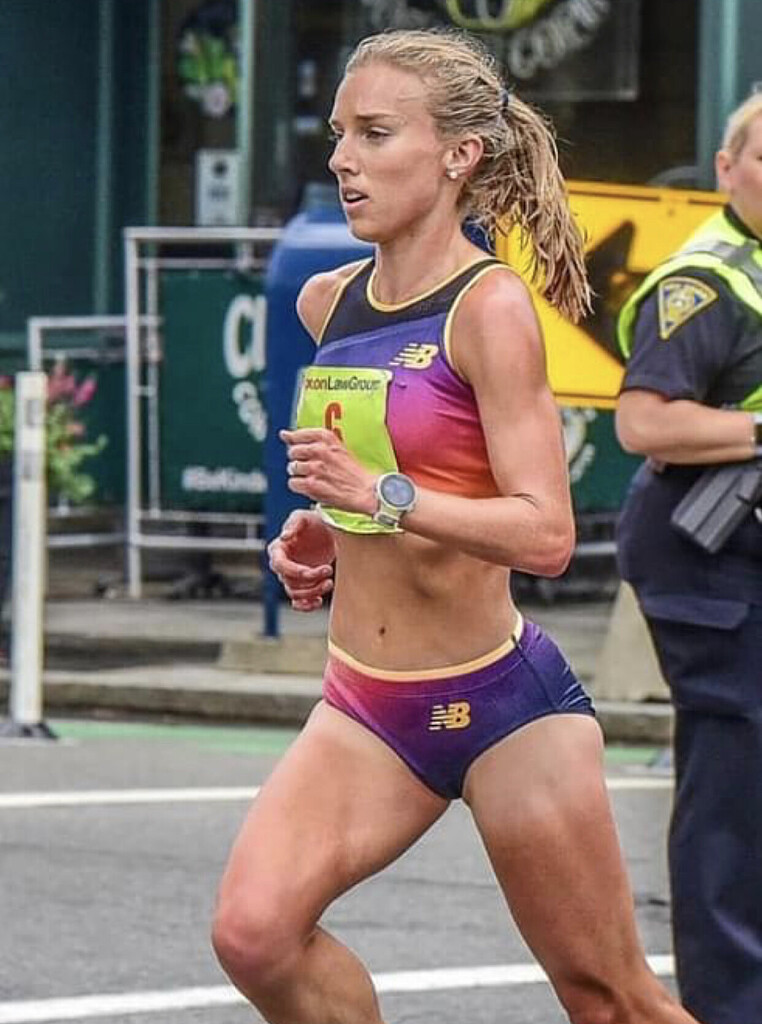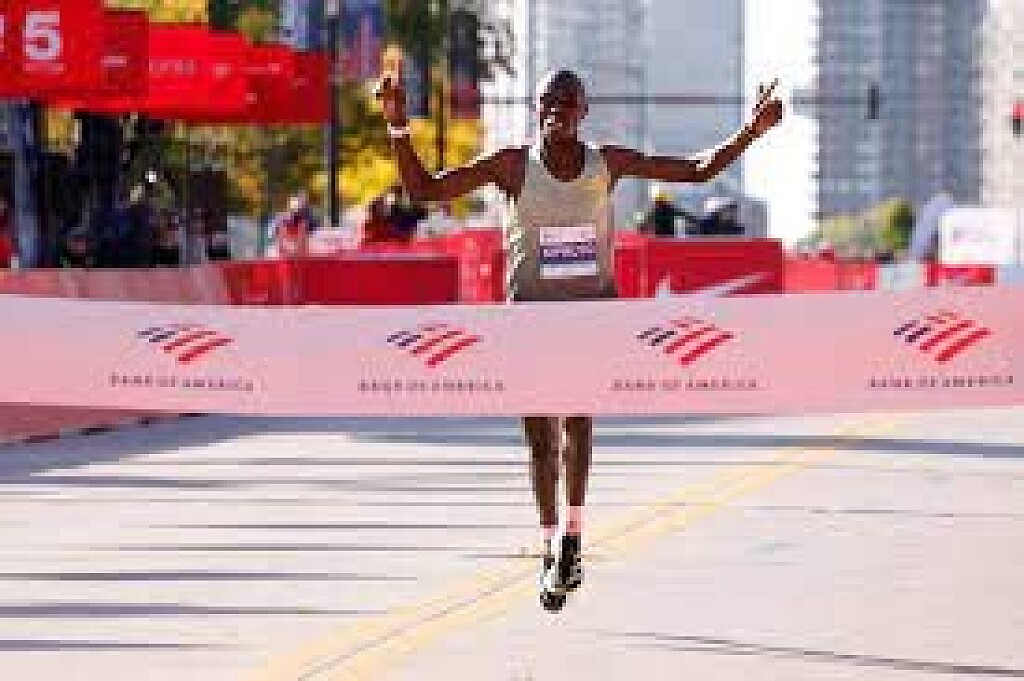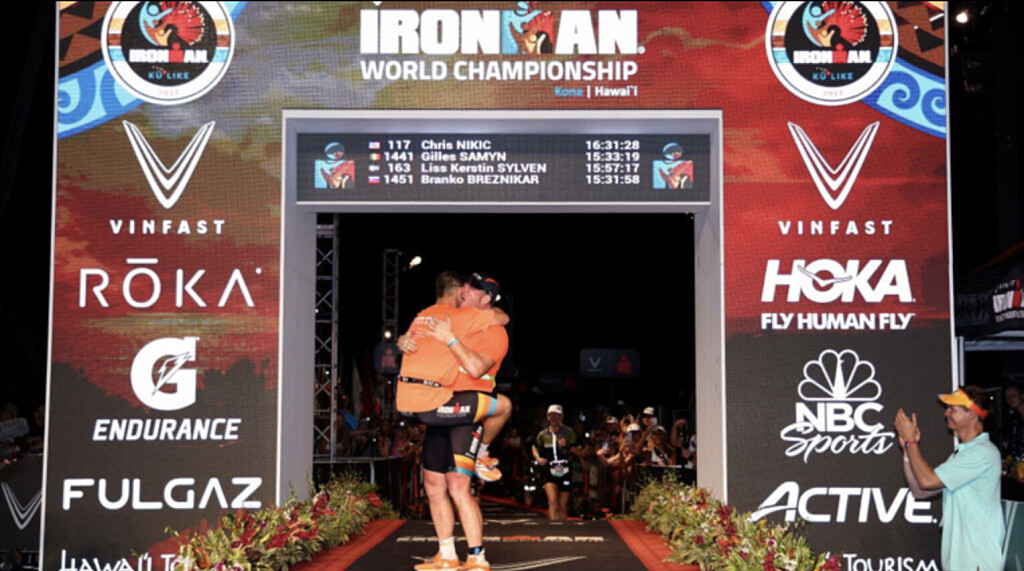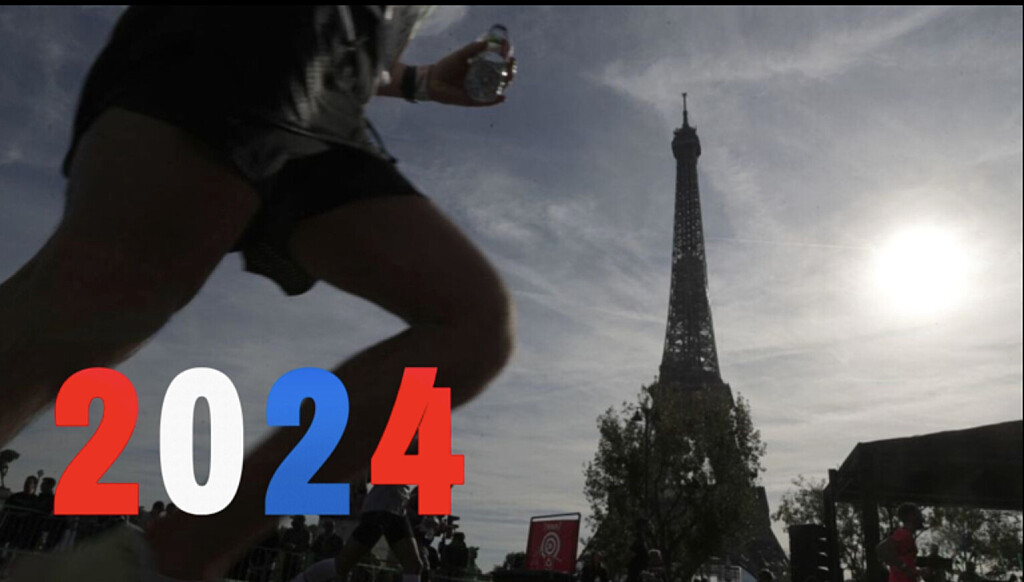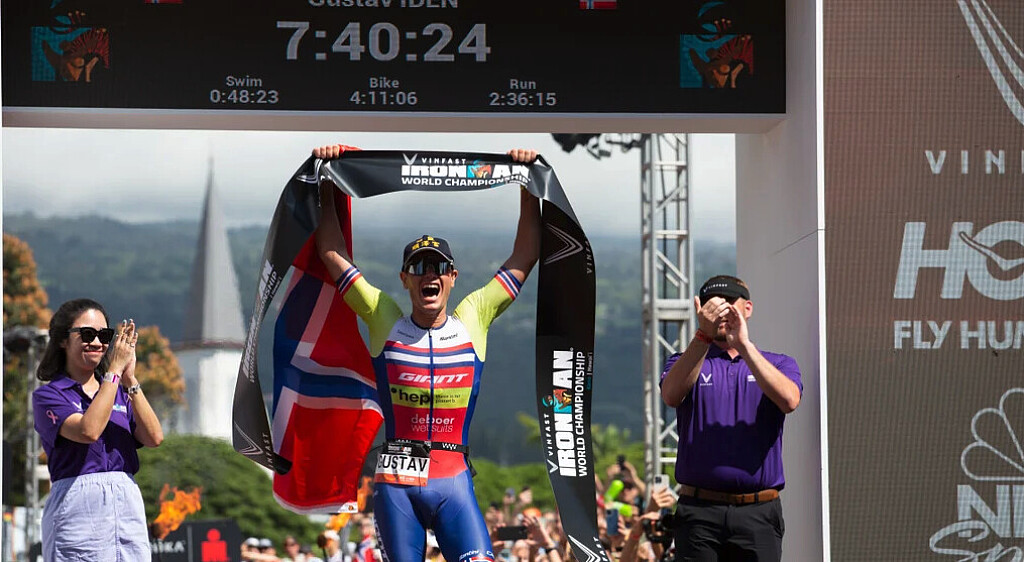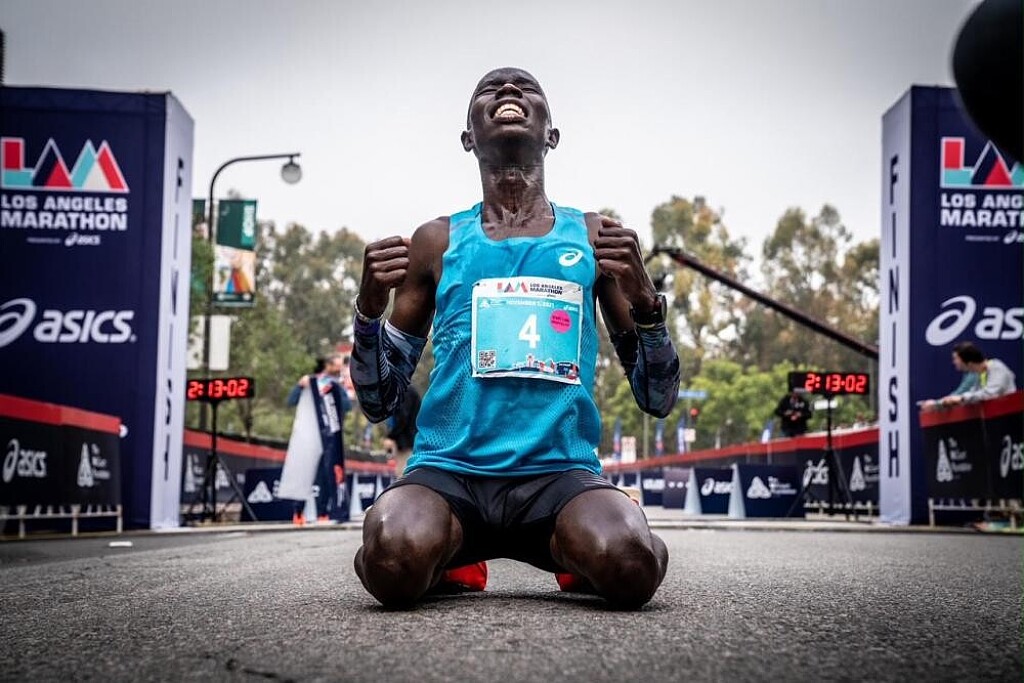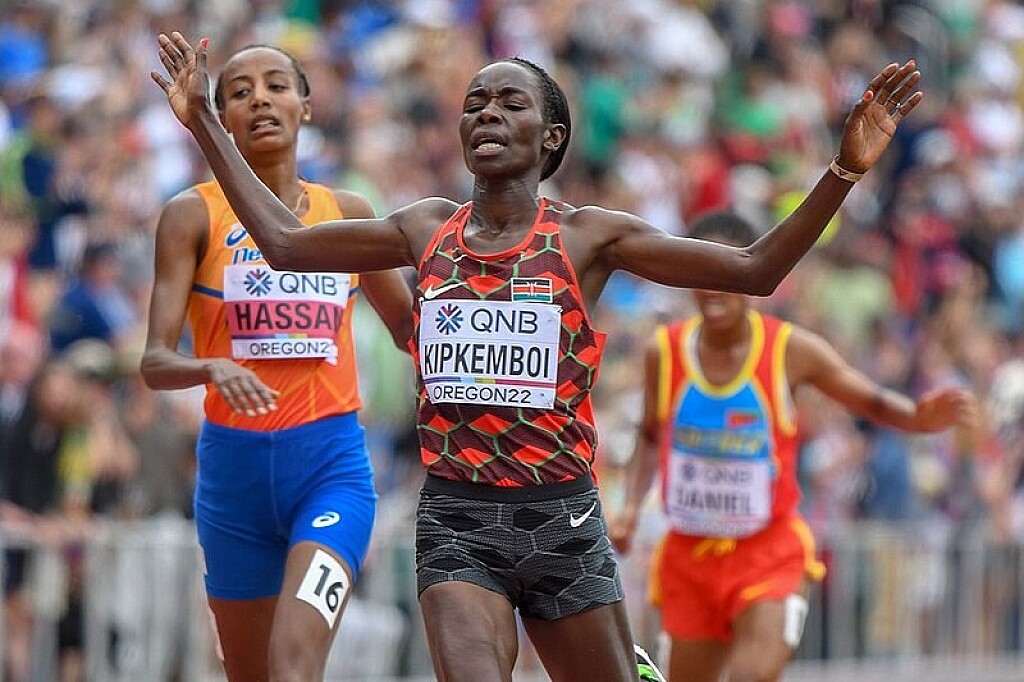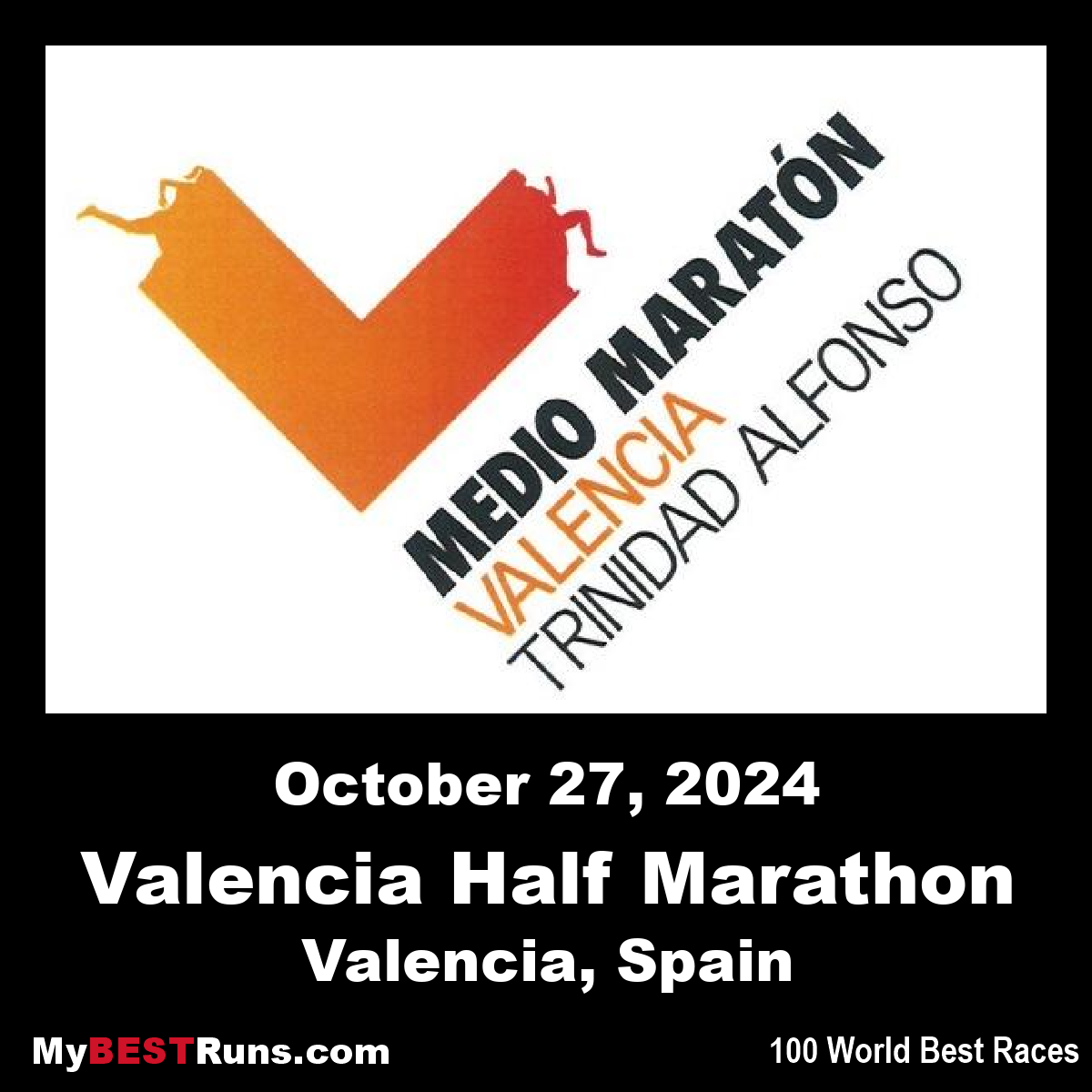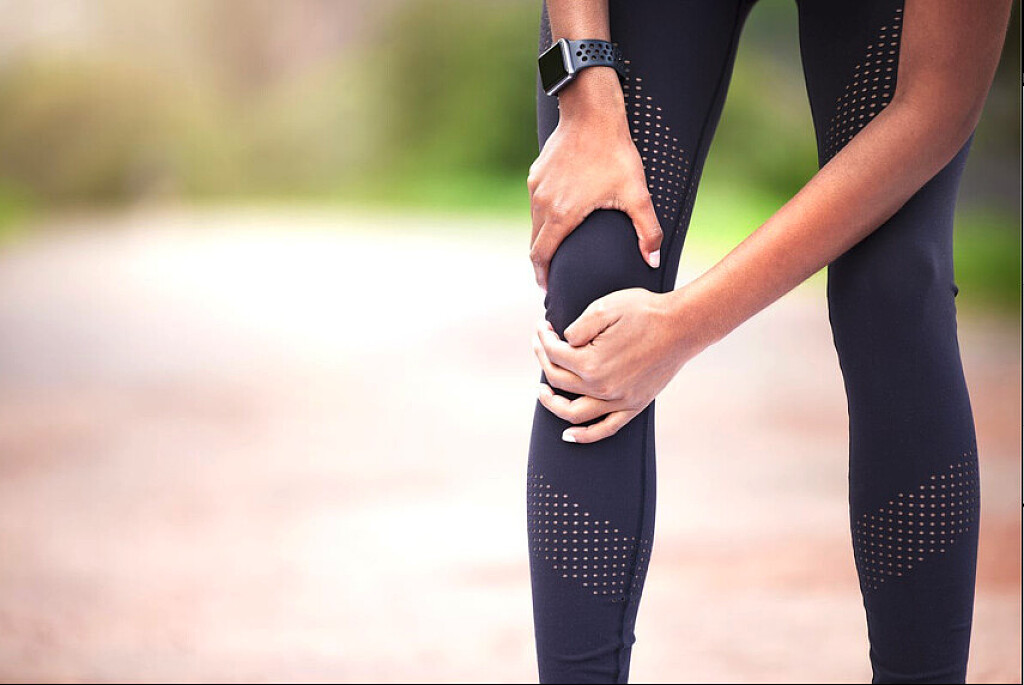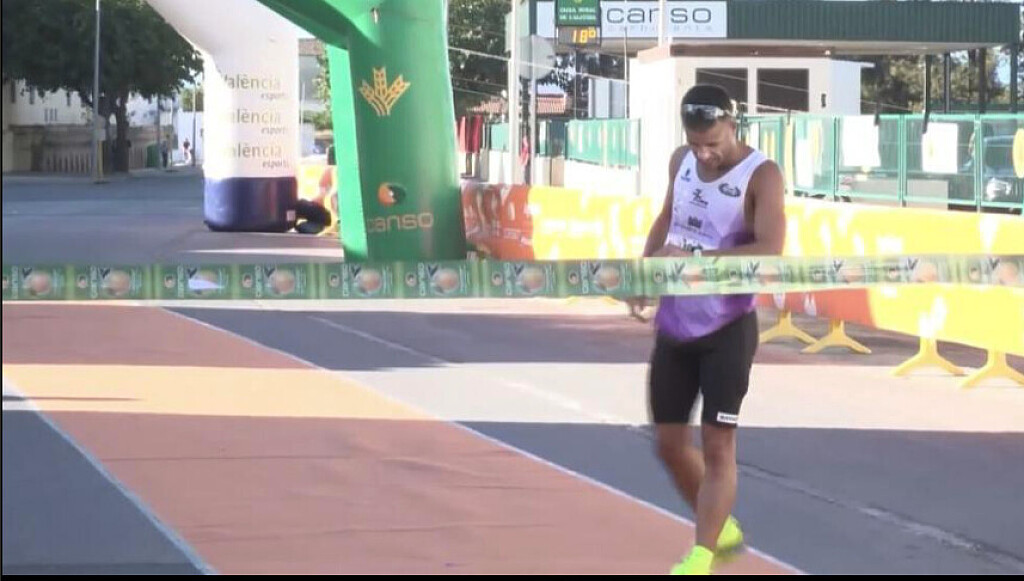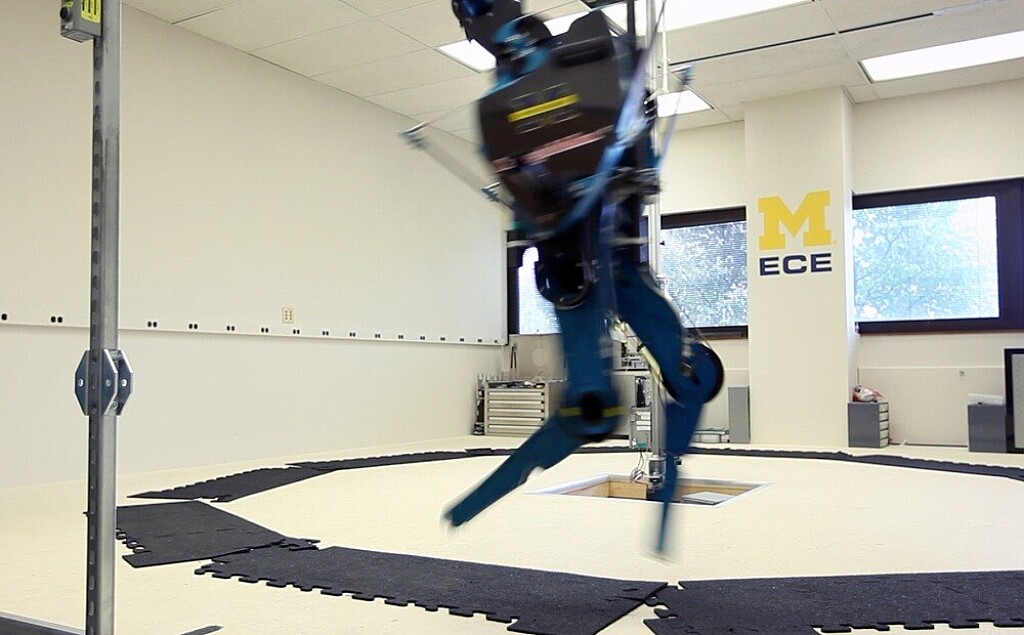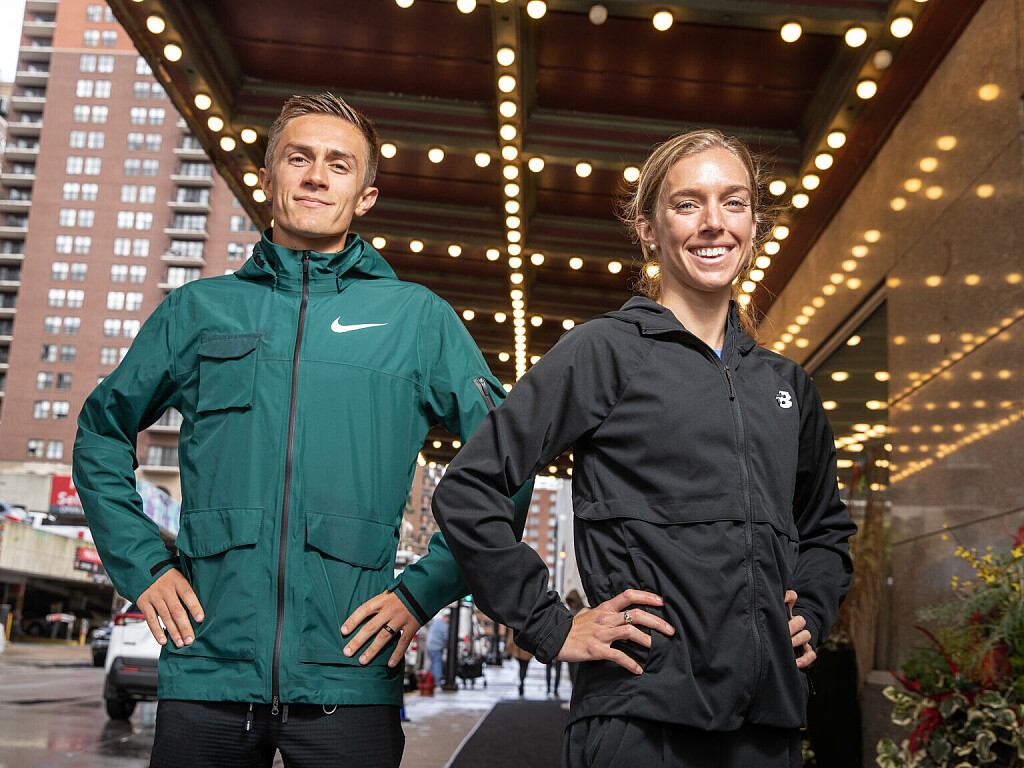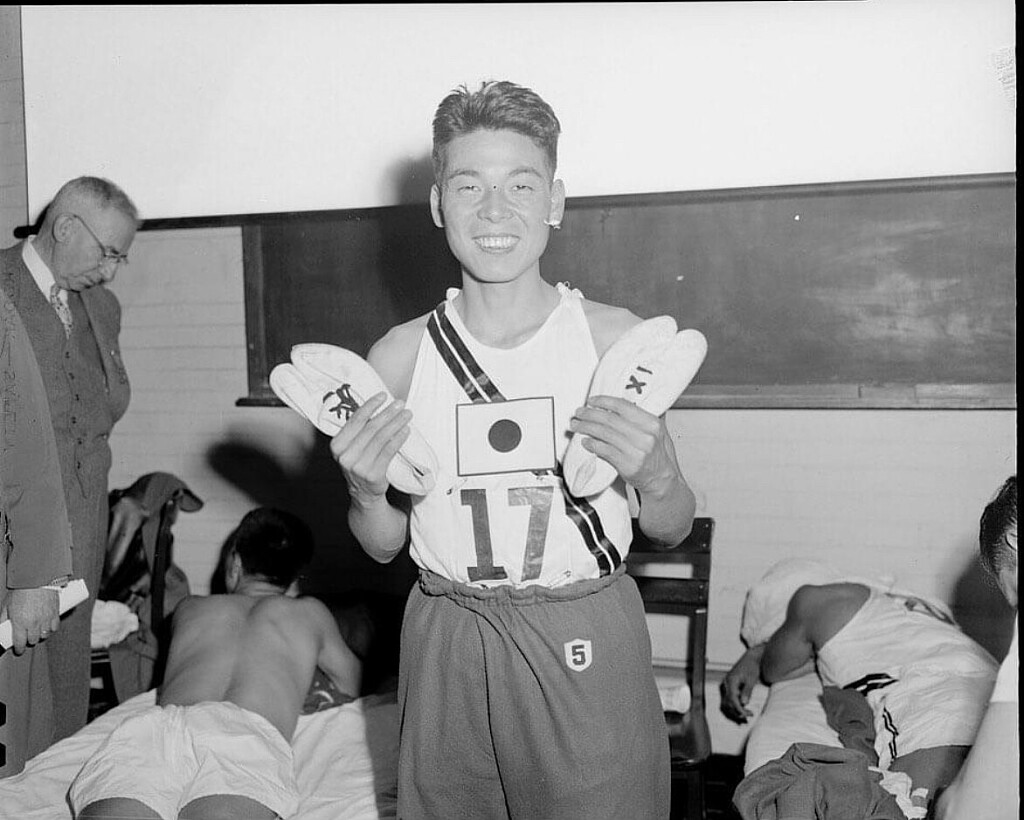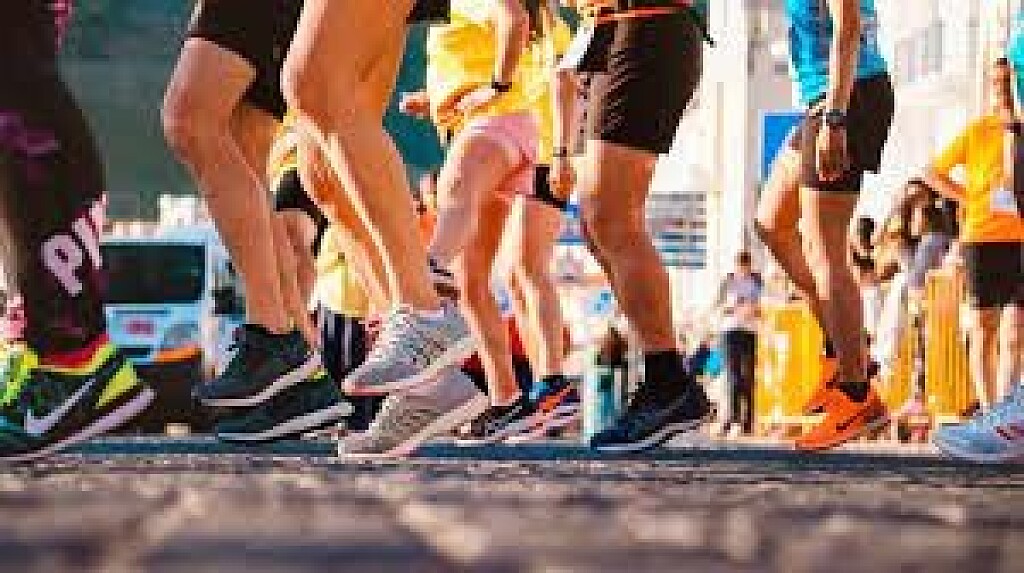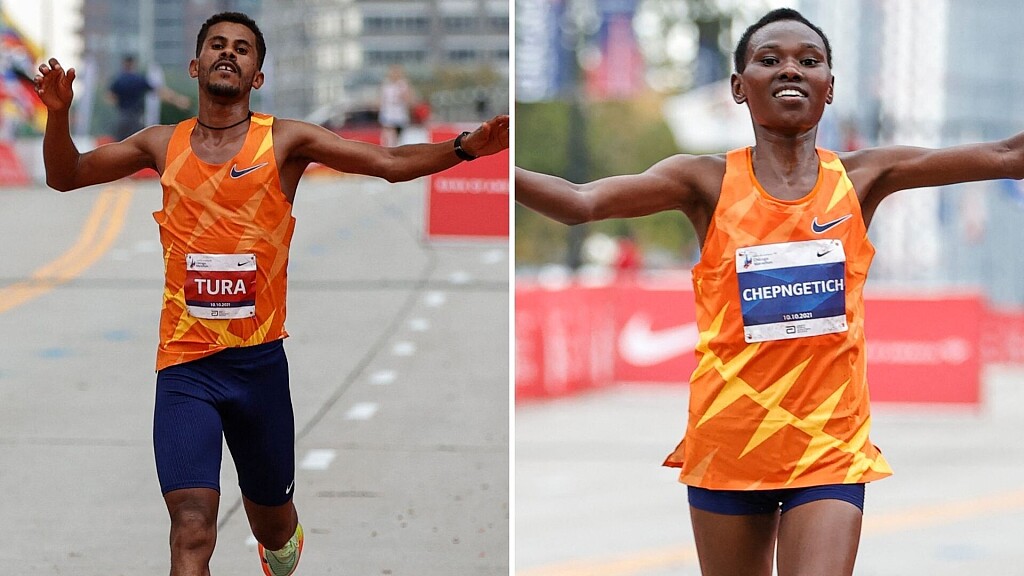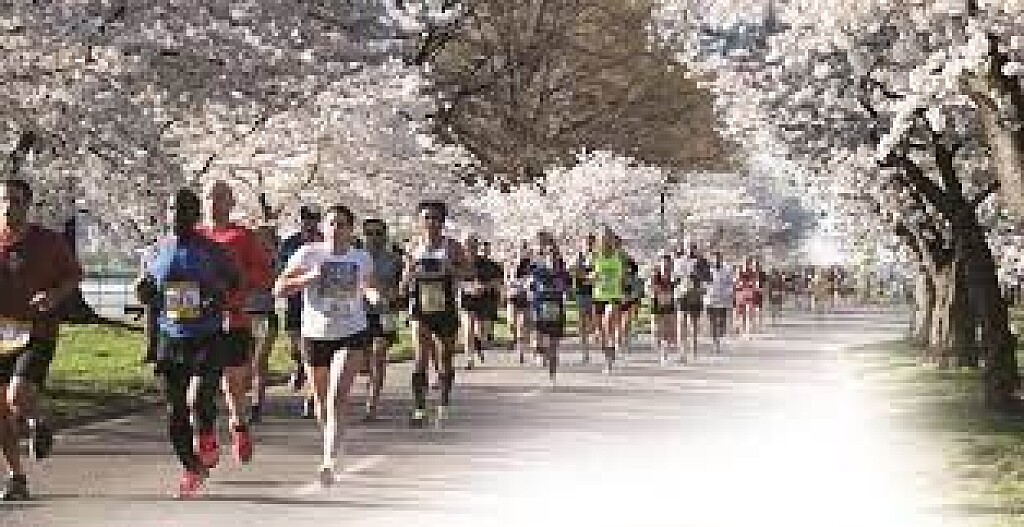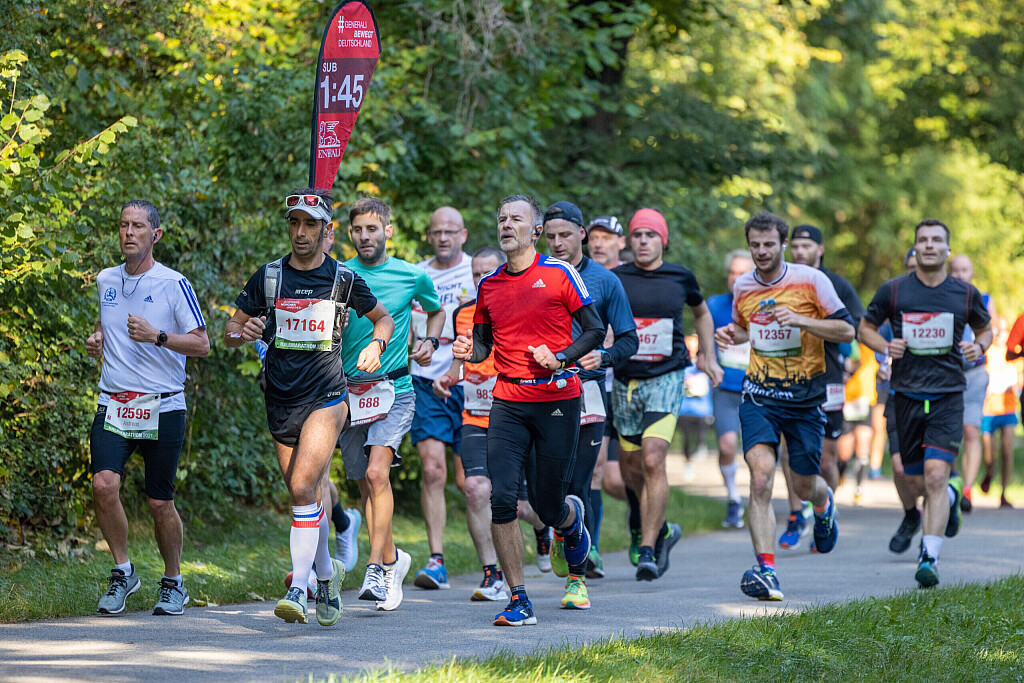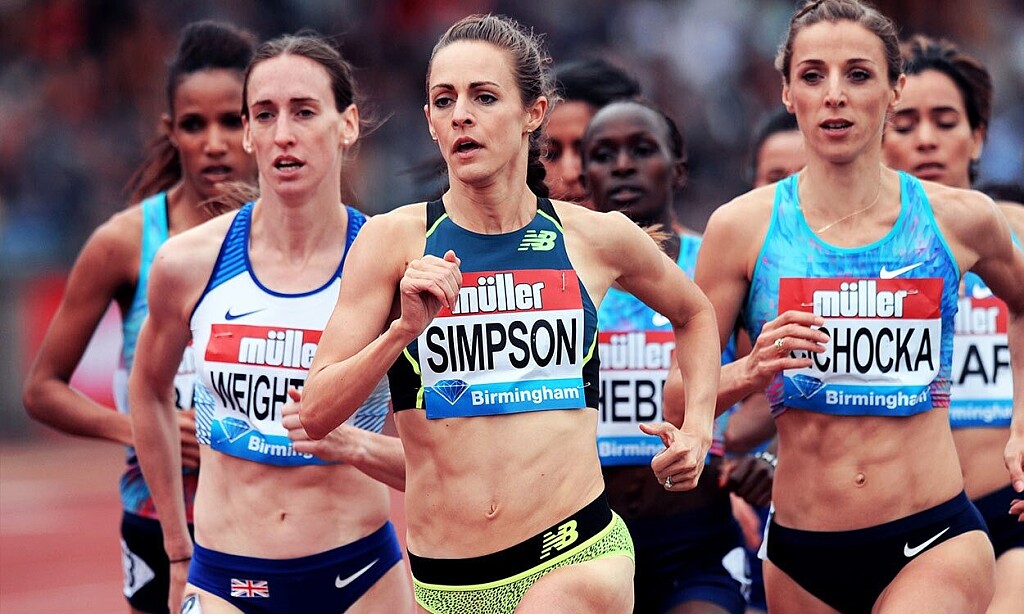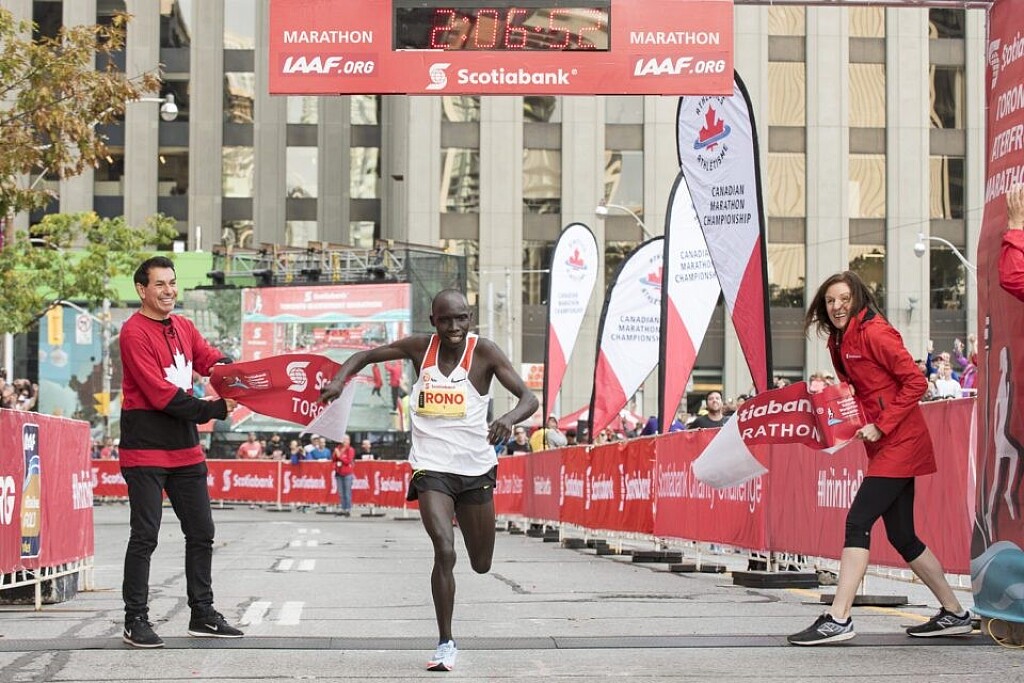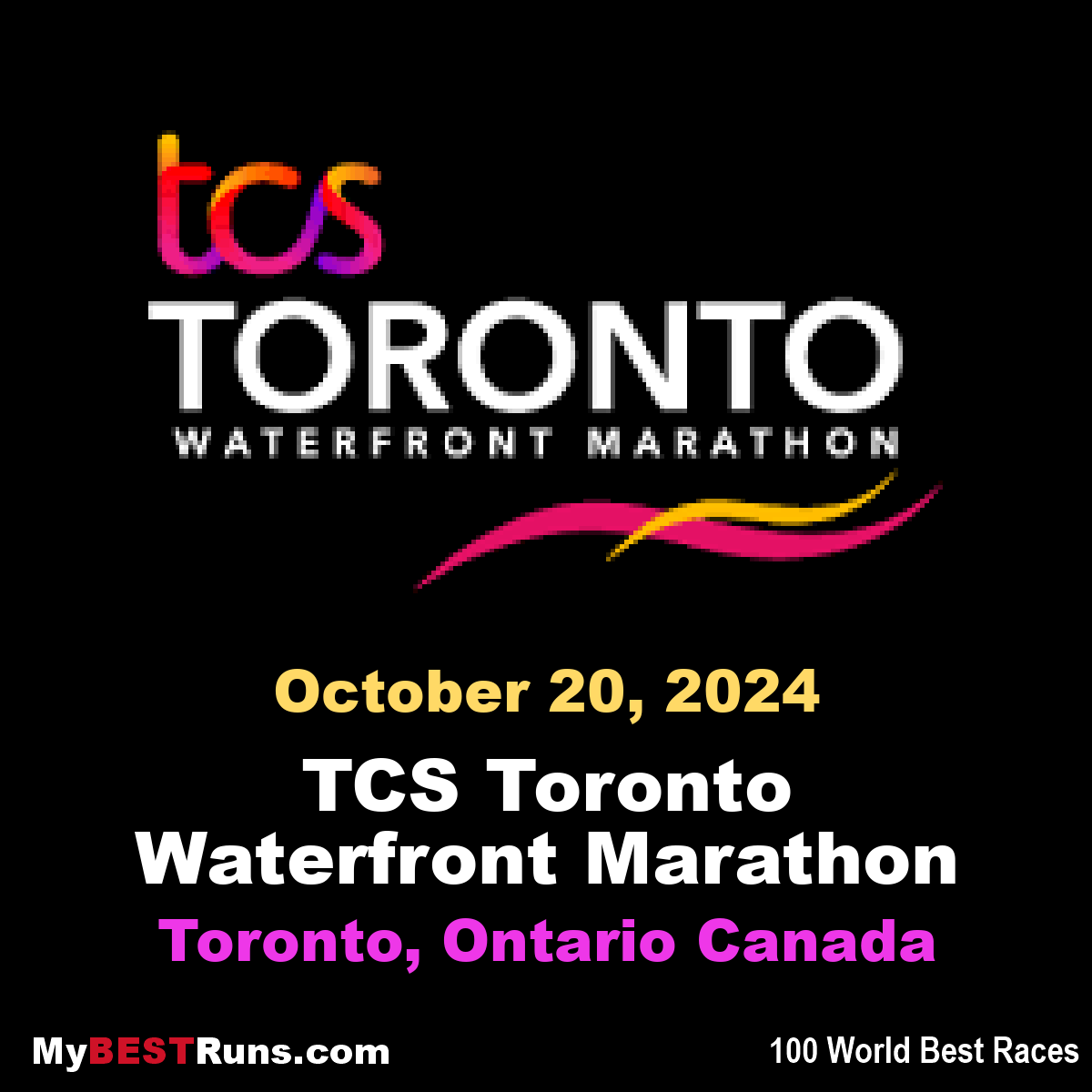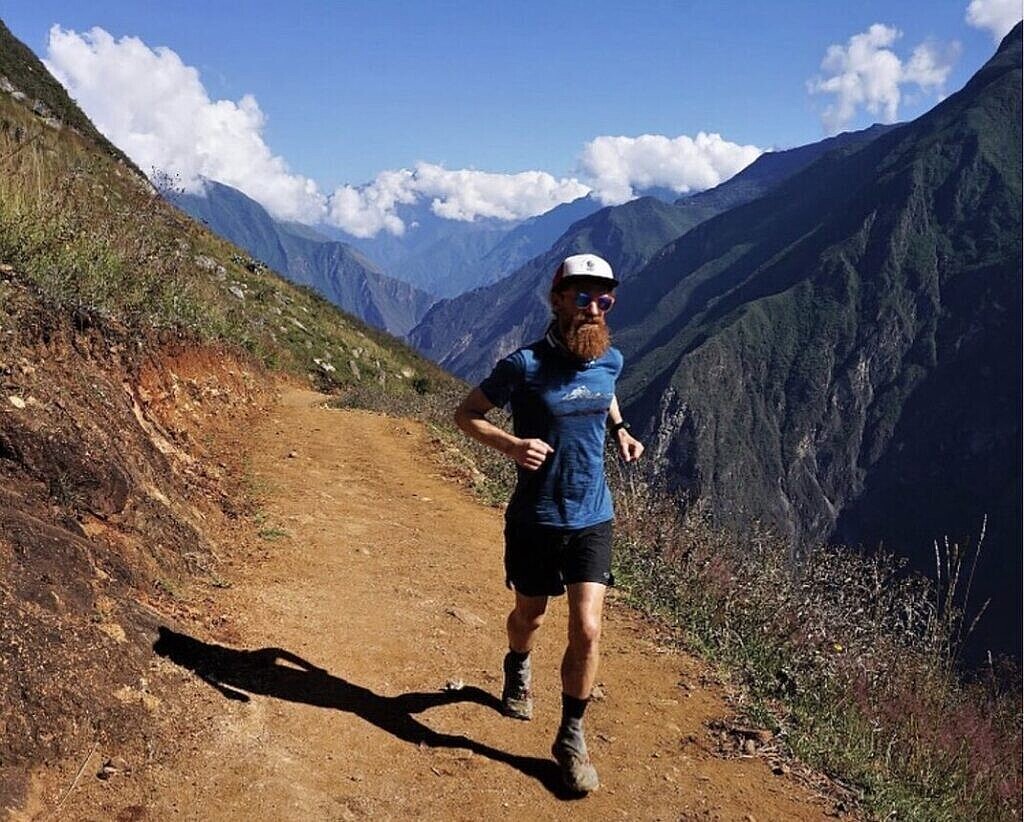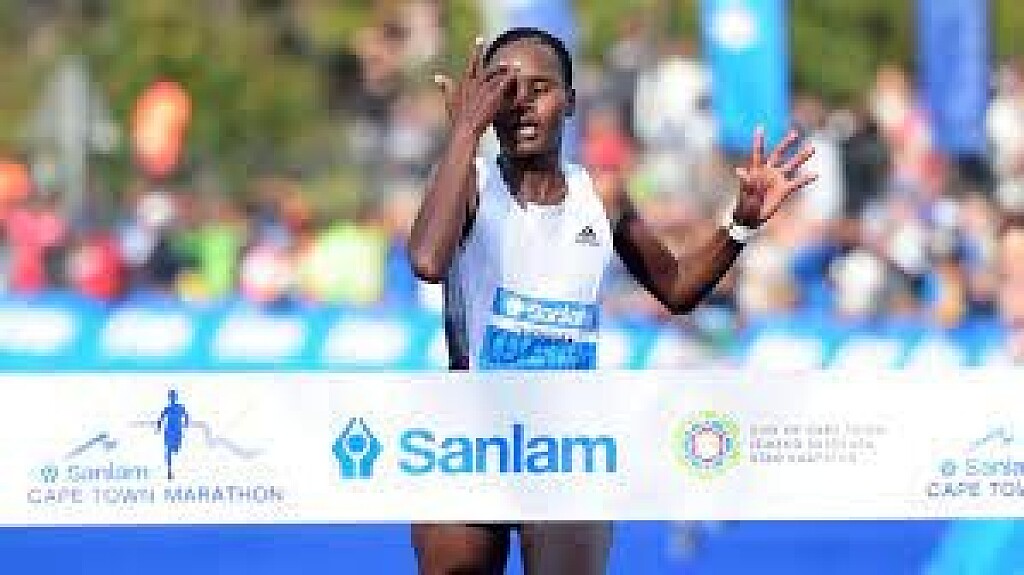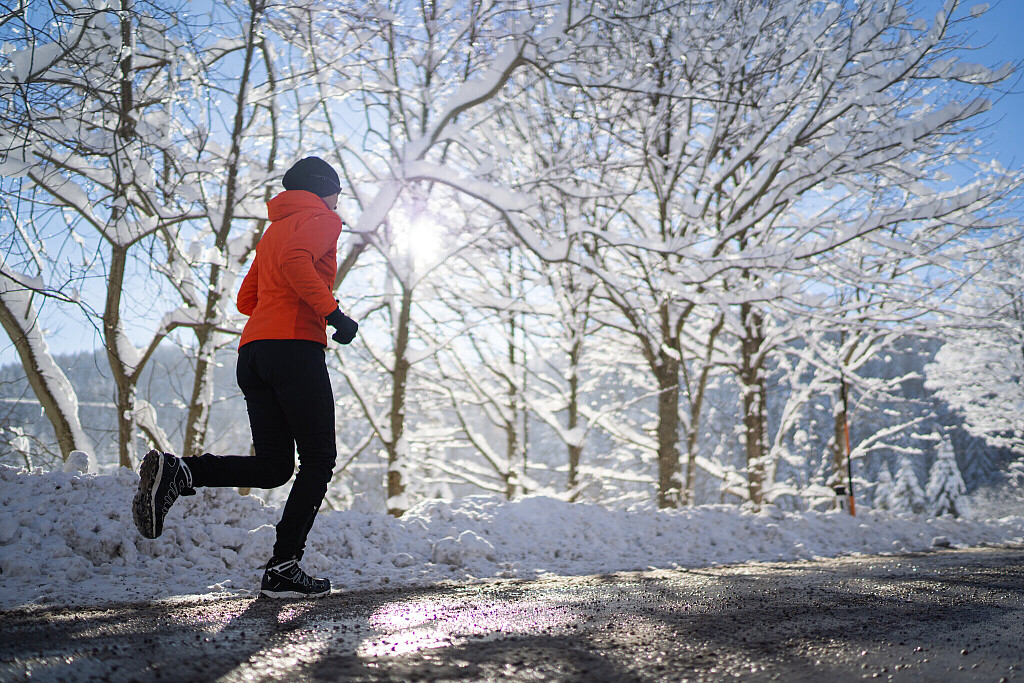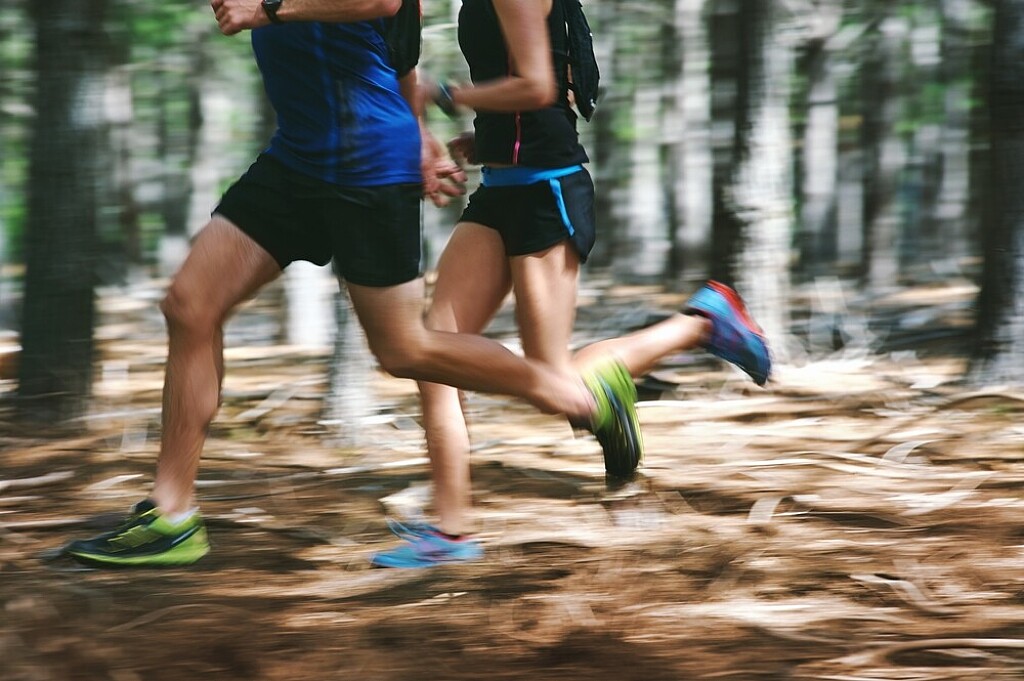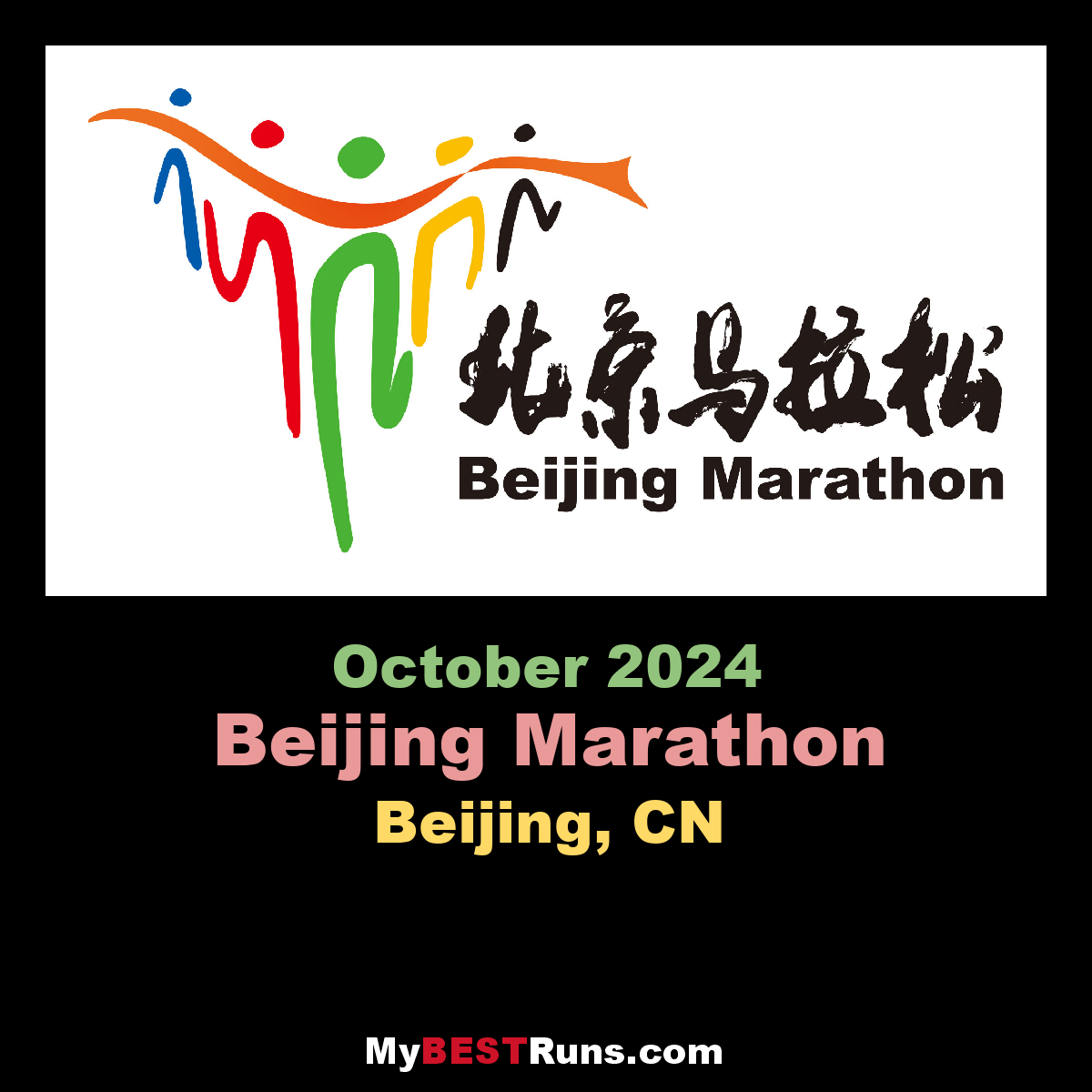Running News Daily
Running News Daily is edited by Bob Anderson. Send your news items to bob@mybestruns.com Advertising opportunities available. Train the Kenyan Way at KATA Kenya and Portugal owned and operated by Bob Anderson. Be sure to catch our movie A Long Run the movie KATA Running Camps and KATA Potato Farms - 31 now open in Kenya! https://kata.ke/
Index to Daily Posts · Sign Up For Updates · Run The World Feed
2021 Boston Marathon champion Diana Kipyokei suspended for doping violations
2021 Boston Marathon Diana Kipyokei, along with another Kenyan athlete, Betty Wilson Lempus (winner of the Harmonie Mutuelle Semi de Paris in September 2021) have been provisionally suspended for doping violations, including testing positive for prohibited substances and for tampering or attempting to tamper with the investigation.
Kipyokei tested positive for a metabolite of triamcinolone acetonide on Oct. 11, 2021, following her victory at Boston. Lempus tested positive for the same drug after her race in Paris on Sept. 5, but was initially cleared, based on her explanation for the positive test.
She has now been charged with providing false information.
Triamcinolone acetonide is prohibited under WADA’s category S9: glucocorticoids. In a press release, the Athletics Integrity Unit explains that glucocorticoids are sometimes used for therapeutic purposes but are prohibited in competition because they may enhance performance; athletes who test positive who cannot produce a therapeutic use exemption (TUE) are guilty of a doping violation and subject to suspension.
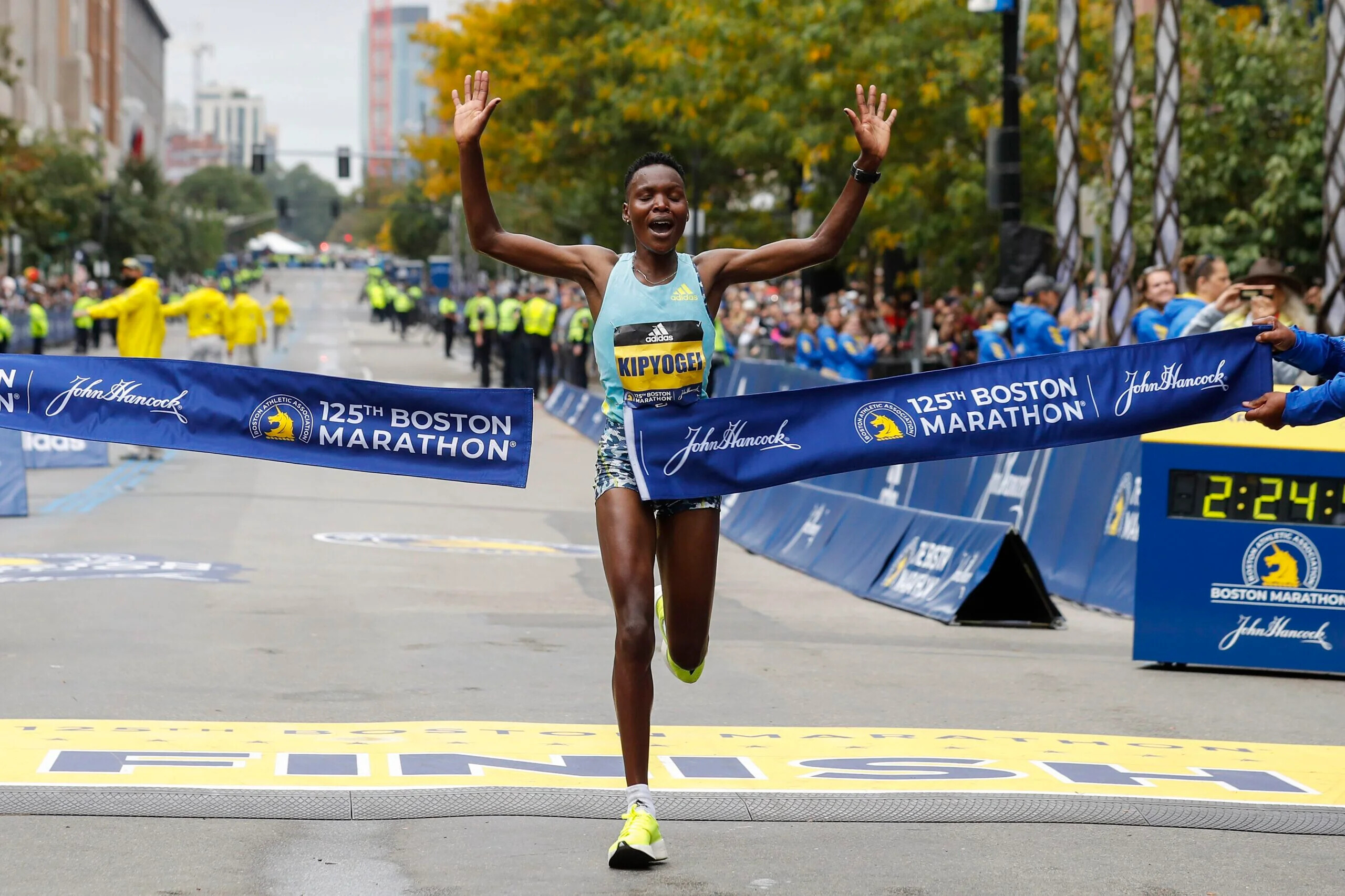
The press release goes on to state that 10 Kenyan athletes have tested positive for this substance between 2021 and 2022–a marked increase from previous years, including yesterday’s announcement of the suspension of Sierre Zinal winner Mark Kangogo for three years.
(10/14/2022) ⚡AMPby Anne Francis
Africa’s only Gold Label Marathon, Cape Town Marathon is this Sunday
Catch all the action from the Cape Town Marathon, Africa’s only Gold Label Marathon, on SuperSport this Sunday morning, with a stellar cast giving you their insights all the way through.
Tune in to SS Variety 4 from 6am on Sunday, October 16, where the likes of Thato Moeng, Bruce Fordyce, Gerda Steyn, Mosibodi Whitehead, and Cuan Walker will guide you from start to finish and break down every aspect of the race.
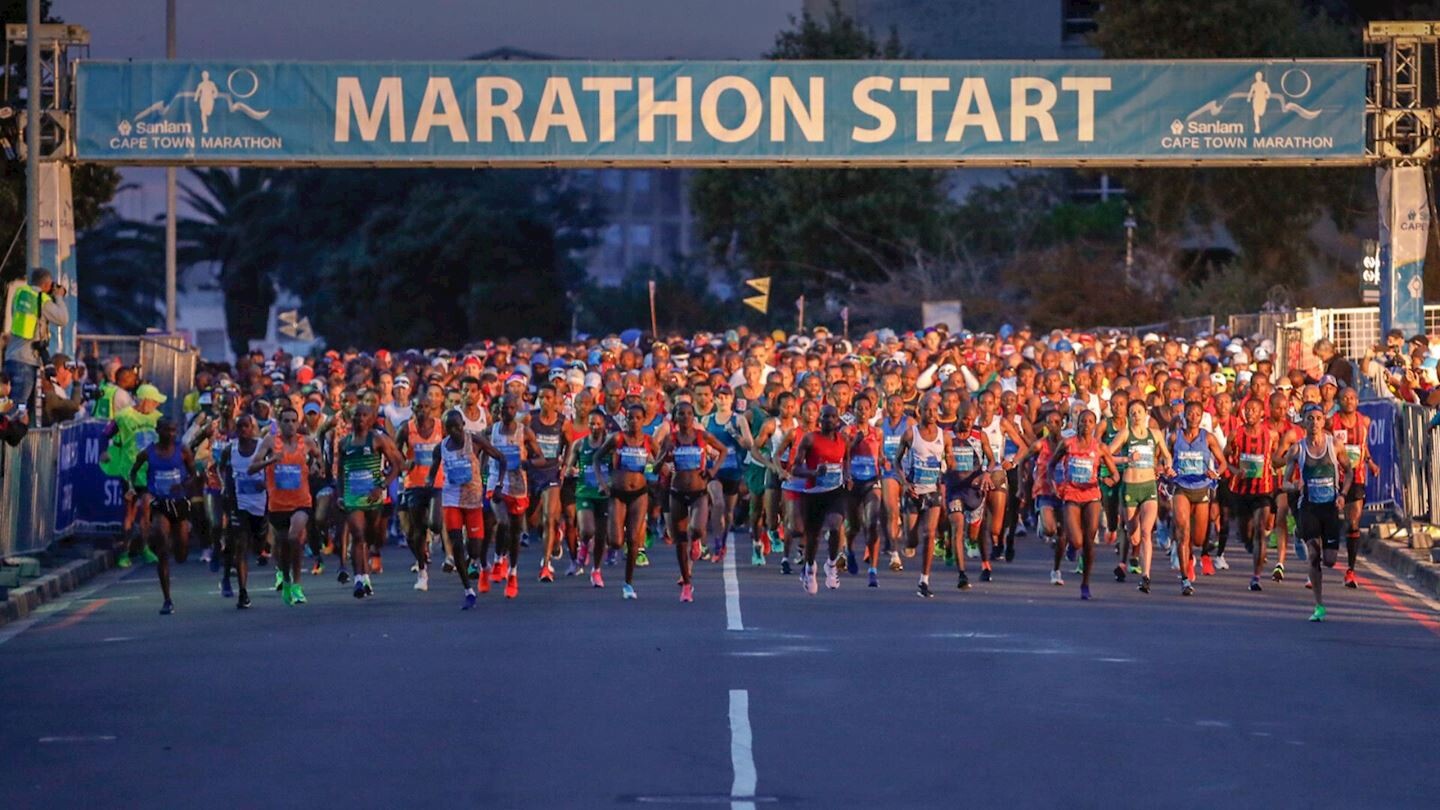
Defending champion Steven Mokoka and debutant Jenet Mbhele will spearhead the South African challenge for glory but will face stiff competition from their counterparts.
2021 runner-up Gebru Redahgne, from Ethiopia, will renew his rivalry with Mokoka at the front of the pack but Sibusiso Nzima, returning from an injury, will be hoping to make a successful comeback by at least claiming the final podium place, if not challenge the favourites for the win.
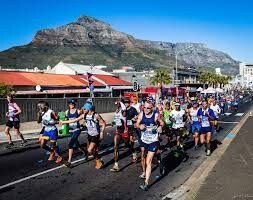
Mbhele’s title credentials will be put to the test by Peninsula Marathon winner Stella Marais, while Ethiopia’s Mereset Dinke will fancy her chances of mounting a challenge having set her marathon PB in Valencia at the end of 2021.
(10/14/2022) ⚡AMPCape Town Marathon
The Sanlam Cape Town Marathon is a City Marathon held in Cape Town, South Africa, which is sponsored by Sanlam, the City of Cape Town and Vital Health Foods. The marathon is held on a fast and flat course, starting and finishing in Green Point, near the Cape Town Stadium. Prior to existing in its current format, the Cape Town...
more...Ethiopians Dibaba and Ayana set for marathon debuts
Ethiopia’s world record-breaking duo step into the unknown by tackling 26.2 miles in Amsterdam on Sunday
Genzebe Dibaba and Almaz Ayana have earned their reputation on the track as world record-breaking endurance runners but on Sunday the Ethiopian duo make their marathon debut in Amsterdam.
Dibaba, 31, holds the world record for 1500m with 3:50.07 set in Monaco in 2015 but has also broken world records indoors at the mile, two miles, 2000m, 3000m and 5000m.
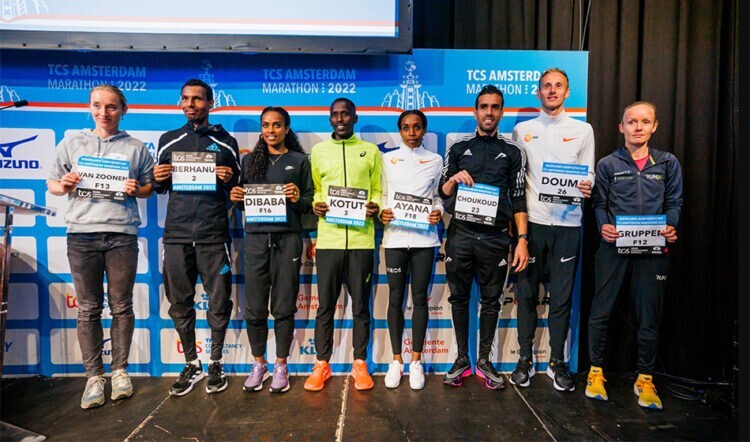
The furthest she has ever raced in 13.1 miles but she clocked a fast 65:18 when winning in Valencia in 2020. It was the fastest half-marathon debut by a woman in history at the time, but she has raced very sparingly since.
Ayana has also not raced much lately but at her peak in 2016 she won the Olympic 10,000m title in a world record of 29:17.45. The 30-year-old’s half-marathon best is 67:10 when placing third at the Great North Run last month.
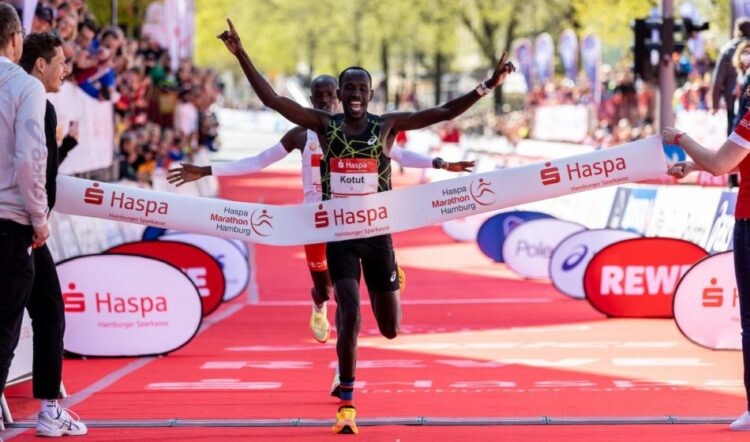
Speaking at the pre-event press conference at the city’s Vondelpark this week, Dibaba said: “I am going for a good time and a good position,” whereas Ayana looked similarly confident, saying simply: “I’m going to do well.”
The flat and fast course that winds around the Dutch city is known for producing fast times with the course records held by Tamirat Tola with 2:03:39 and Angela Tanui with 2:17:57 – both of which were set last year.
This year’s leading athletes in the men’s field are Cybrian Kotut and Lemi Berhanu. The former has won marathons in Hamburg, Paris and Florence and has a best of 2:04:47, whereas Berhanu run a best of 2:04:33 from Dubai in 2016 and he won the Boston Marathon in the same year.
The race for the Dutch title will be competitive, meanwhile, between Khalid Choukoud and Richard Douma in the men’s race and Jacelyn Gruppen and Eva van Zoonen for the women’s title.
The event is streamed on the event website and for UK viewers is being shown on Eurosport and Discovery+ channels.
(10/14/2022) ⚡AMPby Jason Henderson
TCS Amsterdam Marathon
Do you want to enjoy Amsterdam in October and all that the city has to offer you? Want to feel a real athlete and start and finish in the historic Olympic stadium? Or run across the widely discussed passage under the beautiful National Museum? Then come to Amsterdam for the annual TCS Amsterdam Marathon in October! The TCS Amsterdam Marathon...
more...Thousands of Kenyan runners dream about becoming a professional runner but most can not find the support needed to make it happen. Their conditioning fades as does their dream.
Most Kenyans under the age of 25 or so who run seriously are not doing it as recreation or for health reasons, they run because they think they have the ability to be a professional runner. A career where they can win enough prize money to provide for themselves and their family.
In the United States most runners of all ages run for recreation and or for health reasons. Most Americans do not even know a runner can make a living, a very good living from running races. The sport of professional running did not start until 1986 officially.
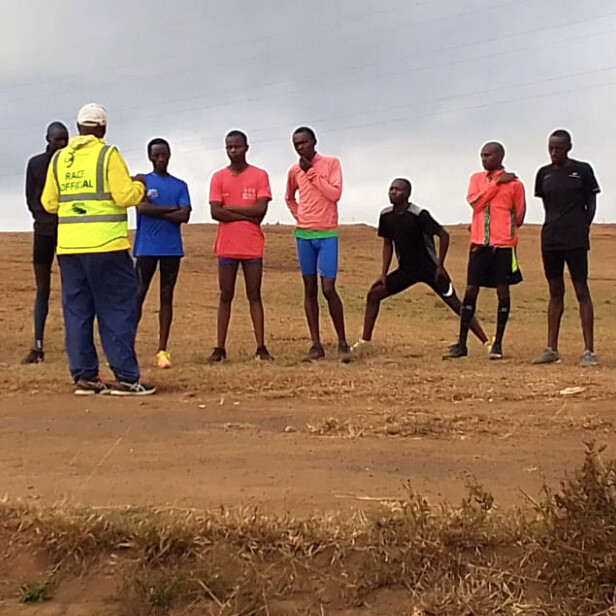
There are as many as 80,000 Kenyans who feel they have the talent to make it as a pro runner. Some have made it but most have not. Many feel they have the talent to become the next Eliud Kipchoge, the most well-known marathoner in history.
(First photo) Some of over 100 athletes who have trained at KATA since 2019. Charles (red shirt) is one of the top 60-69 runner in all of Kenya and has been part of the KATA since the beginning.
Eliud is their hero, and everyone knows Eliud is earning millions of dollars for his efforts and well deserved too. He has lowered the world record to 2:01:09 and he thinks he can run even faster.
The professional sport of running as become very competitive. Gone are the days where a man could run a half marathon in one hour and five minutes or a woman one hour eleven minutes and expect to win the race.
Maybe these times are still fast enough to win a race that does not offer prize money or very little but not races that pay out several thousand of dollars to their winners.
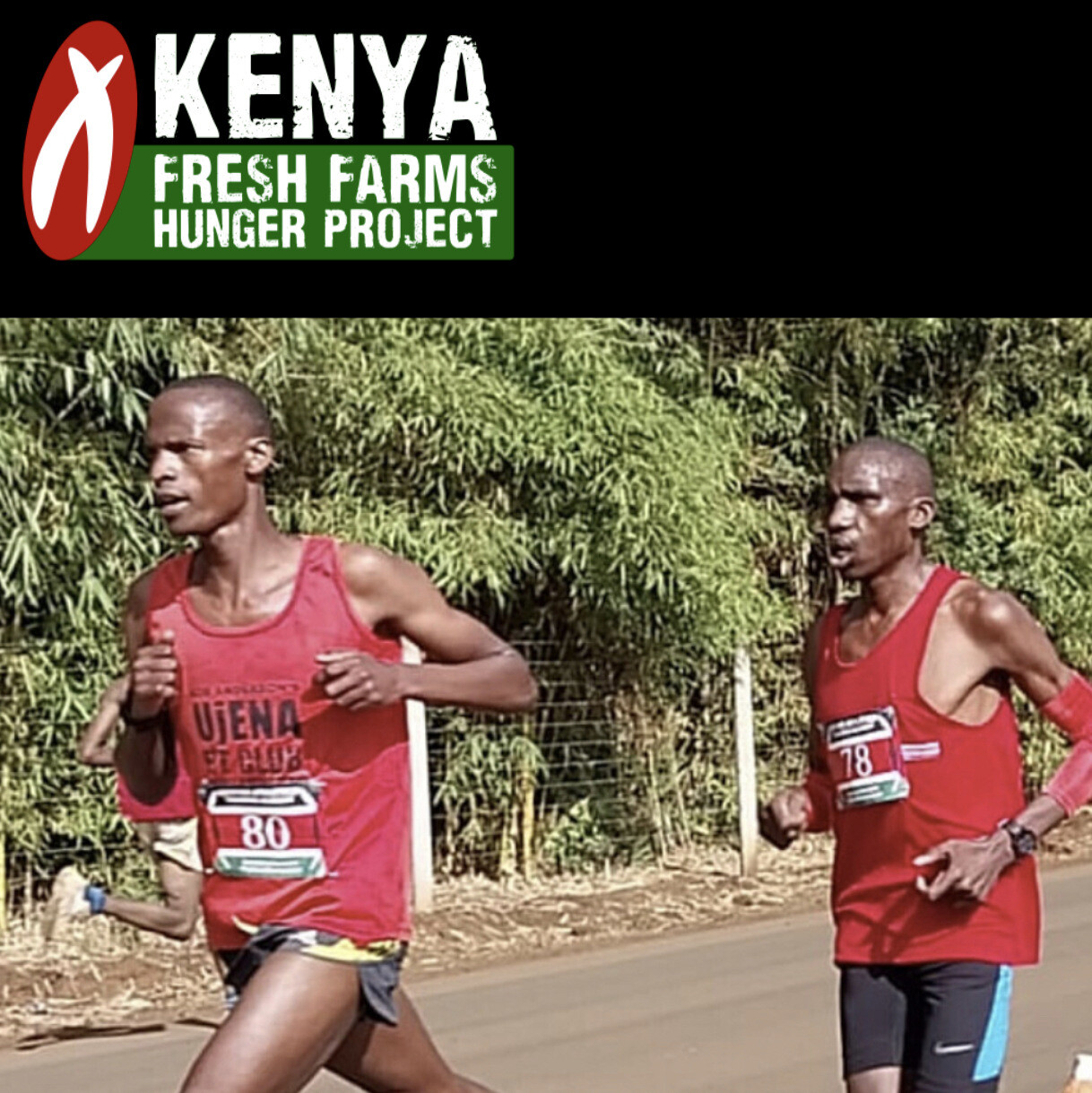
(Second photo) Coach Joseph going over a recent workout from KATA in Thika.
"There are thousands of Kenyans who want to be the next Kipchoge," says Joseph Ngure, Kenyan Athletics Training Academy in Thika (KATA) head coach. "They know they have at least some talent. They know they have the passion. They dream about winning races all the time.
"But many do not have any support. Their family may be very poor and have very little money, even for food. Their parents may not even know that professional running is a way for their son or daughter to make a living, in fact a very good living."
The family, however expects their son or daughter to go out and get a job so they can bring home money for food. Maybe a job on a farm or even in an office building. Yes, this would take care of the immediate issue of not having food and many potential professional runners have no choice but to take this path.
However, this most likely will make it almost impossible for them to fulfill their real dream. A much better career than working in the fields on a farm."It takes a lot of training these days to make it as a professional runner," says coach Joseph. "We train twice daily six days per week. And our athletes do more than just run 10 miles a day. It is a total program aimed at getting the most from the runner."
"And can you imagine training hungry," says Dan Sutich a coach from Washington. "It takes a lot of fuel to train to be a world class athlete. Just not going to happen if you are missing meals."
The talented runner needs support to make running their profession. If their parents can't help, who do they turn too? In most cases there is no one else. They attempt to do the necessary training (because they know they are talented) on their own and basically eat once in awhile.
But this is not going to last very long. And the chances of being discovered is almost impossible. Their shape will start fading away and they will just become another dreamer who never made it.
Also the type of training necessary to run quality times, burns a lot of calories that need to be replaced. Food they do not have without support.
If a son or daughter in the United States wants to be a professional soccer player and it is clear they are talented, they most likely would get the support they needed. They certainly would not be missing meals or going to bed regularly hungry.
Most parents in the US and in many other countries find a way to support their kids to pursue their passion. Or there are programs, like schorships offering support. This type of support does exist in Kenya but not for many.
Bob and Catherine Anderson created the Kenyan Athletics Training Academy (KATA) in Thika to help Kenyan runners become professional runners. The 23-room Academy trains, feed and house these runners was opened in 2020. Training for the location was started in 2019.
KATA offered the support they were not getting, three meals a day, twice a day training six days a week, a monthly time trial to gauge their fitness level and a clean place to sleep.
(Third photo) Peter Mwaniki leading one of the monthly KATA Time Trials. He clocked 29:00.9 for 10k. Then Oct 2, 2022 he won a half marathon in Italy clocking 1:00:29.
The Kenyan runner does not pay anything for these services. They are, however required to work 20 hours per week at KATA on things like cleaning, painting, computer work on the website My Best Runs (like posting results, links, etc.) and now operational duties for the KATA Hunger Project.
KATA also does not take a commission from their prize money if and when this happens. KATA does not manage runners, finding races and booking their travel. Managers come to KATA to find talent.
Coach Joseph, KATA's head coach has over 30 years of experience as a AK senior coach. He is very well respected. Additionally, he is working on a series of four books called Train the Kenyan Way which will be available over the next six months.
In a short period of time the training programs he has put together at KATA are showing good results.
Eston Mugo checked into KATA 14 months ago. He had run 36:50 for 10k, not a bad time but not good enough to make it as a pro runner. Eston was getting no support and not able to eat regularly. He needed support and he contacted KATA.
With a lot of hard work, Eston has already gotten his 10k time down to 30:04 (during a KATA monthly time trial) and will soon be under 30 minutes. He could already win many pro races, especially in the US and once he shaves off another minute he will be ready to travel to Europe.
Eston spends his required 20 hours a week mosly on the My Best Runs website. He has improved his computer skills in doing so and he is teaching other KATA athletes these skills as well.
Another example of coach Joseph's KATA success, is Peter Mwaniki. Peter's family and even his brother offered him no support. They did not believe that running could be a profession. They were poor and could not provide any support. He had run a 32:30 10k, a very good time for a recreational runner but not for a pro. Peter sought out KATA for support.
"After 13 weeks it was clear he was very talented," says KATA manager Florence Kimiti. "Our 13-week program was not officially established yet but the program had already been born."
KATA asked him to stay and he can for sure call himself a professional runner now. During the monthly KATA time trial he clocked a 29:00.9 10k at altitude. A manager picked him up and sent him to Italy to run races. Most recently he clocked a 1:00:29 half marathon (Oct 2, 2022), setting a new course record while winning by nearly two minutes.
KATA's new program is called the KATA Hunger Project (just launched August 1, 2022). The program offers support for runners from poor families for 13-weeks.
For now these runners would come to KATA in Thika for training and support. At the end of each week, they would be given four kilos of home-grown fresh fruits and vegetables grown on a KATA Fresh Farm.
The number of Kenyans in Need KATA can support will be based on the amount of contributions received by supporters. In addition to runners this program also supports women farmers.
During the 13-week time frame, he or she would be required to do our workouts and run in our monthly KATA time trial. The results along with a story and photos are posted on My Best Runs giving international exposure. These KATA time trials were started Sept, 2021 and have been held monthly without fail. Most have been 10ks but difference distances and surfaces are being added going forward.
Obviously in just 13-weeks almost no runners could improve so fast to make it as a pro. However, let say the monthly time trial is 10k, a male runner runs 36 minutes. Four weeks later he runs 32 minutes. And then runs 29:30 four weeks later.
"We know from experience this person has the DNA to become a star. a professional runner," says coach Joseph.
With the exposure he would get through My Best Runs and social media, he most likely will get picked up by a running camp or a manager. Or KATA will offer to take him or her in. The runner would have made the big step toward being a professional runner.
Right now the only training location is in Thika at KATA. "However, we will be setting up training at the KATA Fresh Farm about 10k from Embu and other locations," says KATA manager Florence.
In all cases, there will be daily (six days per week) training sessions, a monthly time trial and weekly four kilos of KATA food available for pick up. Those showing great promise may also be asked to come live, train and eat at KATA in Thika sooner than 90 days.
"We hope this project is going to help a lot of Kenyans," says Bob's wife Catherine. "As one of our supporters wrote, I can not imagine going without food wrote Dan Sutich." Dan contributed $114.40 to the project.
(10/13/2022) ⚡AMPby Bob Anderson
Sierre-Zinal champion Mark Kangogo of Kenya receives three-year doping ban
The trail running community has been rocked after the winner of Sierre-Zinal, a mountain race in the Swiss Alps, was slapped with a three-year ban for two prohibited substances (norandrosterone and triamcinolone acetonide). The Athletics Integrity Unit (AIU) has disqualified all of the results from Mark Kangogo of Kenya, dating to Aug. 13 (the date of the race) and Sierre-Zinal has decided to ultimately disqualify Kangogo.
In the past two months, Kangogo has collected victories at Sierre-Zinal and the Jungfrau Marathon, plus finished second at Thyon-Dixense, a 16.35 km trail race also in Switzerland.
The athlete provided an in-competition urine sample at the Sierre-Zinal, World Mountain Running Association (WMRA) World Cup race, held in Switzerland. The sample reported the presence of norandrosterone and triamcinolone acetonide.

Norandrosterone (19-NA) is the principal metabolite of the anabolic steroid nandrolone, which is used to aid recovery from injuries and increase muscle size, strength and power to help them train harder and longer. Triamcinolone acetonide is a steroid to aid muscle recovery and inflammation.
According to his coach, Julien Lyon, Kangogo has been removed from the On-sponsored Milimani Runners team. This team is a project from On that aims to bring trail running culture closer to athletes in Kenya.
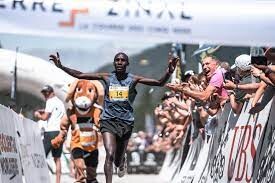
Lyon released a statement that Kangogo will be excluded from the team. “There is no excuse and no possible explanation for doping,” says Lyon. “It will take time for us to heal the painful feeling of being betrayed by a training partner, but we will continue to train with the same motivation and determination.”
Sierre-Zinal released a statement Thursday on the disqualification of Kangogo and including a change in the final men’s results of the 2022 edition: “Andreu Blanes (ESP) has officially become the winner of Sierre-Zinal 2022. He won the race in a time of 2:29:19.”
The race also expressed zero tolerance for doping.
As part of the Golden Trail World Series, Sierre-Zinal has implemented the “Quartz” anti-doping program to preserve the health and fairness of all athletes.
Blanes, who came second to Kangogo, and Kilian Jornet, who finished fifth, both took to social media to comment on the issue.
Kangogo, 31, acknowledged the offence, accepted a sanction and waived his right of appeal. His three-year ban will expire on Aug. 13, 2025.
(10/13/2022) ⚡AMPby Marley Dickinson
World marathon silver medalist Judith Korir keen to better performance at next year's World Champs
Judith Korir is looking to improve her performance in next year’s edition of the World Championships in Budapest.
The 2019 Venice Marathon champion placed second in 2:18:20 in the last edition of the global show in Oregon, USA.
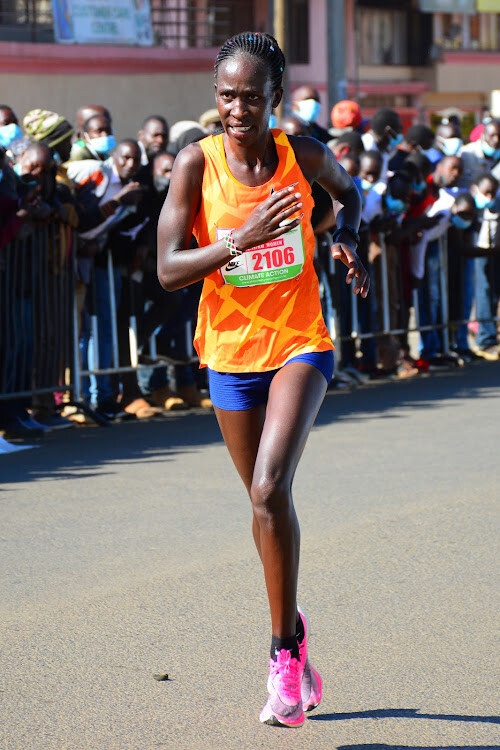
She said she identified her major setbacks during the global championships and she has been working on them in readiness for the next year's edition.
“I am looking forward to next year’s World Championships and this time, I want to win gold. I had issues with my speed and endurance. I did not have much experience but so far, I have learned a few ropes. If I get a chance to run any major marathon, I’ll also take it up,” Korir said.
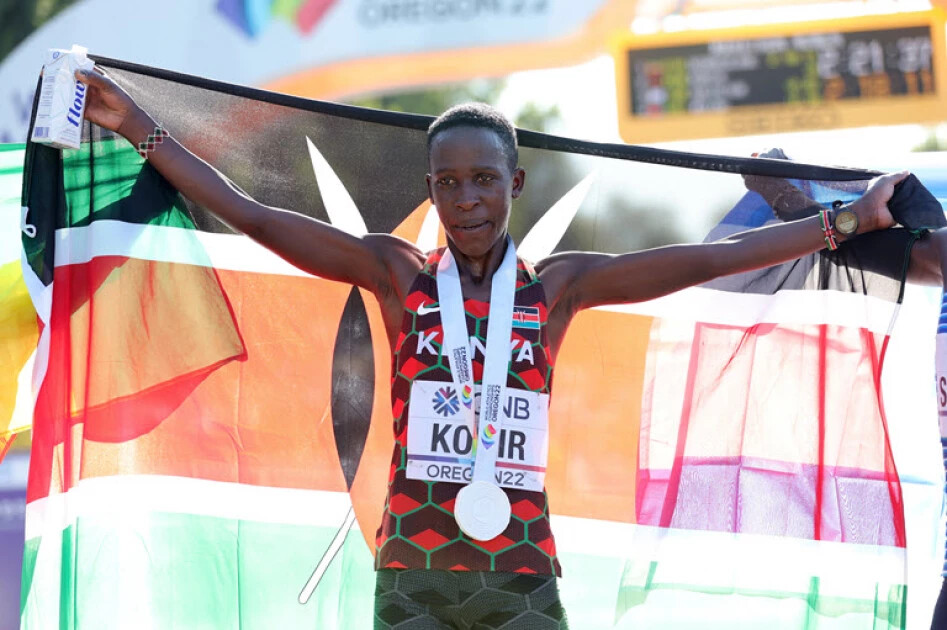
Korir has had a good season which kicked off with a win at the Paris Marathon (2:19:48), a second-place finish at the World Championships, and a fourth-place finish at the London Marathon (2:18:43) this month.
She expressed her excitement about her achievements and said she was happy to end her season on a high.
At the London Marathon, Korir was supposed to be a pacemaker but later joined the elite field at the last minute after Brigid Kosgei withdrew due to an injury.
Korir said she was not really prepared for London but decided to challenge herself.
“I am happy to end my season well and I feel good. In London, I had earlier been assigned the role of pacemaker and I hadn’t trained for the whole marathon. Being my first major, I decided to challenge myself. I believe the race has helped prepare me for other major races ahead,” she said.
The 2020 Izmir Marathon champion added that she looks up to women’s marathon record holder Brigid Kosgei.
“Kosgei is disciplined and she is also a good adviser. She also helps us during training sessions,” she said, adding that her husband who is also her pacemaker, Michael Douglas, and her coach Erick Maiyo have played key roles in her success.
Korir recalled she started running during her high school days at Mokwo Girls Secondary School. She said when she completed school in 2013, she did not receive enough support and therefore decided to take a break.
She resumed serious training in 2017 at Kaptagat before relocating to the Kapsait Training Camp in 2018 and she has been there to date.
(10/13/2022) ⚡AMPby Abigael Wuafula
Eliud Kipchoge battles nine world champs for Athlete of the Year Award
Two-time Olympic marathon champion Eliud Kipchoge will battle nine world champions for the men's 2022 World Athlete of the Year Award. The 37-year-old Kipchoge, who is fresh from breaking his own marathon world record, won the 2018 and 2019 awards but also made the final list for the 2020 and 2021 awards.
The winner of the prestigious award in world athletics will be revealed on World Athletics’ social media platforms in early December.
The announcement on Thursday marked the opening of the voting process for the 2022 World Athletes of the Year ahead of the 2022 World Athletics Awards in December.
Olympics 400m hurdles champion Karsten Warholm last year became the first Norwegian to win the Male Athlete of the Year Award, beating four other finalists who included Kipchoge and Olympic 5,000m champion Joshua Cheptegei of Uganda for the award.
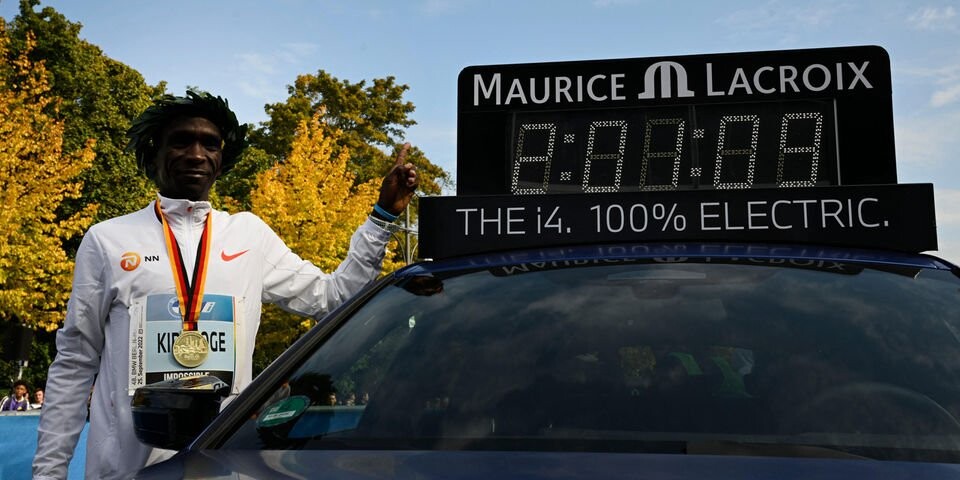
Kipchoge will face world champions Ceh Kristjan (discus) from Slovakia, Brazilian Alison Dos Santos (400m hurdles), the 2020 winner, Swede Mondo Duplantis (pole vault), Moroccan Soufiane El Bakkali (3,000m steeplechase) and American Grant Holloway (110m hurdles).
Others are Norwegian Jakob Ingerbrigtsen (5,000m), Noah Lyles (200m) from United States, Grenada’s Anderson Peters (javelin) and Pedro Pichardo (triple jump) from Portugal.
The athletes were selected by an international panel of athletics experts, comprising representatives from all six continental areas of World Athletics.
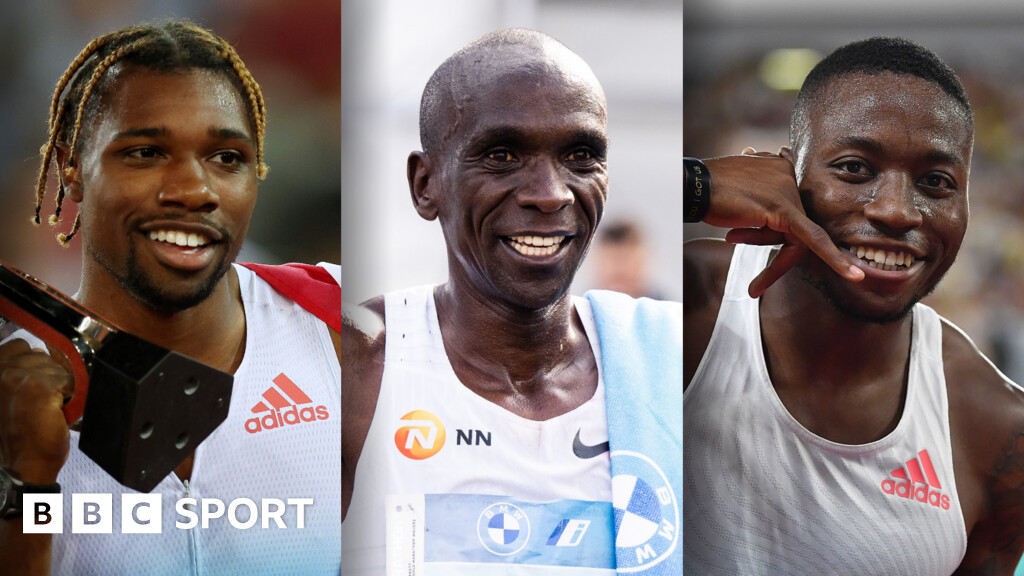
“It has been another memorable year for the sport and the nominations reflect some of the standout performances achieved at the World Athletics Championships in Oregon, World Athletics Indoor Championships in Belgrade, one-day meeting circuits and other events around the world,” said a statement from World Athletics.
Kipchoge recaptured the Berlin Marathon title, smashing his own world record by 30 seconds on September 25 in the German capital.
The 2016 and 2020 Olympic marathon champion clocked 2:01:09 to win, beating his previous world record time of 2:01:39 set when winning in Berlin in 2018.
Kipchoge had on March 6 this year won the Tokyo Marathon in a course record time of 2:02:40, beating the newly crowned London Marathon champion Amos Kipruto to second place in 2:03:13.
Kenya's Olympic and world 1,500m champion Faith Chepng'etich was on Wednesday named among the 10 nominees for the female 2022 World Athlete of the Year award.
Kipchoge is the only other Kenyan male to win the award besides 800m world record holder David Rudisha, who claimed it in 2010.
No Kenyan woman has won the award.
A three-way voting process will determine the finalists.
The voting process closes on October 31.
The World Athletics Council and the World Athletics Family will cast their votes by email, while fans can vote online via the World Athletics social media platforms.
Individual graphics for each nominee will be posted on Facebook, Twitter, Instagram and YouTube this week; a 'like' on Facebook, Instagram and YouTube or a retweet on Twitter will count as one vote.
The World Athletics Council’s vote will count for 50 percent of the result, while the World Athletics Family’s votes and the public votes will each count for 25 per cent of the final result.
Voting for the World Athletes of the Year closes at midnight on October 31. At the conclusion of the voting process, five women and five men finalists will be announced by World Athletics.
Nominees
Kristjan Ceh (Slovakia)
- World discus champion
- Diamond League discus champion, throwing a national record 71.27m on the circuit in Birmingham
- European discus silver medalist
Alison dos Santos (Brazil)
- World 400m hurdles champion
- Diamond League 400m hurdles champion
- Ran a world-leading South American record of 46.29
Mondo Duplantis (Sweden)
- World pole vault champion indoors and outdoors
- Diamond League and European pole vault champion
- Improved his world record to 6.19m and 6.20m indoors, and then 6.21m outdoors
Soufiane El Bakkali (Morocco)
- World 3000m steeplechase champion
- Diamond League 3000m steeplechase champion
- Unbeaten in 2022, running a world-leading 7:58.28 in Rabat
Grant Holloway (USA)
- World 110m hurdles champion
- World indoor 60m hurdles champion
- Diamond League 110m hurdles champion
Jakob Ingebrigtsen (Norway)
- World 5000m champion, world 1500m silver medalist indoors and outdoors
- European 1500m and 5000m champion
- Diamond League 1500m champion in a world-leading 3:29.02
Eliud Kipchoge, (Kenya)
- Improved his world marathon record to 2:01:09
- Berlin Marathon champion
- Tokyo Marathon champion
Noah Lyles (USA)
- World 200m champion
- Diamond League 200m champion
- Ran a world-leading national record of 19.31 to move to third on the world all-time list
Anderson Peters (Grenada)
- World javelin champion
- Commonwealth javelin silver medalist
- Threw a world-leading NACAC record of 93.07m, moving to fifth on the world all-time list
Pedro Pichardo (Portugal)
- World triple jump champion with a world-leading leap of 17.95m
- World indoor triple jump silver medalist
- European triple jump champion.
(10/13/2022) ⚡AMPby Ayumba Ayodi
Kipruto, Chepchirchir to compete at Amsterdam Marathon
Milano Marathon champion Titus Kipruto and the 2019 Sanlam Cape Town Marathon Celestine Chepchirchir have confirmed participation in the Amsterdam Marathon on October 16.
Chepchirchir will be Kenya’s sole representative in the women’s field and she is bound to face stiff competition from top Ethiopian athletes. Chepchirchir is the fastest in the field with a personal best time of 2:20:10 which she ran at this year’s Seoul Marathon to place fourth.

Ethiopians Azmera Gebru, Gebeyanesh Ayele, Sintayehu Tilahun and the 2016 Olympic 10,000m champion Almaz Ayana will also be in the race for top honours. Gebru has a PB of 2:20:48 which she attained when she placed third at the 2019 Amsterdam Marathon.
Ayele and Tilahun have respective PB times of 2:21:22 and 2:22:19 respectively. Ayana will be debuting in the distance after dominating track and half marathon.
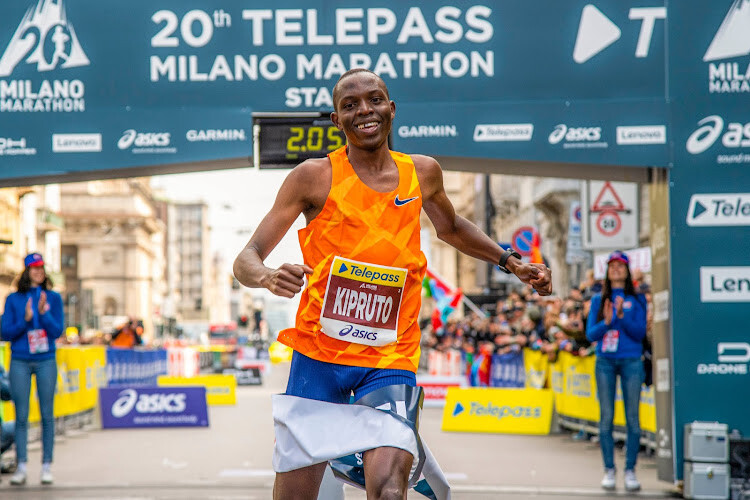
Bahrain’s Rose Chelimo is also one of the athletes to watch. Chelimo is the 2017 world marathon champion and also the 2016 Seoul Marathon champion.
The men’s strong field has attracted the 2014 Zurich Marathon champion Lemi Berhanu, Tsegay Getachew and Adeladlew Mamo, all from Ethiopia. Berhanu has a personal best time of 2:04:33, a time he ran to place second at the 2016 Dubai Standard Chartered Marathon.
Getachew kicked off his season with a win at the Riyadh Marathon in 2:06:27 and has a personal best time of 2:05:11. Mamo, who has a PB of 2:05:12 ran to place second at this year’s Zurich Seville Marathon.
Kipruto is the fourth fastest in the field with a personal best time of 2:05:05. Other Kenyans in the field include Cybrian Kotut (2:04:47), Laban Korir (2:05:54), Josphat Boit (2:07:20) and debutants Charles Mneria, Victor Chumo and Bernard Soi.
(10/13/2022) ⚡AMPby Abigael Wuafula
TCS Amsterdam Marathon
Do you want to enjoy Amsterdam in October and all that the city has to offer you? Want to feel a real athlete and start and finish in the historic Olympic stadium? Or run across the widely discussed passage under the beautiful National Museum? Then come to Amsterdam for the annual TCS Amsterdam Marathon in October! The TCS Amsterdam Marathon...
more...Sweet and savory rolls: superb on-the-go fuel for runners
These sweet and savory rolls are the ideal grab-and-go snack for runners of any distance, and the perfect portable fuel for athletes heading out for a long day on the trails.
When the authors of the cookbook Feed Zone Portables realized endurance athletes craved nutrient-packed homemade alternatives to gels or bars, they set out to create some simple, delicious and easily portable meals and snacks. Dr. Allen Lim and chef Bijou Thomas combined culinary magic and science to mix up these sweet and savory rolls.
You’ll want to double the recipes–you’re going to be hooked after the first bite.

Ingredients
Basic dough
1 cup warm tap water

1 Tbsp active dry yeast
½ tsp sugar
3 cups all-purpose flour, plus a bit more for rolling dough
2 Tbsp olive oil or butter
1 tsp coarse salt
Pizza rolls
½ batch basic dough
2 Tbsp pizza sauce
1 Tbsp shredded mozzarella
1 Tbsp chopped fresh basil
1 Tbsp chopped prosciutto
olive oil and coarse salt for topping
Cinnamon rolls
½ batch basic dough
4 Tbsp butter, melted
2 Tbsp brown sugar
1 tsp ground cinnamon
1 Tbsp dried currants
melted butter and sugar for topping
Directions
Basic dough
In a large bowl combine water, yeast, and sugar and gently mix. Set aside for about five minutes or until the mixture is foamy.
Stir in 2 1/2 cups flour, 1 tablespoon of the olive oil or butter, and salt. Dough will be sticky.
Transfer dough to a floured surface and knead while adding the remaining half-cup flour in small amounts until you get a consistent, non-sticky, elastic dough.
Coat another large bowl with the remaining olive oil. Place dough in bowl, turning to coat evenly with oil
Cover with a damp cloth and let rise in a warm place until dough has doubled in size, about one hour. If you are not prepping the dough right away, cover it with plastic wrap and store in the fridge.
Sweet and savory rolls
Heat oven to 375 F. Lightly coat a baking pan with nonstick cooking spray or line with parchment paper.
Using a rolling pin or wine bottle, roll out half of the dough into an oblong shape, approximately eight by 12 inches, and just under ¼” thick. Flip it once or twice, stretching the dough from the center outward.
Spread just enough pizza sauce (for pizza rolls) or melted butter (for cinnamon rolls) to lightly cover the dough. Too much gets messy. Top evenly with remaining ingredients.
Roll up the dough lengthwise and gently pinch the edge to seal. Transfer bread roll to the baking sheet. Repeat with the rest of the dough to make the second bread roll.
Lightly brush the top of the roll with melted butter or olive oil. Sprinkle with sugar or salt. Bake for 15 minutes or until the bread is golden.
Cut each roll into 12 small portions.
(10/12/2022) ⚡AMPby Keeley Milne
Banned Ujah blames Amazon supplement for positive drugs test
Banned British sprinter CJ Ujah says a “convenient” £10 supplement bought from Amazon caused him to test positive for two prohibited substances at the Tokyo Olympics.
Ujah has been handed a backdated 22-month ban but cleared of intentionally taking prohibited drugs by the Athletics Integrity Unit (AIU) and World Anti-Doping Agency (Wada). Britain was stripped of its Olympic men’s 4x100m silver medal after he tested positive for Ostarine and S-23 at the 2021 Games.
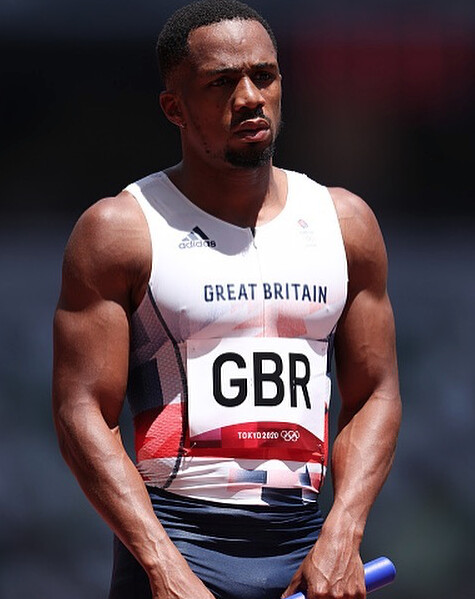
Speaking to the Guardian, 28-year-old Ujah said he had become “complacent” during the Covid-19 lockdowns.
“During the pandemic I relied a lot on Amazon, rather than using the people and resources around me,” he said. “It was just convenient, with next-day delivery. And I didn’t think anything was wrong with it.”
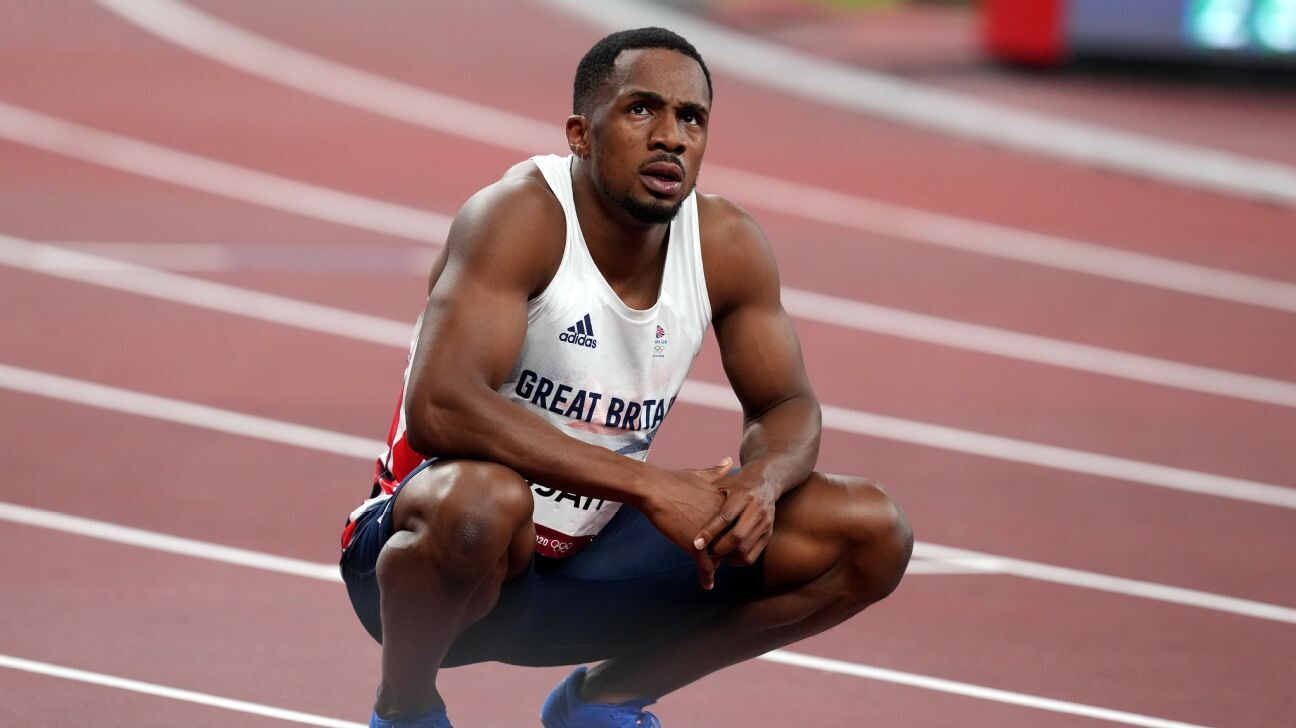
Ujah said he had been taking the supplement beta alanine for “weeks” before the Olympics, but did not know they were contaminated with trace amounts of Ostarine and S-23. He said his final drugs test before the Olympics was May 2021.
Beta alanine, a naturally occurring amino acid, is legal under Wada rules, but Ostarine and S-23 are selective androgen receptor modulators (Sarms) and the UK Anti-Doping website states Ostarine is a drug designed to have similar effects to testosterone.
“You know what? I wish I had been tested right before the Olympics, so that I never went,” he said. “That way, I would never have put these other three guys, my team-mates, through what they went through as well as myself.”
Ujah apologised to his 4x100m relay team-mates Zharnel Hughes, Richard Kilty and Nethaneel Mitchell-Blake, after Britain was stripped of a medal at a summer or winter Games for only the third time.
His ban is backdated to August 6, 2021 and will end on June 5, 2023, which would permit him to compete at August’s World Championships in Budapest if selected. UK Athletics (UKA) expressed its “extreme disappointment, frustration and sadness” towards the actions of Ujah.
The athlete has said he no longer takes supplements as he bids to “prove himself more than ever”.
“I don’t take anything,” he said. “In the future, I’m going to look to get everything from natural foods. Because I’m scared. I was even scared at one point to take paracetamol. You just become frightened of putting anything in your body.”
AIU head Brett Clothier said: “Taking supplements is risky for athletes as they can be contaminated or even adulterated with prohibited substances. Athletes owe it to their fellow competitors to be 100 per cent certain before putting anything into their body. If there’s the slightest doubt, leave it out.”
(10/12/2022) ⚡AMPby BBC Sport
Tokyo 2020 Olympic Games
Fifty-six years after having organized the Olympic Games, the Japanese capital will be hosting a Summer edition for the second time, originally scheduled from July 24 to August 9, 2020, the games were postponed due to coronavirus outbreak, the postponed Tokyo Olympics will be held from July 23 to August 8 in 2021, according to the International Olympic Committee decision. ...
more...Faith Chepng'etich nominated for World Athlete of the Year Award
Olympic and World 1,500m champion Kenya’s Faith Chepng'etich has once again been nominated for the 2022 Women’s World Athlete of the Year Award.
The 28-year-old Faith Chepng’étich will battle nine other top athletes for the coveted award whose winner will be revealed on World Athletics’ social media platforms in early December.
The announcement on Wednesday marked the opening of the voting process for the 2022 World Athletes of the Year ahead of the World Athletics Awards.
Chepngétich is up against world champions Nigeria’s Tobi Amusan (100m hurdles), American Chase Ealey (shot put), 2013 Women’s World Athlete of the Year, Jamaicans Shelly-Ann Fraser-Pryce (100m) and Shericka Jackson (200m) and American Sydney McLaughlin (World 400m hurdles and 4x400m).
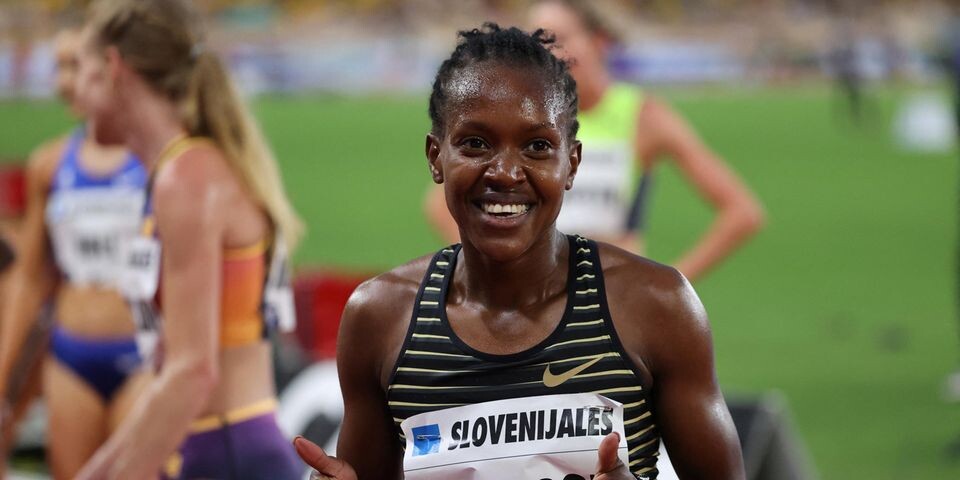
Other world champions in the race are the 2020 Women’s World Athlete of the Year, Yulimar Rojas (Triple jump) from Venezuela, Shaunae Miller-Uibo (400m) from Bahamas and Peru’s Kimberly Garcia (20km race walk).
Also in contention is the World Indoor and World High Jump silver medalist Yaroslava Mahuchikh from Ukraine.
These athletes were selected by an international panel of athletics experts, comprising representatives from all six continental areas of World Athletics.
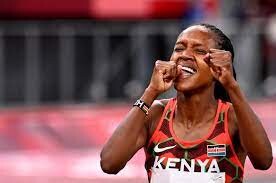
“It has been another memorable year for the sport and the nominations reflect some of the standout performances achieved at the World Athletics Championships in Oregon, World Athletics Indoor Championships in Belgrade, one-day meeting circuits and other events around the world,” noted a statement from World Athletics.
Chepngétich recaptured the world 1,500m tile clocking three minutes and 52.96 seconds on July 18, before going on to win the Monaco leg of the Diamond League in a national record time of 3:50.37, missing the world record by just three tenths of a second.
It was the second fastest time in history of the women’s 1,500m race where Ethiopian Genzebe Dibaba holds the world record of 3:50.07 set in Monaco in 2015.
Chepngétich would retain her Diamonds League Trophy, winning in Zurich in 4:00.44 on September 8.
Double Olympic champion Elaine Thompson-Herah beat Chepngétich and Tokyo Olympics 10,000m/ 5,000m champion Sifan Hassan from the Netherlands to win last year’s award.
A three-way voting process will determine the finalists. The World Athletics Council and the World Athletics Family will cast their votes by email, while fans can vote online via the World Athletics social media platforms.
Individual graphics for each nominee will be posted on Facebook, Twitter, Instagram and YouTube this week; a 'like' on Facebook, Instagram and YouTube or a retweet on Twitter will count as one vote.
The World Athletics Council’s vote will count for 50 percent of the result, while the World Athletics Family’s votes and the public votes will each count for 25 per cent of the final result.
Voting for the World Athletes of the Year closes at midnight on October 31. At the conclusion of the voting process, five women and five men finalists will be announced by World Athletics.
(10/12/2022) ⚡AMPby Faith Chepng’étich
Nagoya open again to runners worldwide
In 2023 women runners from around the world will once again have the chance to run in the world’s largest women’s marathon: Nagoya Women’s Marathon, Japan. This follows from the easing of Japanese Covid travel restrictions.
The Nagoya Women’s Marathon is pleased to announce the reopening of overseas entries for the 2023 event, scheduled for Sunday, March 12, 2023, in Nagoya, Japan. This is in response to the Japanese government’s decision to lift restrictions on new entries of international tourists as of today, October 11, 2022, after nearly 2.5 years of strict border control due to the Covid-19 pandemic.

Specifically, the visa exemption arrangements, which had been suspended during the pandemic, are resumed, the ban on individual travel (without a travel agency) is lifted, and the daily arrival cap of 50,000 is removed. Although all travelers and returnees, regardless of nationality, will still be required to provide either a certificate of three doses of COVID-19 vaccination or a negative result of a pre-departure COVID-19 test, the country has become dramatically easier to visit for international tourists.
The race organizer welcomes this significant relaxation and hopes that in March next year, the women runners living abroad will be able to come to Japan and run Nagoya’s proud wide streets without worry. The race has been held even during the pandemic, in 2020, 2021, and 2022 without cancellation by scaling back and implementing various infection protection measures. Unfortunately, however, international non-elite runners could only participate in the virtual “Nagoya Women’s Online Marathon” due to the border restrictions on international tourists.
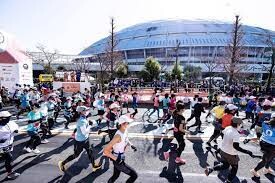
The organizer is delighted to encourage international runners who have wanted to participate in the event in Nagoya over the past three years but were unable to, and runners who have supported the event by running the online marathon instead, to take this opportunity to enter.
The Nagoya Women’s Marathon is a global festival for women runners, dedicated to welcoming all women who love running, from the world’s top female athletes to fun runners and first-time marathon challengers.
All finishers will receive an exclusively designed Tiffany & Co. pendant, handed one-by-one by a member of the Omotenashi (Hospitality) Squad dressed in tuxedos. An online marathon will also be held for those who prefer participating virtually. Applications will be accepted on a first-come, first-served basis until Wednesday, November 30 at 23:59 Japan time, and the capacity for overseas runners is 3,500, including the in-person and virtual races.
(10/12/2022) ⚡AMPby AIMS
Nagoya Women's Marathon
The Nagoya Women's Marathon named Nagoya International Women's Marathon until the 2010 race, is an annual marathon race for female runners over the classic distance of 42 km and 195 metres, held in Nagoya, Japan in early March every year. It holds IAAF Gold Label road race status. It began in 1980 as an annual 20-kilometre road race held in...
more...Three things to remember during your taper, set yourself up for success with these three race-week tips
It’s race week, and your hardest workouts and long run are now behind you. The bulk of your work is done and it’s now time to relax, feel proud of your progress and focus on your upcoming race. A tapering strategy to gradually reduce their training a week or two before the race is essential for longer races, to get the most out of your performance and make sure your body is rested and ready, come race day. But it can be tricky to know exactly how much to taper and when. Here are three easy things you should remember to master your taper.
1.- Reduce volume
The taper should begin immediately following the last long run on your training schedule, which is normally two weeks before a marathon. Ideally, you should be reducing your running volume by 20 to 30 per cent per week. For example, if you are running 100 km a week, drop your mileage down to 60 to 70 kilometers the week prior, then down to 30 to 40 km the week of the race.
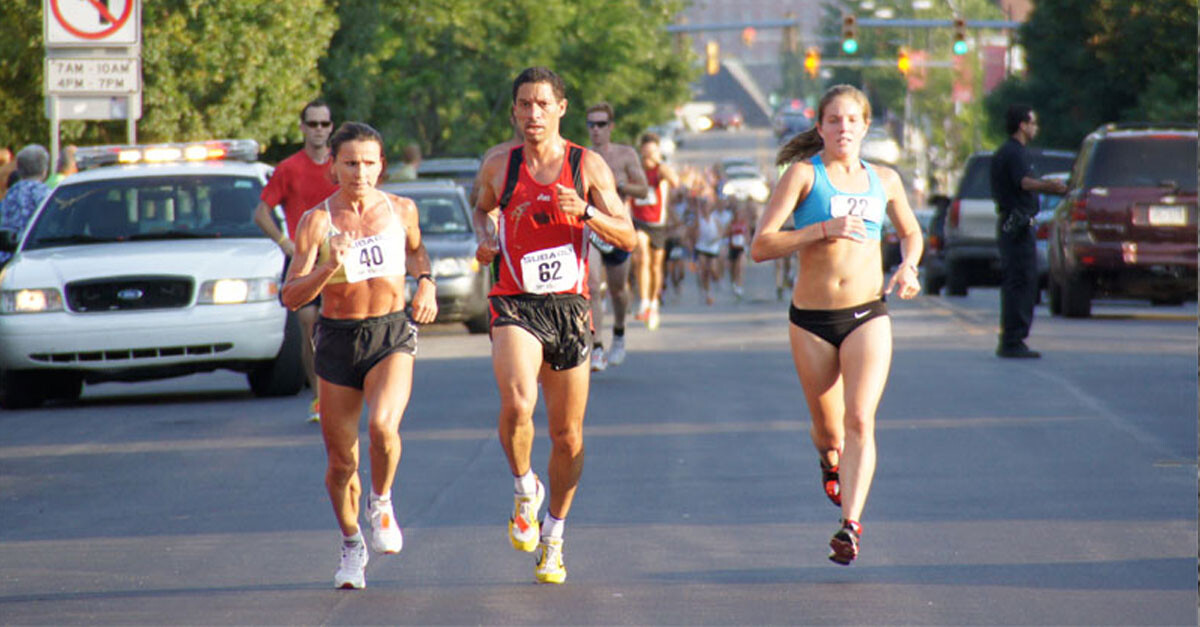
If you are doing strength training sessions, you should cut them way back during your taper. The goal of tapering is to repair your muscles, not break them down by lifting heavy. The last thing you want is to be hurt or tired before your big race.
2.- Rest up

When you run, you strain your muscles. This is especially true when you go for long runs while training for longer races. The adaptations resulting from intense training should be complete by the time you start tapering; the point of running now is just to maintain fitness, not to get fitter. Your body needs time to rest so that your muscles can repair themselves and get stronger.
It’s particularly important to make sure you’re getting adequate sleep, so you are not tired come race day—most of your body’s repair happens while you’re sleeping.
3.- Fuel your body
Ensuring your body is getting enough fuel is often an overlooked part of the tapering process. In the last week before your race, you need to bank more carbs and sodium than you usually consume. How much carbs you need depends on your body and distance, but generally, 200 to 400 grams of carbs per day leading up to a half-marathon or marathon works for most runners.
Enjoy some healthy carbs in the days before your race, like pasta, oatmeal, rice, quinoa and sweet potatoes.
(10/12/2022) ⚡AMPby Marley Dickinson
Ethiopia’s Andualem Shiferaw breaks Lisbon course record
Ethiopia’s Andualem Shiferaw broke his own course record at the EDP Lisbon Marathon that was held on Sunday (9th October).
Winner in the last two editions (2019 and 2021, this one with the previous course record of 2:05.52), the 30 year old athlete finished the race in 2:05.43, improving his time by 7 seconds. Haftu Asefa (2:06.33) and Birhan Tesfaye (2:07.04), both also from Ethiopia, completed the podium.
In the women’s race, the Kenyan Bornes Kitur took the top honors cutting the tape in a time of 2:24.17, only 3 seconds shy of the course record. Ethiopia’s Sorome Amente and Buzunesh Gudeta finished second and third, with 2:25.57 and 2:26.01.
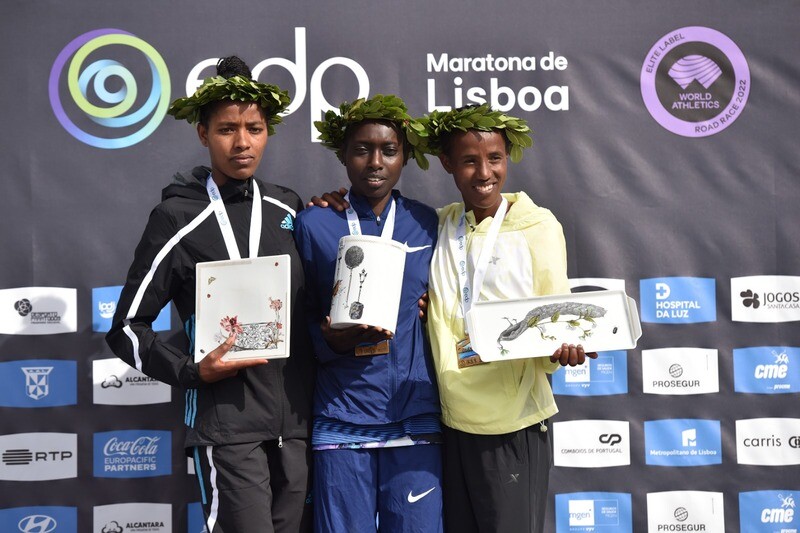
Andualem Shiferaw: “I’m happy to win the race for the third time and, also, to break the course record. Lisbon is like a second home for me. The course is good, the weather also. I’m happy to come back here. If the organizers invite me, I’ll come again. I can improve the course record a little more.”
In the 21k, the Luso Half Marathon that started a few hours after the full marathon, the winners were the Kenyan Charles Langat and the Ethiopian Emebet Mamo, both with personal bests.
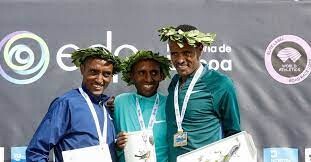
Langat won in 1:00.44 hours, improving his best time by more than 2 minutes (his best time was 1:02.59). Dinkalen Adane, from Ethiopia, was second, just two seconds away from the winner. In the third place came the Ugandan Isaac Kibet, with 1:01.23.
In the women’s race, Emebet Mamo won in 1:09.35 – another personal record, by 24 seconds – ahead of the Kenyans Ludwina Chepngetich (1:10.31) and Faith Jeptoo (1:10.54).
The men’s winner Charles Langat said: “I was not expecting to win, but I did it. I felt strong in the end and I pushed. We [with Dinkalen Adane] helped each other in the race.”
(10/11/2022) ⚡AMPby AIMS
EDP Lisbon Marathon
The EDP Lisbon Marathon is already considered as one of the most beautiful races in the world and acclaimed by international media such as the Forbes Magazine, the Huffington Post and American Express. Starting in Cascais and finishing at Praça do Comércio, the EDP Marathon course is 100% sea and river side, providing to the runners an unique view along...
more...Ultrarunner Tim Tollefson shares mental health challenges in new film
Tim Tollefson is a celebrated American ultratrail runner with wins at big races like the Javelina Jundred, Lavaredo Ultra Trail 120K and Ultra Trail Australia 100K; in 2017 he was third overall at Ultra Trail du Mont Blanc (UTMB), finishing well under 20 hours.
But then followed a string of failures, including at this year’s UTMB, which went badly from the start, forcing him to drop out about four hours in. (Tollefson went into the race with a positive COVID result.) A new film, What Goes Unsaid, reveals something only those closest to Tollefson knew previously–alongside his many successes and the admiration of his fans, for years Tollefson has been dealing with poor mental health and an eating disorder.
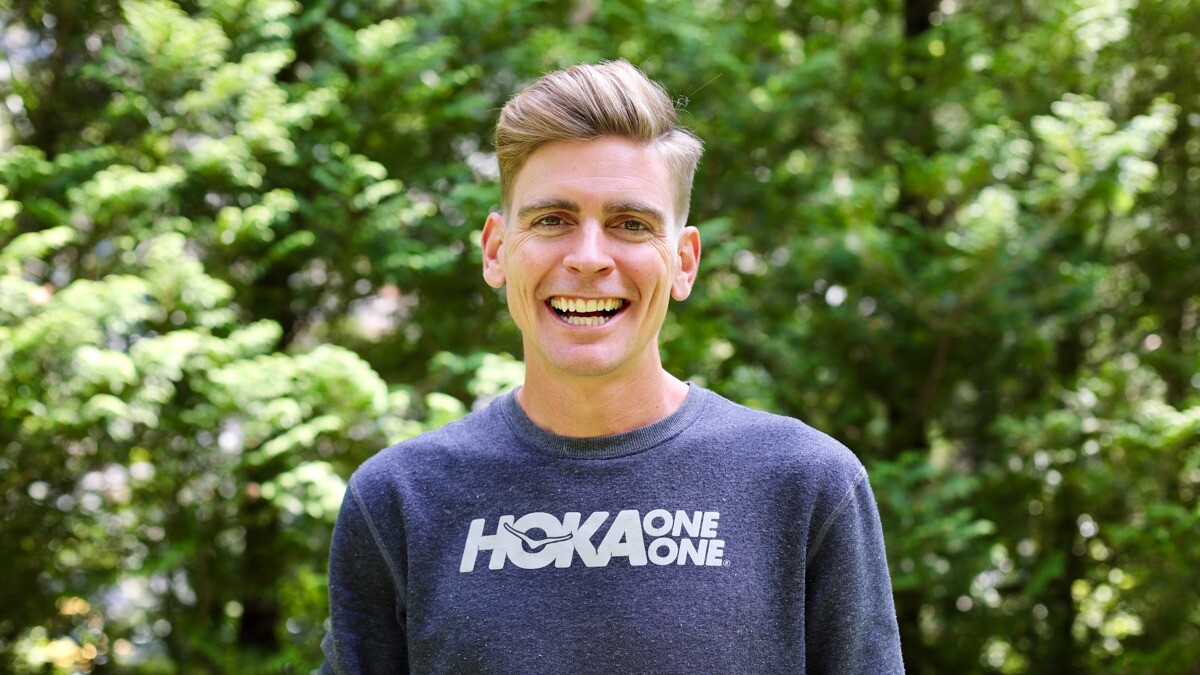
Tollefson, who is sponsored by Coros, had a tough adjustment when his family moved from rural Minnesota to the Auburn, Calif. (the sight of the iconic Western States 100 finish) when he was 10, and he was bullied– for wearing glasses, for his accent and his haircut. He started running in middle school, which helped him feel more accepted.
But it also made him want to be leaner, and more like the other runners’ body types he observed on the team; and since he wasn’t the only one trying to eat less to force his body to conform to an “ideal” body weight, he didn’t realize how insidious and dangerous it could be.
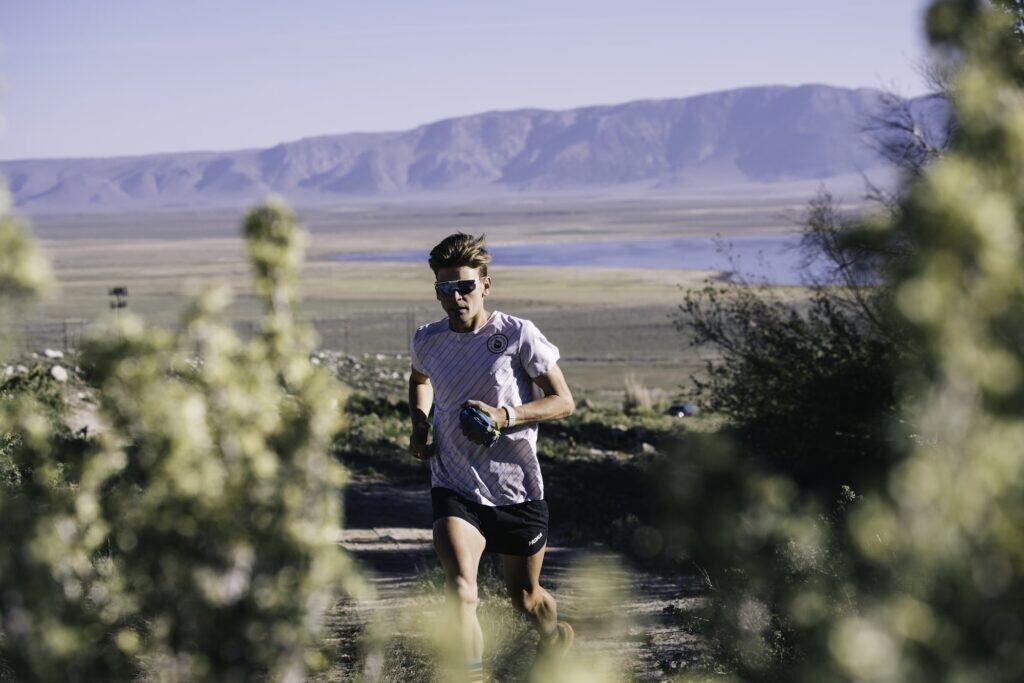
Tollefson qualified for the 2012 Olympic Marathon trials, but struggled in his brief marathon career, ultimately switching to trail running, which he hoped would bring greater success (and therefore self-acceptance). UTMB represented, in his mind, the acme of achievement in the ultratrail world–and he describes his 2017 podium finish, where he broke 20 hours (along with winner François D’Haene and runner-up Kilian Jornet) as the best race of his career. (He finished third in 2016 also.)
But the euphoria was short-lived. In 2018, he returned to UTMB and DNF’d–and again in 2019 and 2021. In the flim, he reveals that, even during the good years, he would almost be paralyzed with anxiety over being seen by others, and by perfectionism, severe body dysmorphia and obsessive-compulsive disorder (OCD).
Interestingly, this is one of the reasons he was attracted to UTMB: it starts in the evening, and much of the first half of the race takes place in darkness. By the time the sun rises, he has run long enough to feel slightly less bad about being seen. “I feel thin again, because I’ve run for 12 hours,” says Tollefson.
Tollefson says it’s not the running, or the altitude, that strikes fear into his heart–it’s being seen by other runners. He says he has been counting calories since 2003, and he only sought therapy recently. He now recognizes that what he sees when he looks in the mirror is distorted and not real.
Having grown up in the area and competed at Placer High (where Western States runners finish), Tollefson avoided it until 2021. He admits he was always critical of the race, whose course is not as technical or as spectacular as UTMB’s. Ultimately, he realized he was holding it to an unfair standard–much as he had always done to himself and his body. And he decided to run it.
He finished fifth last year, and as his fans already know, this year he finished, but not without struggling mightily–against dehydration and a powerful urge to quit. He placed 33rd overall, with a time of 20:41:28. “I decided that I wasn’t going to give up on myself,” Tollefson told filmmaker Billy Yang, who was commentating, after finishing. He also felt he owed it to his crew the volunteers and the runners who didn’t make it off the waitlist, to finish.
He shares his story now in the hope that it will encourage others to do the same. Several female athletes (including Olympic bronze medallist Molly Seidel, trail runner Amelia Boone and steeplchaser Allie Ostrander) have shared their stories, but as Tollefson’s makes clear, eating disorders are not limited to female athletes. (Canadian beer miler Corey Bellemore opened up about his own experience during the pandemic.)
“When other people share things publicly, and I relate or emphathize, it makes me feel less alone,” he says. “I’ve never had the confidence to reach out to those people and say thank you, but I know it has an impact.”
(10/11/2022) ⚡AMPby Anne Francis
G.O.A.T. Eliud Kipchoge reveals his secret to success
World marathon record holder and Olympic champion Eliud Kipchoge reckons that his secret to longevity is taking sports as a profession and proper planning.
The 37-year-old Kipchoge, who has been running for the last two decades, said that loving athletics as a sport and focusing on his preparations rather than what he will earn from it are what has made him last long.
Kipchoge called on fellow athletes to invest in their careers, available time and earnings wisely, noting that the life span of a sportsperson is short.
“Focusing on preparations and not financial gains first will make an athlete go far,” said Kipchoge.
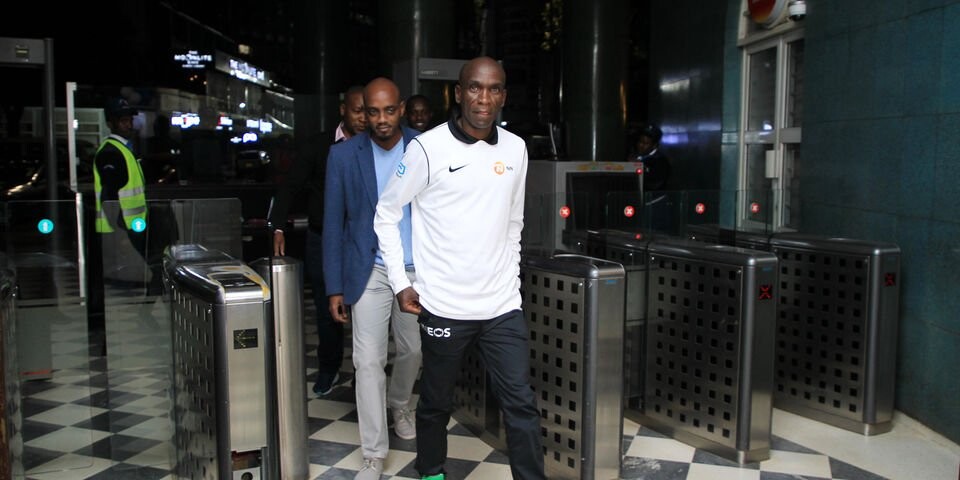
“I discovered treating sports with respect and like any other well-paying job and career quite early and it has worked for me.”
Kipchoge noted that it is good to have goals, but putting in place working systems enables someone to achieve more.
“It’s always good to have goals but that is not as important as having good systems, Goals solve problems temporarily,” noted Kipchoge.
Kipchoge was speaking on NTV’s live sports show SportOn hosted by Bernard Ndong and James Wokabi on Monday night.
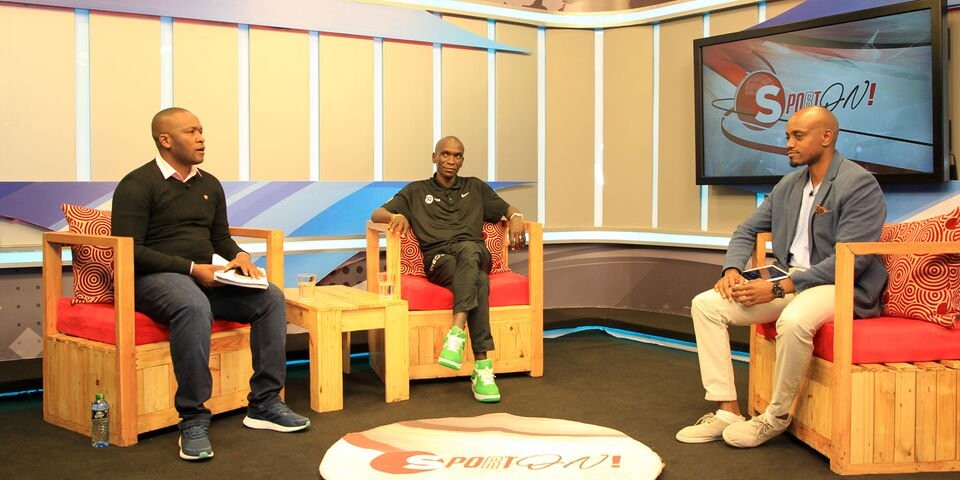
Kipchoge recaptured the Berlin Marathon title, smashing his own world record by 30 seconds on September 25 in the German capital.
It was yet again poetry in motion as Kipchoge clocked 2:01:09 to win, beating his previous world record time of 2:01:39 set when winning in Berlin in 2018.
Kipchoge disclosed that the secret to success wasn’t rocket science, but planning in small bits to success.
“One must remain consistent all through for good results hence no quick fixes,” said Kipchoge, who was received at the Nation Centre by NTV's Head of Broadcasting and Executive Director (Transformation), Monica Ndungú.
Ndungú was accompanied by Nation Media Group Managing Editor (Sports), Elias Makori and Head of Marketing, Philbert Mdindi.
Kipchoge noted that embracing professionalism always defines a professional athlete from an amateur.
“A professional will plan and follow his program to the later but an amateur is full of life, running up-and-down aimlessly, “said Kipchoge, adding that is what keeps him going is his love for running.
“I feel satisfied and the urge to do more when I know I have inspired someone or a generation. What I see on my social media platforms by people embracing what I am doing across the world drives the hunger in me,” said Kipchoge.
An ardent reader, Kipchoge disclose that what inspired him before heading to Berlin was the book “The Practice of Groundedness: A Transformative Path to Success That Feeds--Not Crushes--Your Soul’ by Brad Stulberg, an internationally known expert on human performance, well-being, and sustainable success.
“I succeeded in most cases when I discovered the secret to reading. Success is approached from different angles.
“I read 20 pages a day in a book and that is three books a month. To get to learn a lot and be more knowledgeable when you read books,” said Kipchoge, who reads after training at 5pm.
Kipchoge, whose favourite meal is maize meal (ugali) and any traditional vegetables, also loves listening to US Pop star Kelly Clarkson's music especially –Stronger ( What doesn’t kill you, makes you stronger).
With the world celebrating World Mental Health Day on Monday, Kipchoge noted that sportsmen and women who win easily have good mental health.
“Matches and races are won mentally and not the training invested,” said Kipchoge, adding that his most successful race was when he broke the two hour mark, running 1:59:41 during the INEOS 1:59 Challenge at Prater Hauptallee, Wien course in Austria on October 12, 2019.
However, the time wasn’t recognized as a world record because it wasn't conducted under regular conditions.
“That race was not only critical to me but human nature. I made history as the first man to run a marathon under two hours,” said Kipchoge. “I know someone might in future run in a normal; event but I am glad to be the first one to run under any conditions and that has inspired many.”
Kipchoge said his record-breaking feat in Berlin has finally settled.
“I am happy that I have continued to inspire many. I think I could have run under two hours if the pacesetters went up to the 30km mark,” said Kipchoge, adding that he knew he would break his own record when he looked at the splits time after 25km and 30 km.
However, Kipcgohe wondered why people are focused on whether he will run under two hours in a normal race soon.
"I don't understand why people are asking that when I did it at the Ineos Challenge," said Kipchoge in a laughter.
Kipchoge advised fellow sportsmen and women to desist from doping saying that besides ruining their reputation, they are putting their health in grave danger.
"You better be slow and sure and succeed. I appeal to the young generation to train well and love sports. It will treat them well," said Kipchoge.
He will on Tuesday be hosted for a media breakfast by Isuzu East Africa in Nairobi.
(10/11/2022) ⚡AMPby Ayumba Ayodi
2023 Missoula Marathon to Include Prize Money for Non-Binary Participants
The Missoula Marathon is honoring National Coming Out Day by celebrating the LGBTQ+ community
Missoula, MT. The Missoula Marathon, organized by the nonprofit Run Wild Missoula, has long been a leader in celebrating and welcoming the LBGTQ+ community. In 2023, race organizers will back up their commitment to gender inclusion by offering equal prize money for winners of male, female, and non-binary gender divisions. In addition, race organizers are actively working with local and LGBTQ+ community members to ensure the event is inclusive for runners of all gender identities and expressions.
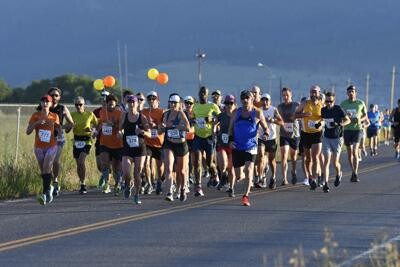
The Missoula Marathon first offered the non-binary gender category in 2022, welcoming all participants to the start line on race day. For 2023, the race is offering prize money for all gender category winners as well as awards for all age group winners.
“Run Wild Missoula and the Missoula Marathon care deeply about all members of our running community,” said Trisha Drobeck, Race Director for the Missoula Marathon. “Our goal is to make all participants feel welcomed, safe, respected, and included.”

The 2023 Missoula Marathon race weekend will be held June 23-25 in Missoula, Montana. Events include the Missoula Marathon, Missoula Half Marathon, Tony Banovich 5k, and the free Missoula Marathon Beer Run. All events will be open to runners of all gender identities.
The Missoula Marathon is the brainchild of a group of local, dedicated members of Run Wild Missoula who want to share the area’s beauty and Missoula’s unique feel with runners from all over. Run Wild Missoula is a non-profit, 501(c)3 running club with the mission to promote and support running and walking for people of all ages, abilities and backgrounds. The Missoula Marathon has regularly been named as one of America’s Best Races by the likes of Runner’s World, The BibRave 100, and RaceRaves.
(10/11/2022) ⚡AMPby Running USA
Missoula Marathon
Half and full marathon in Missoula, Montana, in the city they call "The Garden City." Amazing participation by the entire town and county. Front lawn hose squads cool down the runners en route. Lots of rest stations. The full marathon is a Boston qualifier. Runner's World rated the course as one of the best overall road races. ...
more...Kenyan marathon runner Philemon Kacheran Lokedi has been banned for three years
Kenyan marathon runner Philemon Kacheran Lokedi has been banned for three years by the Athletics Integrity Unit (AIU) after testing positive for testosterone and its metabolites "with exogenous origin".
Kacheran was provisionally suspended on July 8 in relation to an out-of-competition sample provided in Kapenguria in Kenya on April 27, meaning he missed the Birmingham 2022 Commonwealth Games.
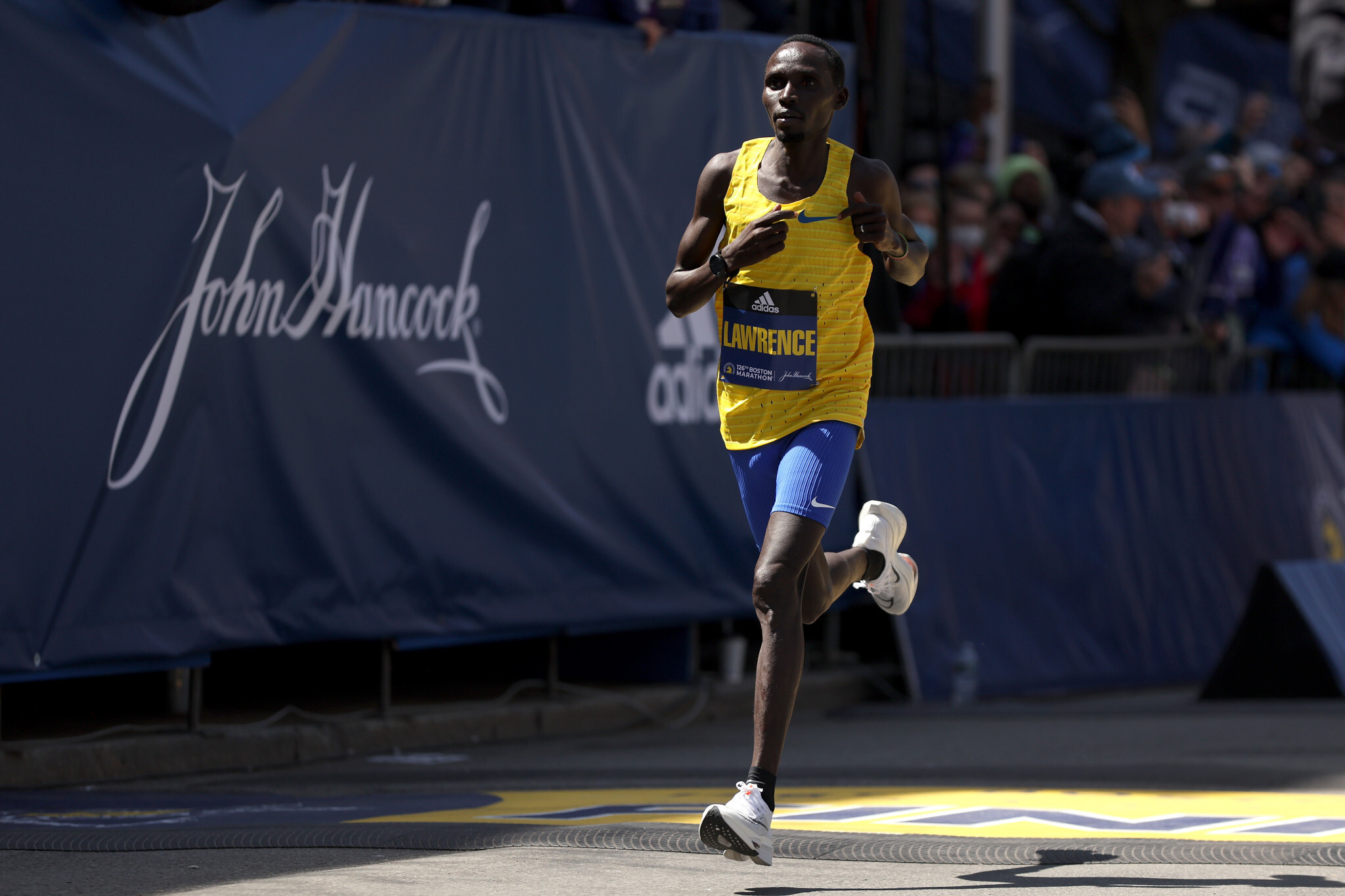
He had faced a four-year ban for his offence under World Athletics' anti-doping rules, but this was reduced to three years by the AIU due to an "early admission and acceptance of sanction".
The sanctions apply from July 8, the date of Kacheran's provisional suspension.
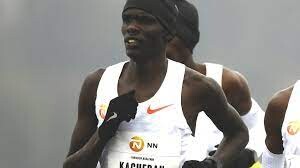
The World Anti-Doping Agency and Anti-Doping Agency of Kenya have a right to appeal against the decision to the Court of Arbitration for Sport in Lausanne.
Kacheran ran a personal best 2 hours 5min 19sec to finish third in the Valencia Marathon last December.
He had finished fourth in the Enschede Marathon and sixth in the Berlin Marathon earlier that year.
In April of this year, he clocked 2:10:12 to finish eighth in the Rotterdam Marathon.
In 2019, he served as a pacemaker for the successful sub-two-hour marathon attempt by compatriot Eliud Kipchoge.
Kacheran is the ninth athlete from Kenya to be banned by the AIU since the start of July, with the others including the winner of the 2019 Boston and Chicago Marathons Lawrence Cherono.
The AIU has also today provisionally suspended Kenyan athlete Mark Kangogo for the use of prohibited substances norandrosterone and triamcinolone acetonide, although he has not competed in a World Athletics-sanctioned event since 2019.
Kenya is one of seven Category A nations deemed by the AIU to have the highest doping risk and threaten the overall integrity of the sport.
(10/11/2022) ⚡AMPby Patrick Burke
Bostonian Erika Kemp Wins the 2022 Boston 10K for Women
It was a hometown victory at the 46th Boston 10K for Women, presented by REI, as 27-year-old Erika Kemp broke the tape and set a new personal best with a time of 32:15. In her race debut, Kemp surged at mile five and cruised onto Charles Street for a 17 second victory over Kenyan Risper Gesabwa. Gesabwa’s time of 32:32 put her four seconds ahead of American Taylor Werner, who clocked 32:36, one second shy of her personal record.
‘I’ve been waiting for this day for seven years,’ said an elated Kemp, who credited her course familiarity with her PR performance. “My training overall has been pretty good. I’ve just had a really hard time putting it together in a race. It wasn’t super surprising, but it was very rewarding to see it all come together.”
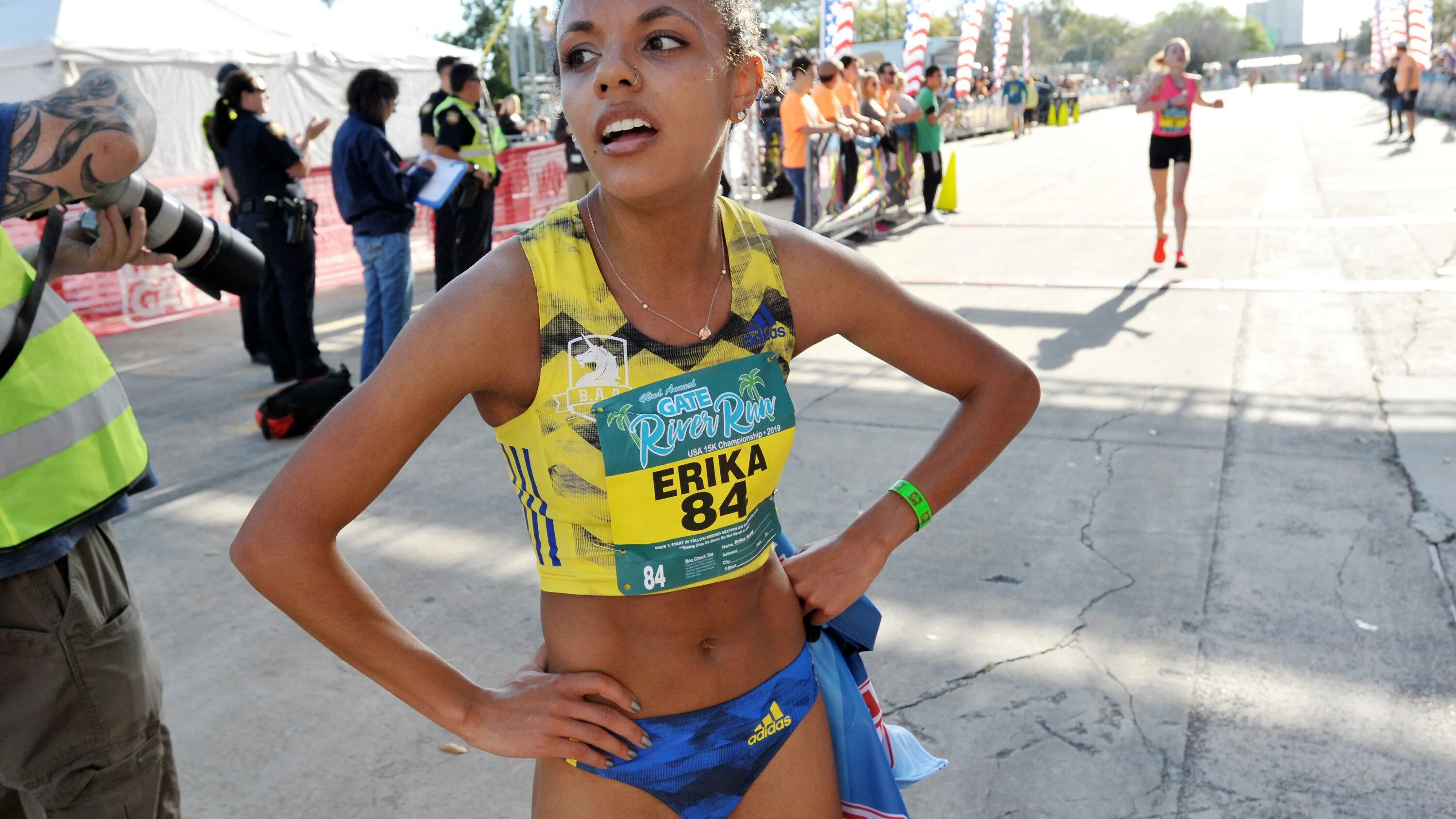
Under sunny skies and a temperature of 50 degrees, Kemp, Gesabwa, Werner, and Mary Munanu of Kenya formed a pack of four quickly after the 9:00 a.m. start. Sticking together across the Massachusetts Avenue bridge into Cambridge, they jostled along Memorial Drive, while switchbacks brought the cheers of nearly 3,000 women who chased them. “Towards mile three and four, Mary [Munanu] and I surged a tiny bit, and we got some space going into mile four,” recalled Kemp, who earned $9,000 with the victory.
Munanu and Kemp accelerated as they returned into Boston, and the crowd roared as they turned left onto Commonwealth Ave. Gesabwa and Werner stuck close behind, battling for the third podium spot. “We were side by side at mile five, and there was a sharp turn, where Mary surged,” recalled Kemp. “And I was like ‘no I can’t quit.’ So, I put in a surge and this was the only time she didn’t respond, so at that point I knew this was my chance, and I just went for it.”
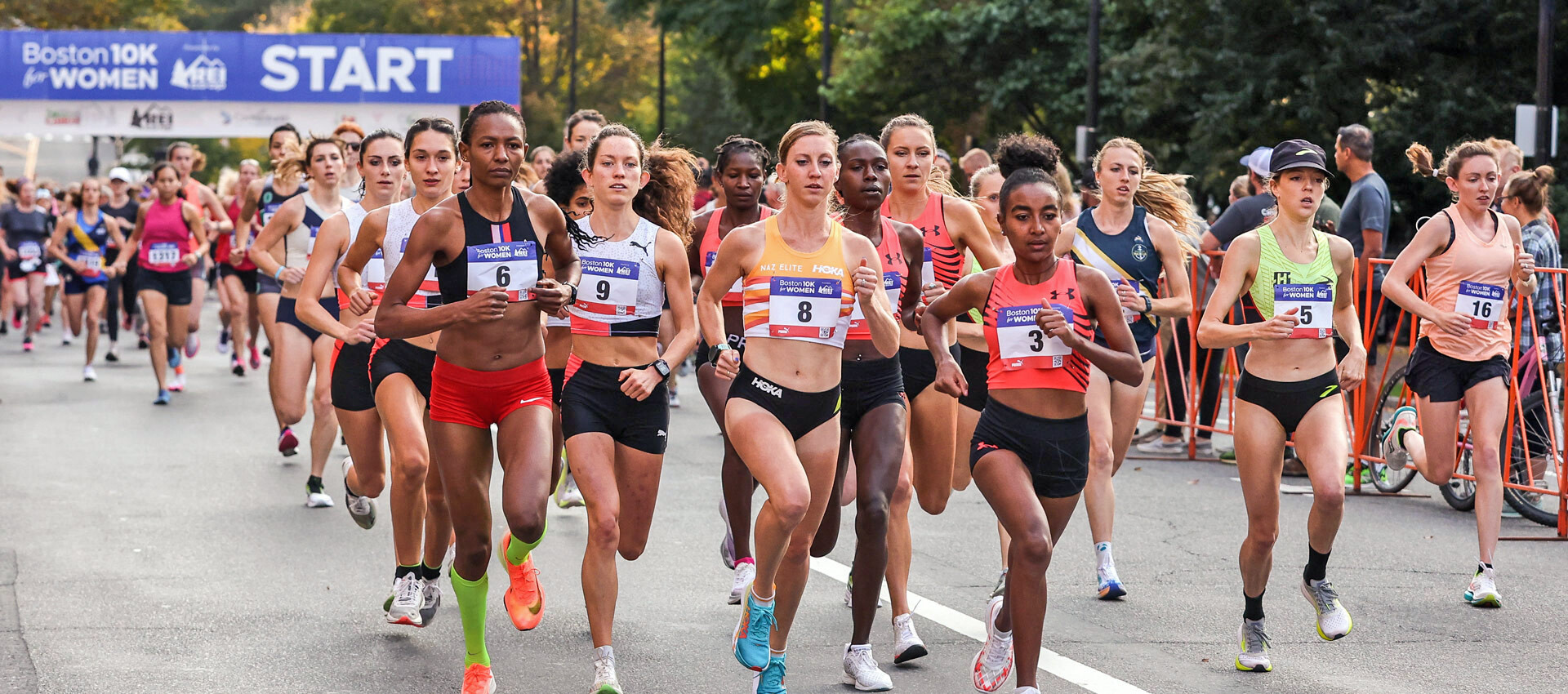
The late surge was a welcomed sign for Kemp, who runs for the Boston Athletic Association High Performance Team. “The other races I’ve done so far this year, I get to about three miles, and I’m just dead – mentally, physically, emotionally, just like, nothing left. So when you’re coming back on the bridge, and you’re just running past a stream of women and they’re cheering so hard for you, it just gives you new energy.”
The race attracted 3,556 official registrants to a bustling Boston Common as the sun rose over Boston. For the 46th year, the women’s race gathered athletes of all ages and backgrounds, representing 37 states, 11 countries, and six continents. Runners from ages 10 to 88 registered for the event. “It was amazing,” said Kemp on the sea of women runners. “The way the course runs when you run past all the women on the Mass Ave Bridge, it’s just so incredible.”
The race saw a 15% increase in registrations from 2021, and is enthusiastically supported by a group of sponsors, led by REI and Puma, who brought enormous energy to the day’s activities. Formerly known as the Tufts Health Plan 10K for Women, the race is New England’s largest all-women’s sporting event the second longest-running all-women’s race in the country.
Boston 10K for Women, Presented by REI
Established in 1977 as the Bonne Bell Mini Marathon, the Boston 10K for Women, Presented by REI is the longest-running all-women’s sporting event in New England. With thousands of runners and spectators each year, it’s New England’s largest all-women’s road race, and has been organized every year by Conventures, Inc. Known for many years as the Tufts Health Plan 10K for Women, the race features a flat out-and-back course through Boston’s Back Bay neighborhood and stretches of Memorial Drive in Cambridge, finishing at Boston Common. More than 180,000 women have raced in the event since its inception.
(10/10/2022) ⚡AMPby Running USA
Boston 10K for Women
The Boston 10K for Women, formerly known as the Tufts Health Plan 10K for Women and the Bonne Bell Mini Marathon, is a major 10K held annually in Boston, on Columbus Day, popular as both an elite world-class competition and a women's running event promoting health and fitness. Feel the empowerment as you unite with over 7,000 fellow runners...
more...Last warm up as Standard Chartered Nairobi Marathon date approaches
The Standard Chartered Nairobi Marathon organizers on Saturday honored sponsors and partners of this year’s event with warm up races at Karura Forest.
This year’s physical run is set for October 30 on the Southern Bypass route, with Uhuru Gardens being the main venue for the annual event.
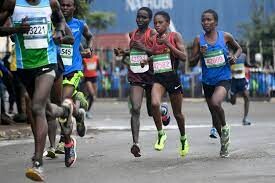
At least 15, 000 local and international runners are expected to compete in the physical marathon while 10,000 participants are targeted for the virtual races set to start on October 23.
Saturday's runs were the third and final warm up races held ahead of the main event due in three weeks’ time.
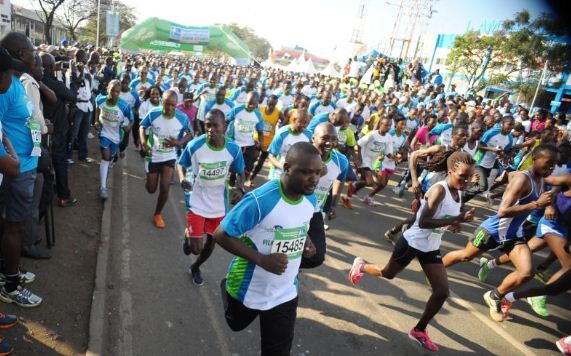
The participants competed in five kilometers, 10km and 21km running trials.
The chairman Local Organizing Committee Standard Chartered Nairobi Marathon Peter Gitau said it was special to celebrate the event's sponsors and partners with the warm up races since it owes it's success to them.
Standard Chartered Nairobi Marathon has taken place since inception in 2003 with 2020 being the only year it failed to happen due to Covid-19 pandemic.
“This is a special warm up race, for it celebrates our partners and sponsors,” said Gitau.
“This marathon has attracted over 250,000 participants over the last 18 editions to become the largest single-day sporting event in Kenya. We owe this success to collaboration.”
Some of the partners that were represented at the event include Nairobi County, Ministry of Sports, Culture and Heritage, Coca Cola, Kenya Breweries, Magical Kenya and Prudential Assurance.
In addition to the warm-up races, the Standard Chartered Nairobi Marathon organizers have been hosting a series of training sessions to better equip participants with tools for running.
The training sessions have incorporated Persons Living with Disabilities (PLWDs). Over 50 PWLDs are expected to grace this year’s event.
They will participate in 21km and 42km relay races.
(10/10/2022) ⚡AMPby Victor Otierno
NAIROBI MARATHON
Nairobi Marathon is an annual road running competition over the marathon distance held in October in Nairobi, Kenya. First held in 2003, the competition expanded and now includes a half marathon race along with the main race. It was part of "The Greatest Race on Earth", fully sponsored by Standard Chartered Bank....
more...Kenyans Philimon Kipchumba and Agnes Keino break Munich Marathon course records
Both course records were smashed during the comeback of international elite runners at the Generali Munich Marathon.
Kenyan debutant Philimon Kipchumba crossed the finish line in Munich’s Olympic Stadium in 2:07:28. Behind him the 23 year-old Mengistu Zelalem of Ethiopia and Eritrea’s Berhane Tesfaye followed in 2:07:56 and 2:08:10 respectively – times that were well faster than the previous course record of 2:09:46. Fourth placed German Sebastian Hendel ran a fine debut with 2:10:37.
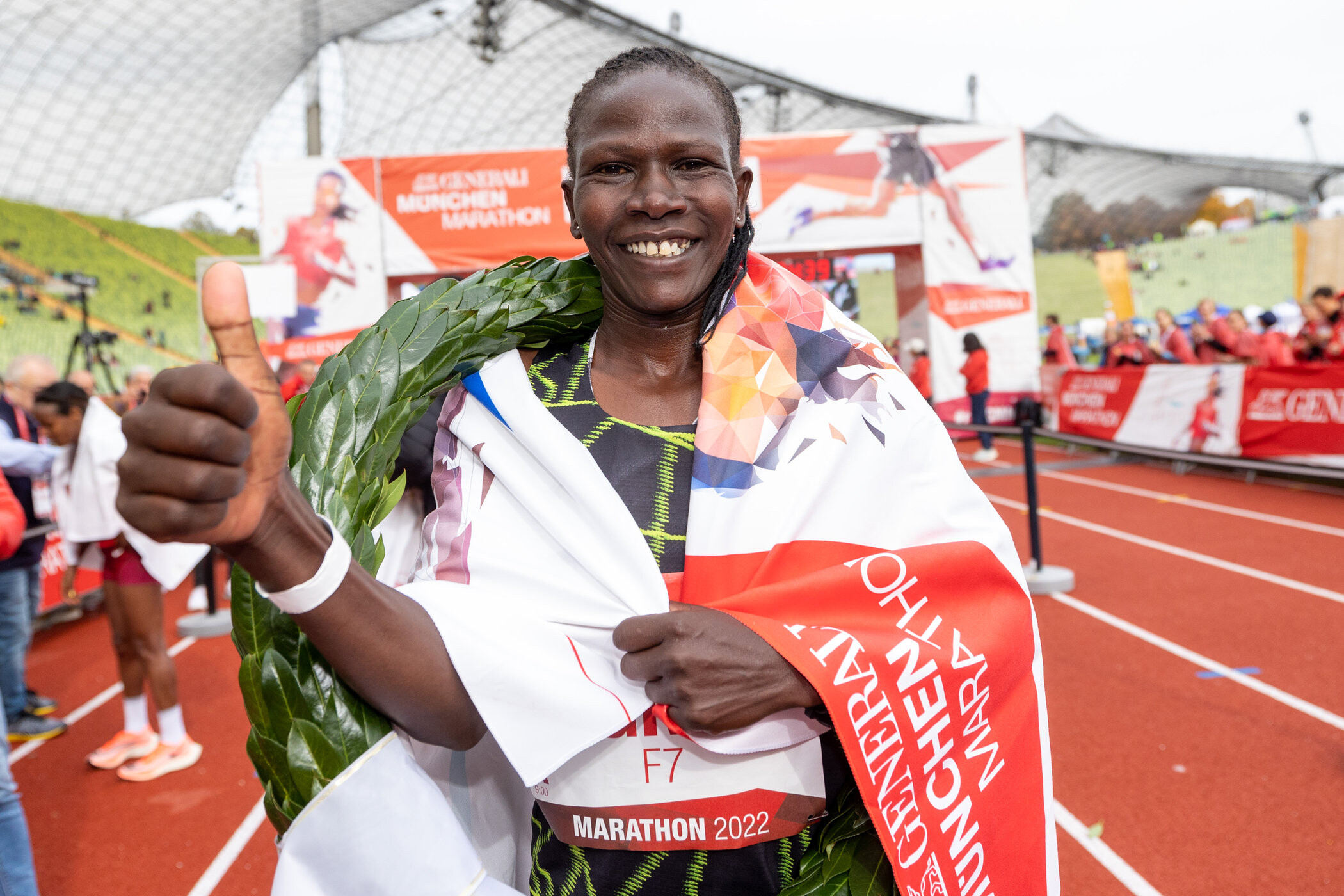
There was a triumph for Kenya in the women’s race as well: Agnes Keino clocked a personal best of 2:23:26, improving the course record by almost nine minutes. The 34 year-old was ahead of the 2015 marathon World Champion Mare Dibaba. The Ethiopian ran 2:24:12 while Souad Kambouchia of Morocco finished third with 2:27:35. Seven women were inside the former course record of 2:32:11.
A total of 18,322 athletes entered the 36th edition of the Generali Munich Marathon, which is a World Athletics Elite Label Road Race. 4,334 of them were marathon runners. The marathon was started by Frank Shorter, who won the Olympic marathon in Munich in 1972. The American had been invited as a guest of honor by the organizers.
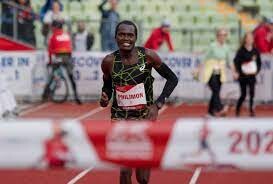
“This was a very special day for the Generali Munich Marathon. We are extremely happy with the great course records. We have reached new dimensions today and we intend to build on this success,“ said Race Director Gernot Weigl. It was the first time in over 20 years that organizers brought back a proper elite field. That was the reason why the long standing course records were smashed by several minutes on Sunday: Kenya’s Michael Kite was the former record holder with a time of 2:09:46 from 2000. Germany’s Susanne Hahn held the women’s mark with 2:32:11 from 2012 when she won the German Championships’ race.
In ideal weather conditions with temperatures of 9 Celsius at the start, hardly any wind and a cloudy sky a leading group of ten runners reached the half marathon mark in 63:41. However Tsegaye Mekonnen was no longer among them. The Ethiopian, who still holds the unofficial world junior record of 2:04:32 and was the fastest runner on the start list, had lost contact shortly before and later dropped out. But a compact group remained together in the lead until the late stages of the race. Five of them passed the 35k mark in 1:45:33. Once pacemaker Bonface Kiplimo of Kenya dropped out shortly afterwards a duel between Philimon Kipchumba and Mengistu Zelalem developed. The Kenyan was then able to put in a surge just before the 41st kilometer and dropped Zelalem. “I did not quite expect to run such a fast debut. But my training went very well and I just tried my best,“ said Philimon Kipchumba, who hopes to achieve times of 2:04 in the future.
In the women’s race Agnes Keino and Mare Dibaba were together in the lead, passing the half marathon point in 71:46 and then 30k in 1:42:01. With around eight kilometers to go Keino, who entered the race with a PB of 2:25:08, went ahead. Former world champion Dibaba, who was the fastest on the start list with her PB of 2:19:52, suffered of muscle problems and was not able to respond to the surge of her Kenyan rival. However Mare Dibaba finished second with 2:24:12, running her fastest time since 2019. “It was my big goal to run a personal best and I am really happy that I achieved it. Even more so since I also won the race,“ said Agnes Keino, who improved to 2:23:26.
(10/10/2022) ⚡AMPby AIMS
Generali Munich Marathon
The GENERALI MUNICH MARATHON has held the elite label of the WORLD ATHLETICS since 2020 and the marathon route is officially measured and recognized. The route runs from the Olympic Park and Schwabing to Leopoldstraße with the Siegestor, via Königsplatz and the Pinakotheken to the English Garden. From there past the Chinese Tower and Art Nouveau villas in Bogenhausen, through...
more...U.S. marathoner CJ Albertson reclaims 50K world record
Fresno, Calif.’s CJ Albertson, 29, set out to reclaim the 50K world record on Saturday at the 35th Annual Ruth Anderson Memorial Run in San Francisco, and he accomplished exactly that in 2:38:44. The Ruth Anderson Memorial Run is held on a certified, 7.24 km (4.5-mile) loop on either an asphalt path or groomed dirt shoulder around a lake. There is approximately 30.5 meters (100 feet) of elevation gain and loss per loop.
A coach and pro-runner for Brooks, Albertson previously held the 50K record in 2020, from a 50,000 meter race held on a Fresno track in 2:42:30. Albertson was the lone runner in the event (although he did have pacers), which was organized by Brooks and billed as an official record attempt.
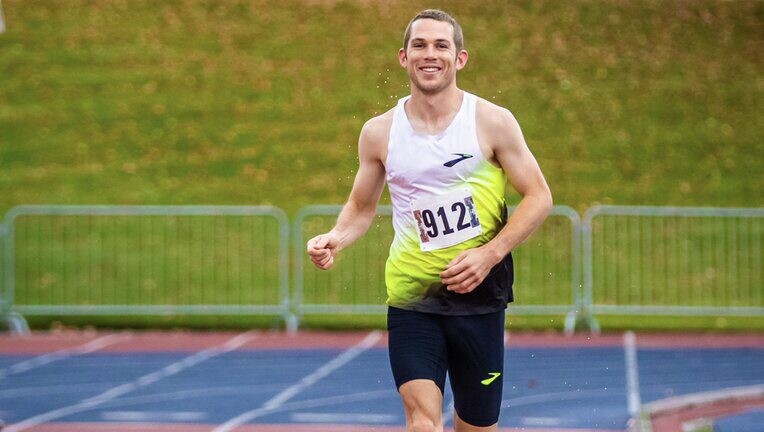
In most other types of racing, road and track results are kept separate, but that’s not the case with ultra distances due to a 2014 rule introduced by the International Association of Ultrarunners (IAU).
Albertson’s 2020 record had been bested several times since 2020, most recently when South Africa’s Stephen Mokoka ran 2:40:13 at the 2022 Nedbank Runified 50K in Gqeberha, South Africa, breaking compatriot Ketema Negasa’s former world record of 2:42:07, also set at the 2021 Nedback event. Alberson currently also holds the indoor marathon world record of 2:17:59, set in 2019 at The Armory in New York City.
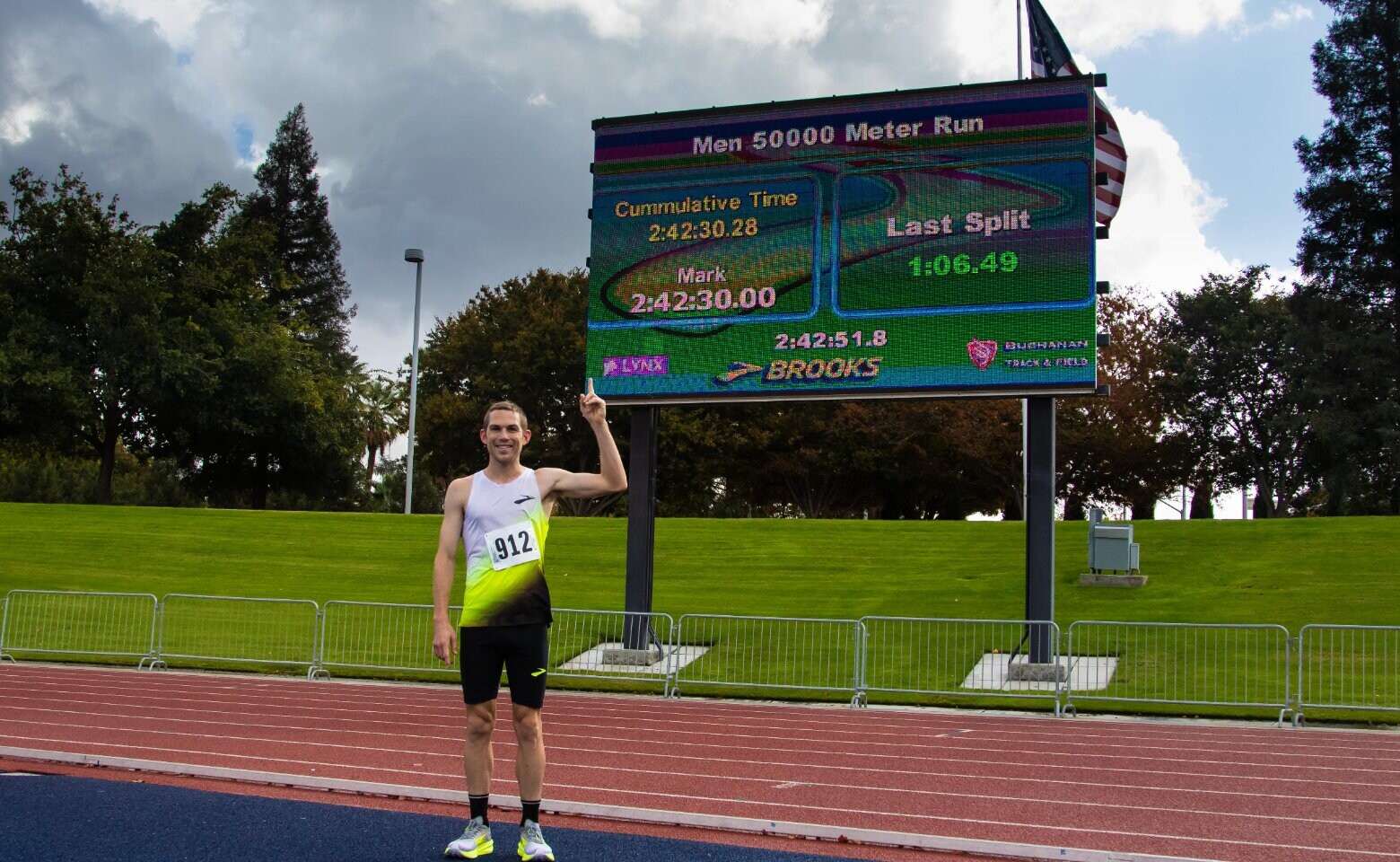
Albertson, whose primary event is the marathon, is also known for his unconventional race strategy: he led for 20 miles of the 2021 Boston Marathon, and ran with the same tactic at the 2022 Boston Marathon; he finished in 10th and 13th place, respectively, setting a PB in the 2022 event in 2:10:23. Albertson says upping the distance to tackle 50K record attempts is natural.
“The 50k distance has never seemed super long or much different from a marathon,” Albertson says. When asked about the role of mental toughness in his racing by iRunFar, he explained: “I don’t think that I endure pain for a long time, because I don’t really think that’s possible. I think that I don’t feel it. I put myself in the position and the mind frame where it’s fun.”
(10/10/2022) ⚡AMPby Keeley Milne
Is Top Miler Jenny Simpson About to Become a Marathoner?
The Olympic medalist signs with Puma and moves to the roads—although she still hits the track in spikes.
Jenny Simpson refuses to come out and say she’s training for a marathon. But all signs point to her training for a marathon.
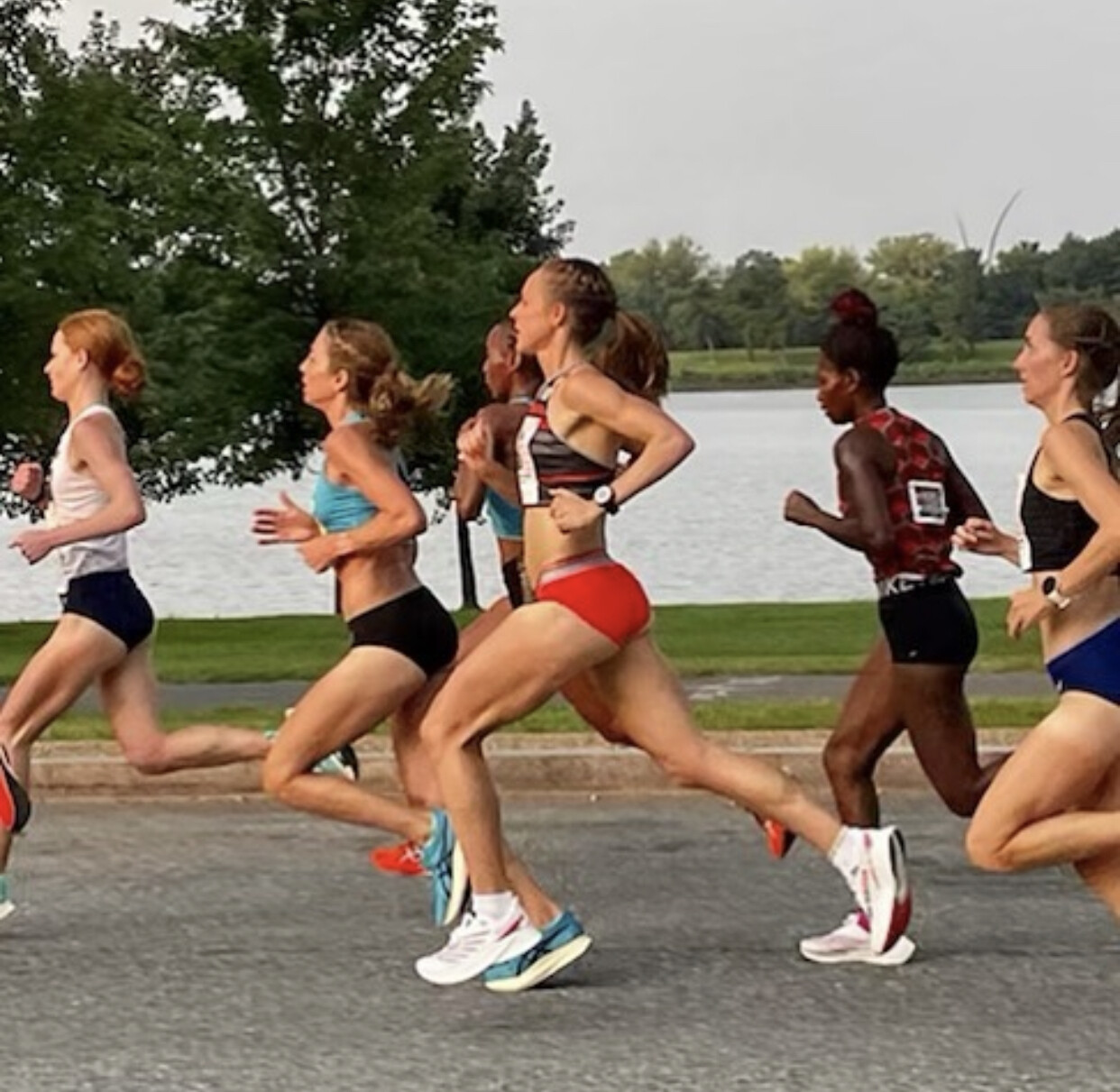
She’s consistently running the highest mileage of her life (85 miles per week). And she has a new sponsor, Puma.
“It’s correct that my emphasis is on the roads,” she said on an October 6 call with Runner’s World. “These next few years is an exploration in the distances and some of the challenges in running that I haven’t tried yet. That’s what I’m most excited about.”
Simpson, 36, has been a stalwart on the track since she was in college at the University of Colorado, going to Europe every summer and building her training around Olympics and World Championships cycles. Between 2011 and 2017, she won four global medals: a gold and two silvers in the World Championships 1500 meters, and Olympic bronze in the same event.
Through 2019, she made every U.S. team going back to 2007. But the pandemic put a sudden halt to that streak. In 2021, she made the finals of the 1500 meters at the Olympic Trials for the postponed Games in Tokyo, but she finished 10th.
“I had such an incredible run on the track,” Simpson said. “And then, just like a lot of people starting in 2020, the vision that I had for those next few years of my career got derailed.”

That fall, she began her transition to the roads, racing the Cherry Blossom 10-miler and finishing second in a sprint finish to Nell Rojas. But at the end of the year, Simpson’s life was upended.
Simpson suffered a stress reaction in her right hip, which took a long time to heal. She was diagnosed with a sports hernia in one of her adductor muscles, which pulled tissue away from one of the pubic bones. “A lovely place to be injured and have people poking and prodding,” Simpson said.
It was by far the most serious injury of her career, but she was able to avoid surgery with hours of physical therapy, working on her adductors, hamstrings, core, and glutes—anything near the hips. When she returned to running, she had several months of stopping and starting until she was finally pain-free.
At the same time, she learned that her future with New Balance—the company that had sponsored her since the beginning of 2010—was not secure.
And then on December 30, 2021, a wildfire broke out close to Simpson’s home, an old schoolhouse in South Boulder, Colorado, that she shares with her husband, Jason, and their dog. They had to flee with little warning. Most of the Simpsons’ immediate neighbors lost their homes, and entire neighborhoods in the bordering towns of Louisville and Superior were destroyed. The couple was displaced for three months while damage was repaired.
“So many things in my life were disrupted at the same time,” she said. “Between the fire and no longer having a sponsor and an injury, all those things swallowed up the first half of my 2022.”
By late spring, things were starting to come around. The Simpsons were back in their home. Her injury was healing. And sponsors were still interested. Simpson, who had represented herself for years, enlisted an agent, Hawi Keflezighi, to help her with a new shoe deal.
“Parting ways with New Balance will be one of the great heartbreaks of my life,” she said. “It was really hard. I didn’t want to make a change. But life is full of surprises. The change to doing a different event felt like this is going to give me some new energy and a new scene. Now that I’m on the other side of a contract with a new brand, I feel very much the same way. Puma believed in what I want to do. That’s really invigorating.”
Puma has made a substantial investment in American women’s distance running over the past two years. The company has added marathoners Molly Seidel, Annie Frisbie, and Dakotah Lindwurm to its roster, and funds a Puma training group with Fiona O’Keeffe and others in North Carolina. But it’s not just 20-somethings. They’ve also signed track runner turned marathoner Sara Vaughn, and now Simpson.
To be clear, Simpson doesn’t intend to just dabble in the roads. She wants to be excellent. And that’s the only thing that’s keeping her from saying “yes,” she’s doing a marathon.
“I will do one if I believe I can be competitive at it,” she said. “We don’t have enough information yet to know if I’ll be really good at it. I have the desire to do it, if my body and mind can handle it.”
Simpson is relishing the chance to reimagine what the end of her career might look like. For a long time, she said, she laser focused on the 1500 meters (and yes, she still spikes up for track workouts). “I’ve been one thing, a very good one thing, for a long time,” she said.
But now it’s time to try something different. She sees American marathoners running well into their late 30s, and doing it after having children, and she realizes she has to adjust her own thinking about what’s possible.
“This new wave of women racing later and having families and racing competitively at the same time, I feel like people just don’t remember how much of a zero option that was when I was younger,” she said. “And it’s not just the world is progressing. I have to progress. I don’t have to just pack it in.”
Simpson said she wants to show that she can try to be good at something else.
“I don’t know if I’m going to be great at the marathon,” she said, “but I really want to try.”
MORE FROM RUNNER'S WORLD ON APPLE NEWS
(10/10/2022) ⚡AMPby Runner’s World
Big day for American marathons in Chicago with first timer Conner Mantz leading the pack
All eyes were on marathon first-timer Mantz, who many believed would take down the American marathon debut record of 2:07:56 set by Leonard Korir in 2019. Mantz, who owns a half marathon personal best of 1:00:55, crossed the midpoint on pace, 1:03:45. But he wasn’t the lone American at that point—Frank Lara was running stride-for-stride with the former Brigham Young University athlete.
“Frank’s a tough runner. He’s one of my favorite competitors. He’s somebody who’s willing to get out there and grind,” Mantz said. “I was expecting him to finish with me because we’ve had a lot of races together where we’ve been within a few seconds of one another.”
Unfortunately, Lara faded hard, covering 35K to 40K in a difficult 19:53, but Mantz kept close to record pace. He ultimately fell 20 seconds short, clocking 2:08:16. While disappointed, the 25-year-old said he was grateful for the experience.
Four American men ran sub-2:10, and while their performance didn’t quite replicate 2019 success, the foursome of Mantz, Zachery Panning, Matt McDonald, and Nicolas Montanez all recorded new personal bests.

Mantz earned $15,000 for being the top American finisher—an early nuptial gift, as he gets married next weekend.
(10/09/2022) ⚡AMPBank of America Chicago
Running the Bank of America Chicago Marathon is the pinnacle of achievement for elite athletes and everyday runners alike. On race day, runners from all 50 states and more than 100 countries will set out to accomplish a personal dream by reaching the finish line in Grant Park. The Bank of America Chicago Marathon is known for its flat and...
more...Emily Sisson sets a new American record in the marathon today in Chicago. clocking 2:18:29!
Three days shy of her 31st birthday and with only one previous marathon on her resume, Emily Sisson took to the streets of Chicago and lowered the American women’s marathon record by 43 seconds, becoming the first American woman to run a marathon in less than 2 hours 19 minutes.
Conditions on the Chicago Marathon’s relatively flat course were ideal, with Sisson — who won the 10,000 at the U.S. Olympic Track and Field Trials last summer — finishing second to Ruth Chepng’etich. The Kenyan repeated as the Chicago champion with a time of 2:14:18, fractions of a second off the world record of 2:14:04 set by Kenya’s Brigid Kosgei in the 2019 Chicago Marathon.
Sisson finished in 2:18:29, taking 43 seconds off the American record set by Keira D’Amatoin January in Houston. Before D’Amato, the record had stood for 16 years; now it has been lowered twice in 10 months, something D’Amato expected.
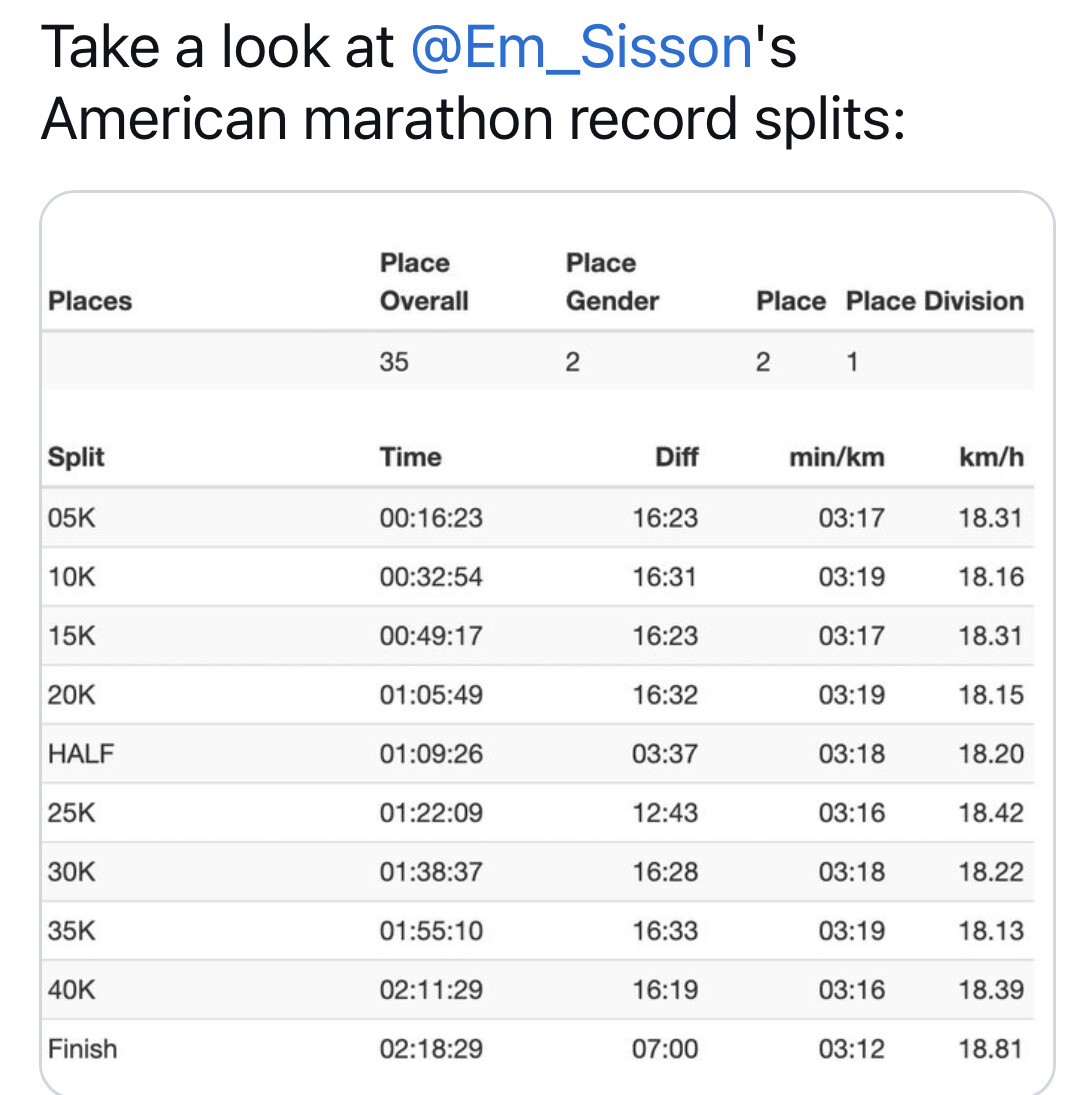
“There’s a number of American women that are also gunning for that record, so I think if I don’t lower it myself, it’s not going to be mine for very much longer,” she said before the Berlin Marathon two weeks ago. D’Amato, who did not run in Chicago, joined Sisson at the finish line, along with Deena Kastor and Joan Benoit Samuelson — women who held the American record before her.
“It’s amazing,” Sisson said, according to NBC Chicago. “I mean, the women standing here today, they’ve all accomplished so much, so just to be amongst them is an incredible honor.”
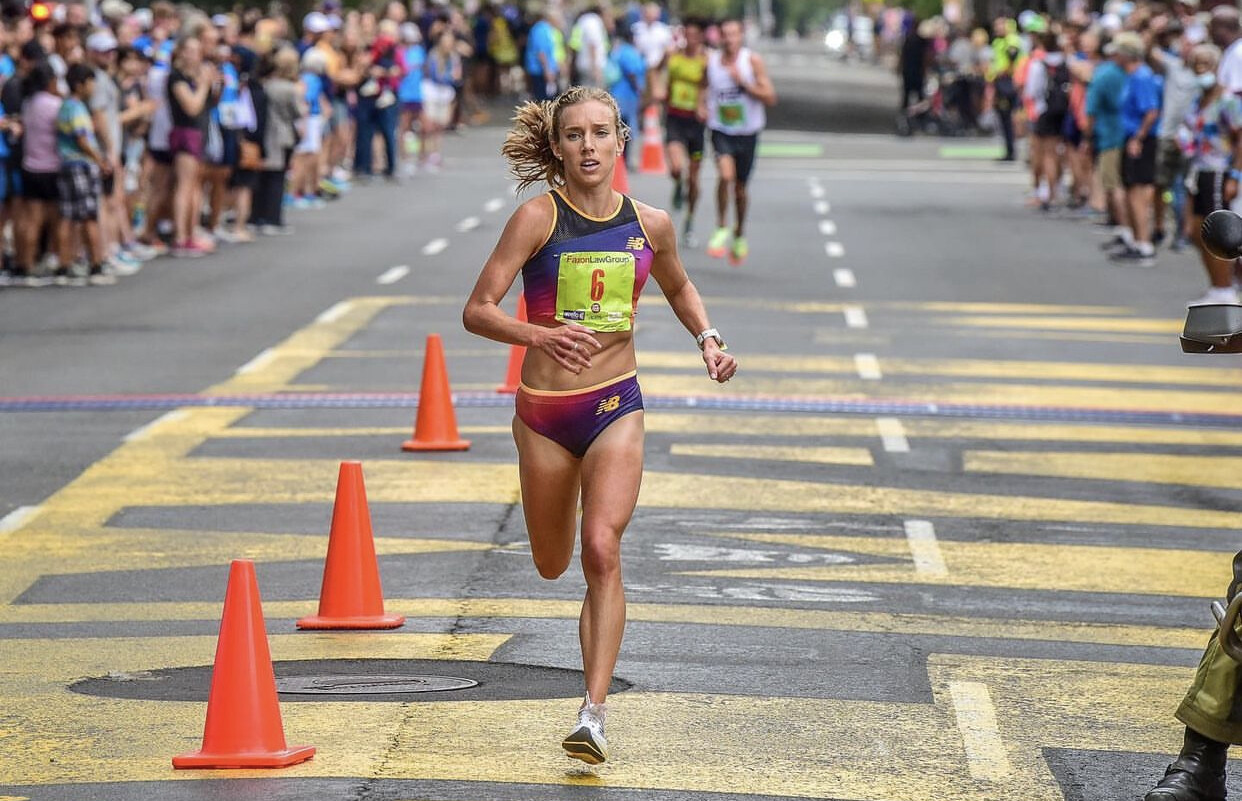
Sisson said she wasn’t aware that the record was in reach until very close to the finish line.
Emily Sisson (born October 12, 1991) is a professional runner for New Balance in Phoenix, Arizona. Emily Sisson was 9th at the 2017 London IAAF World Outdoor Track and Field Championships for 10,000 meters, and won the USATF road 10k Championships in 2016 and 5k in 2018. In the 2019 London Marathon, her first try at the distance, she placed 6th in a time of 2:23:08.
In December 2020, she ran the Valencia Half-Marathon in 1:07:26, narrowly missing the American record set by Molly Huddle in Houston on January 14, 2018. Sisson subsequently qualified to compete at the 2020 Olympics in the 10,000 m run, by coming in 1st place at the US Olympic Trials; she finished 10th at the event. On May 7, 2022, clocking in at 1:07:11 she broke the USA woman's half marathon record at the 500Festival Mini-Marathon in Indianapolis, Indiana.
On October 9, 2022, she broke the American women's marathon record at the 2022 Chicago Marathon, running 2:18:29 to finish 2nd
(10/09/2022) ⚡AMPBank of America Chicago
Running the Bank of America Chicago Marathon is the pinnacle of achievement for elite athletes and everyday runners alike. On race day, runners from all 50 states and more than 100 countries will set out to accomplish a personal dream by reaching the finish line in Grant Park. The Bank of America Chicago Marathon is known for its flat and...
more...Results and Highlights From the 2022 Chicago Marathon
Ruth Chepngetich narrowly missed the world record on the women’s side, while Benson Kipruto It was a terrific day for racing at the 2022 Chicago Marathon and the performances proved that. Over 40,000 runners took to the streets of the Windy City on Sunday morning on what turned out to be a fast day all around.
There was an American record and nearly a world record on the women’s side, while the men’s race saw a good battle between a number of the the world’s top marathoners.Chepngetich Narrowly Misses World Record, Repeats as Champion
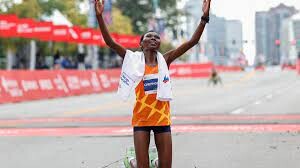

Ruth Chepngetich of Kenya went out guns blazing and clocked an incredible 2:14:18 to win the Chicago Marathon in the second-fastest time in world history, just 14 seconds off Brigid Kosgei’s world record which was also set in Chicago.
She went out super hot in 65:44 at the halfway mark—on pace for a 2:11!—and though she slowed after that, she was still on world record pace through 40K before missing the time.Benson Kipruto Breaks Away for the Win
With a late surge in the 25th mile, Benson Kipruto of Kenya won the 2022 Chicago Marathon in 2:04:24, a personal best and the fastest winning time in Chicago since 2014. He also won the 2021 Boston Marathon.
His older brother, Dickson Chumba, won the Chicago Marathon in 2015 and twice won the Tokyo Marathon in 2014 and 2018.
Defending champion Seifu Tura was second in 2:04:49.
Emily Sisson Breaks the American Record
Emily Sisson ran 2:18:29 to place second at the Chicago Marathon and smash the American record, which was set earlier this year in 2:19:12 by Keira D’Amato in Houston after being held by Deena Kastor for 16 years.
Sisson also set the American record in the half marathon this year in 1:07:11. The U.S. Olympic Trials champion in the 10K, who turns 31 this week, suffered an injury during her buildup to the Olympic Games in Tokyo and had to withdraw from a planned marathon last fall.
(10/09/2022) ⚡AMP
Chris Nikic Becomes the First Athlete with Down Syndrome to Finish the Ironman World Championship
With his mantra of 1% better every day, Chris Nikic continues to change the perception of what is possible. Crossing the finish line at the Ironman World Championships adds his name to the history books and cements his legacy as a pioneer in the sport.
Like every other competitor in Thursday’s Ironman World Championship in Kailua-Kona, Hawaii, Chris Nikic had moments when he struggled mightily.
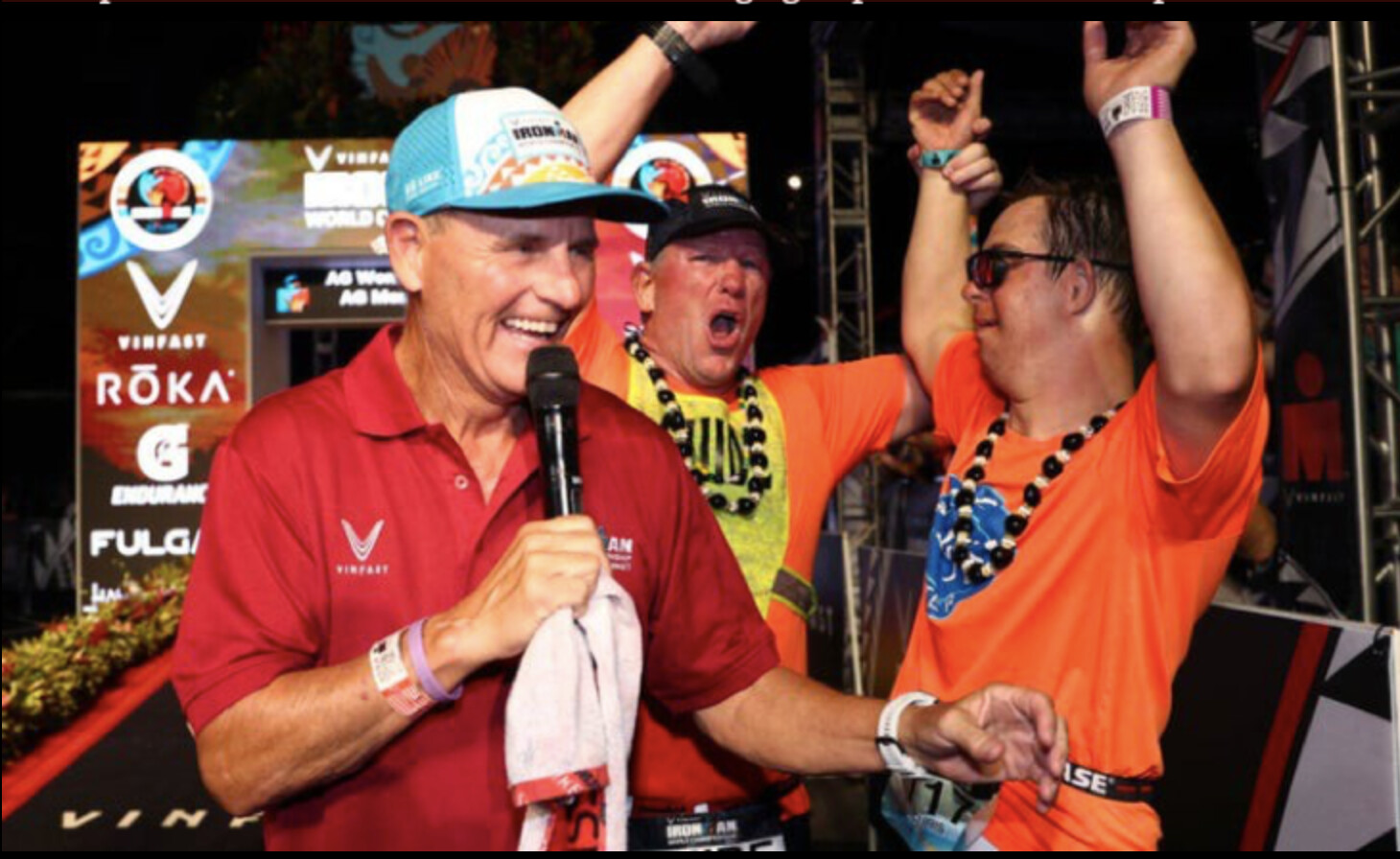
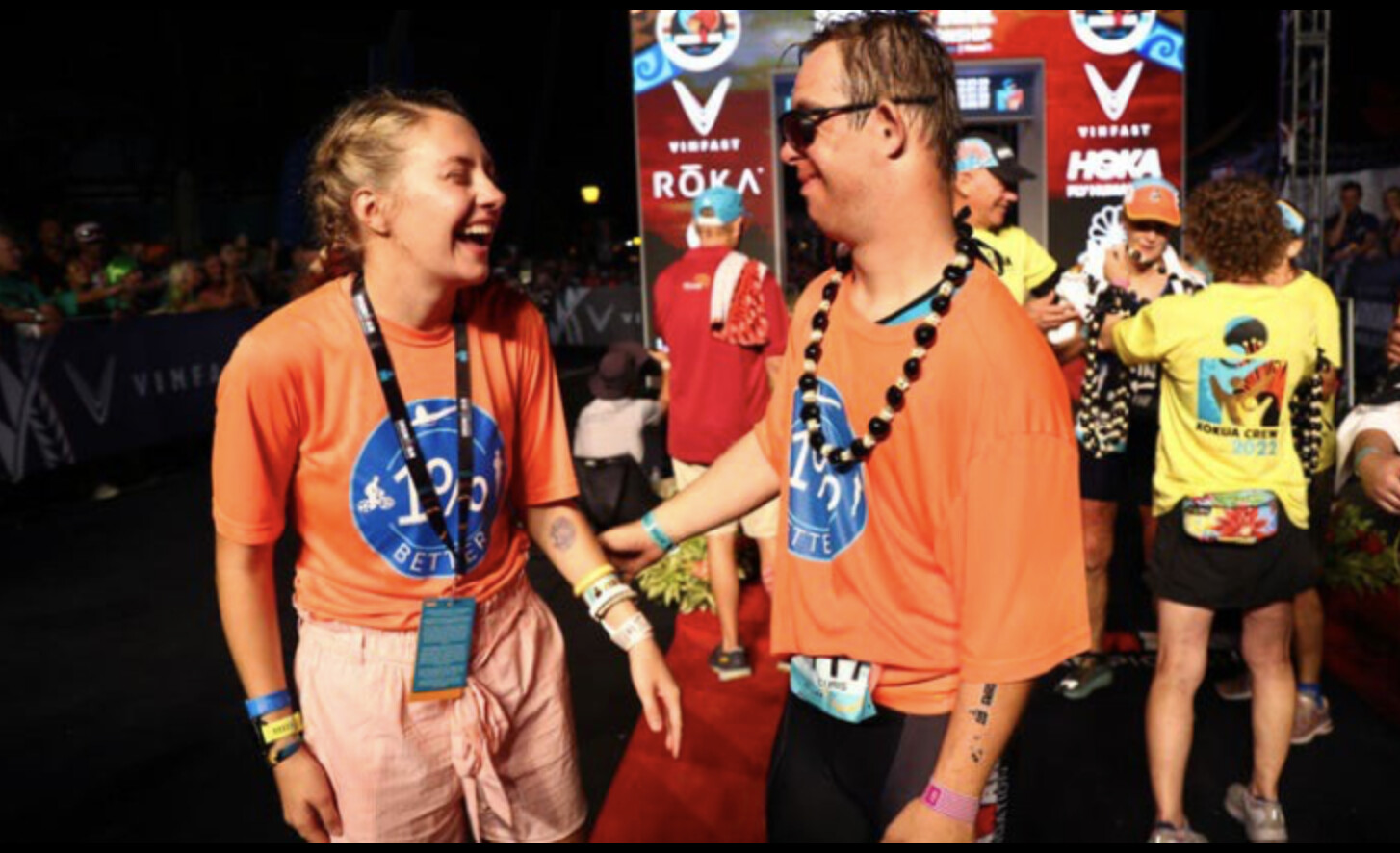
Completing a triathlon that includes a 2.4-mile swim, a 112-mile bike ride, and a 26.2-mile run is no easy task for anyone. It’s especially difficult when mid-afternoon temperatures top 90 degrees, the humidity is a muggy 85 percent, and it feels like you’re breathing through a straw. But Nikic is a unique kind of athlete, fueled by an enormous amount of determination, purpose, and the belief that anything is possible.
Late last night, after battling fatigue, dehydration, heat, wind, and moments of self-doubt, the special needs athlete from Florida became the first individual with Down syndrome to finish the 140.6-mile world championship race in Hawaii.
With help of his volunteer guide, Dan Grieb, Nikic completed the race in 16 hours, 31 minutes and 27 seconds, finishing to a cascade of cheering fans, many of whom returned to the finish line long after Chelsea Sodaro won the women’s professional race in 8:33:46. Sodaro made sure to be there, too, alongside Ironman legend Mark Allen, a six-time winner of the race, to experience the heart-warming, tear-inducing moment.
When Nikic crossed the finish line, he jumped into the arms of Grieb, who was at his side the entire way. They were tethered together on the open-water swim, in the choppy water of the Pacific Ocean. They rode side-by-side on the hot and windy bike course from Kona out to the remote town of Hawi and back along the Queen Ka’ahumanu Highway. They jogged and walked stride-for-stride on the 26.2-mile out-and-back course, to the Natural Energy Laboratory and back, to the seaside finish, a stone’s throw from where it all began.
Amid the crowd’s roar and Led Zeppelin’s “Whole Lotta Love” blaring on the sound system, Nikic marveled in the moment as he saw his finish time posed on a digital display board and then was greeted by his girlfriend Adrienne Bunn, his dad, Nik, and numerous other family members and supporters. All of this was an incredible way to celebrate his 23rd birthday, which Nikic did by not only finishing the grueling race, but by stunning the already weepy fans by presenting Bunn, a Special Olympics triathlete, with a promise ring.
It was an amazing finish to a challenging day that began at 6:27 a.m. local time and finished at 10:58 p.m. Given the harsh conditions, Nikic’s splits were impressive — 1:42 for the swim, 8:05 for the bike, and 6:29 for the run. He finished 2,265th place out of 2,314 competitors on the day, but at the finish line late Thursday night, he was No. 1 in everyone’s heart.
“This is something that changes perceptions for every parent worldwide with children with Down syndrome,” said longtime Ironman finish-line announcer, Mike Reilly. “Now they all know one thing for sure – anything is possible.”
Nikic’s resounding effort was one of the biggest highlights for the first Ironman World Championship, as it returned to Kona for the first time since 2019. The championship race was postponed in 2020 and again in 2021 because of COVID-19, and eventually the 2021 race was moved to St. George, Utah, last spring.
Other age-group highlights included 78-year-old Cherie Gruenfeld of Cathedral City, California, winning her 14th Ironman age-group world title in 16:20:07, and the 17:58 finish of Team James — 57-year-old Beth James, of Crested Butte, Colorado — who towed and pushed her 26-year-old daughter, Liza James, who suffered a traumatic brain injury in a 2004 car accident that rendered her nonverbal and unable to walk.
Because of so many backlogged qualifiers, the race was split into two days this year, with professional women and age-group women racing on Thursday, along with physically challenged athletes, hand-cycle competitors, and competitors from several men’s age-group divisions. The men’s pro race and the remainder of the men’s age-group divisions will compete on October 8.
Although he had been involved in a lot of sports growing up, Nikic’s triathlon journey started four years ago with a much shorter triathlon at the Special Olympics event in Florida. When that went well, he and his dad focused on something bigger, something they knew could change his life. He knew that if he could do big things, maybe one day he would be able to fulfill his ultimate dream of living independently, getting married, and having a family of his own.
Nikic has parlayed his triathlon success into his 1% Better Foundation as a platform to show what is truly possible, a foray into motivational speaking as a means to help others with Down syndrome. He and Grieb both competed in the race wearing bright orange 1% Better shirts.
“I want to be an example for other people with Down syndrome. I want to open doors,” Nikic said previously. “And I want to raise awareness. Anyone who sees people with Down syndrome: don’t look away or walk away.
In 2020, at age 21, he became the first person with Down syndrome to finish an Ironman triathlon. For this accomplishment, Nikic was awarded the Jimmy V Award for Perseverance as part of the 2021 ESPY Awards.
After that race, he was invited to participate in the 45th Ironman World Championship in Hawaii. To prepare, Nikic had been training three to four hours a day, six days a week, including strength training and yoga. It’s not an easy thing to do for anyone, but especially for Nikic, who suffers from reduced muscle tension (muscular hypotonia).
But Nikic has been overcoming obstacles his entire life. Nikic was born with several birth defects that affected his heart function, hearing, and balance, requiring several serious surgeries. According to the Centers for Disease Control, Down syndrome is a condition in which a baby is born with an extra copy of a chromosome. That changes how an infant’s body and brain develop, which can cause both chronic mental and physical challenges for the individual.
At 5 months old, Nikic endured open-heart surgery. He was so weak and had such poor balance that he did not walk on his own until he was 4. To keep him from choking, his family fed him baby food until he was 6. When he finally learned to run, it took him months to discover how to swing his arms at his side, instead of holding them straight above his head. It was a long journey from a challenging boyhood to the Ironman World Championship, but Nikic has always been up to the challenge.
“The second Nikic gets in the water for the start of the race, people all over the world with intellectual disabilities have won and become part of the larger endurance community,” Grieb said before the race.
(10/09/2022) ⚡AMPThe Marathon Course For Paris 2024 Is Announced And It’s A Beauty
ThParis, France, is getting ready to welcome the 2024 Olympic Games from July 9 through August 11. Given the late edition of Tokyo 2022 (in 2023), this is a short cycle for both athletes and fans alike.
In the last week, the marathon route for Paris 2024 has been revealed, and it’s going to be a beauty. The route has been described by the organizers as “spectaculaire, exigeant, inspirant” – breathtaking, demanding, inspiring. The marathon course is all of these things, and more. It’s a 26.2 mile (42km) tour around one of the most iconic cities in the world, with a side-serving view of the history and forests lying just outside of its boundaries.

One of the key goals of the Paris 2024 committee is opening up the Olympic and Paralympic experience to the general public. Before the elites take to the streets, Paris will host the Paris 2024 Mass Participation Marathon, allowing a total of 20,024 (get it?) amateur athletes to experience first hand the same course as the Olympic athletes. Another shorter race will take place within the same city limits, taking in all the sites, but packed into a more accessible 10K distance. In line with the Paris 2024 organizers committing to gender equity, entries to both citizen’s races will be spread equally between female and male athletes.
Runners and spectators during the Olympic Games will be treated to some of the classic Parisian landmarks, plus the wooded parks and forests lying between the bustle of the capital and the village of Versailles, home to the eye-opening chateau of the same name.
The course will pass through 9 districts: Paris – Boulogne-Billancourt, Sèvres, Ville d’Avray, Versailles, Viroflay, Chaville, Meudon, and Issy-les-Moulineaux.
Sit back and take an armchair meander through the course before you start planning your trip.Miles 0 – 1.6 / Kilometer: 0 – 3
Starting off at a Parisian classic, the local town hall, the athletes head west. They run parallel to the River Seine, before trotting off to the first landmark of the route at mile 1.6. The Opéra Garnier, at the end of one the classic boulevards in the city, is opulence at its finest. It’s a space for theatrical plays and ballet performances, but think of any print advertisement featuring a Parisian backdrop, and you’ve probably seen it. The exterior is as impressive as the interior, with its famous copper roof, turned green with age, guarded by two enormous gold gargoyles that could be the nightmare of pre-race dreams.

Tourist Tip: While the cafés around the Opéra Garnier might add a “scenery tax” to their beverages, it’s worth the extra euro or two to spend an hour contemplating every detail of this iconic building streetside.Miles 2.5 – 3 / Kilometers 4-5
Housing some of the most important and historical art in Europe, the Louvre is the next stop for marathon runners. They pass by the modern glass pyramid built in front of the imposing building that eases visitors into the museum. It’s a bold juxtaposition of the modern and the historic. As controversial as it was at the time of being built, the French have embraced la pyramide as part of their modern history.
Tourist Tip: Located right next to the Louvre are the urban Jardins du Luxembourg, a formal park to escape the sidewalks and take a stroll à la parisien.Miles 3 – 10 / Kilometers 5-17
Passing along the banks of the River Seine, runners will pass next to the Grand Palais and get a glimpse across the river to the finish line at Les Invalides. They score their first uninterrupted view of La Tour Eiffel on the other side of the bank around kilometer 8. Athletes then follow the classic boulevards and head out on the long, straight journey out of the city.Approx Miles 12.5 – 14 / Kilometers 20 – 23
Just over halfway in the race, the athletes get to experience the playground of Louis XIV and the town and palace of Versailles. The only word to describe this chateau is regal. Its architecture and interior are a showcase of royal opulence, before the French Revolution put an end to the monarchy. With manicured gardens complete with lakes and views of the palace, both runners and spectators will take an extra breath as the marathon route passes by.
Tourist Tip: With an easy train journey from the city on the RER line, you can easily spend a full day taking in the grandeur of the palace and enjoying the street cafés of the town.Approx Miles 15 – 18.5 / Kilometers 24 – 30
Heading out of Versailles on one of the main boulevards, runners get a respite from the urban and enter the Fôret de Meudon, a wooded escape from the city. They should take the time to enjoy the peace and sound of their feet to get ready for the last 7.5 miles of the race.
Tourist Tip: For a breath of fresh air after navigating the bustling city, the Forêt de Meudon is made for a pair of gravel running shoes. There are plenty of running routes you can pre-plan using Gaia GPS.The runners start to head back to Paris, running again parallel to the River Seine, making a turn to its banks at kilometer 34. After a few miles along the river, they turn to run past La Tour Eiffel. Built to celebrate the centenary of the French Revolution (see aforementioned visit to the Château de Versailles), it’s one of the most recognizable national monuments in the world.
Tourist Tip: No visit to Paris is complete without a selfie or group photo at La Tour Eiffel. For word nerds, despite its somewhat phallic presence, ‘La’ Tour Eiffel is actually a feminine word, and not to be confused with masculine ‘Le’ Tour (de France). Visit our partner publication Velo News for all you need to know on that subject.Mile 26.2 / Kilometer 42
After the whirlwind tour of Paris, runners will come into the final few miles and the finish line awaits them at the wide and open esplanade housing a collection of buildings referred to as Les Invalides. The gold-domed enclave welcomes athletes to the finish line. Only one of them will take home gold on race day, but ending the marathon under the golden dome will help shine up the memories the athletes will take back home.
Tourist Tip: Les Invalides is the hub of all things military history in France. The golden dome itself is part of a chapel in the series of buildings, and houses the remains of Napoleon Bonaparte. A final pilgrimage to visit one of the icons of French history is a solid way to end the day.e marathon elites at Paris 2024 will be treated to a slice of history along this iconic course. And 20,024 other lucky athletes will get to experience it too.
(10/09/2022) ⚡AMPParis 2024 Olympic Games
For this historic event, the City of Light is thinking big! Visitors will be able to watch events at top sporting venues in Paris and the Paris region, as well as at emblematic monuments in the capital visited by several millions of tourists each year. The promise of exceptional moments to experience in an exceptional setting! A great way to...
more...Hawaii Ironman World Championships 2022 Results: Gustav Iden Victorious With A New Course Record
Norway's Gustav Iden took the win at the 2022 Hawaii Ironman World Championships in his first try on the Big Island and second Ironman ever in a time of 7:40:24.It was calculated gutsiness that helped Norway’s Gustav Iden claim the 2022 Hawaii Ironman World Championship on his first try with a result that surprised no one – and everyone.
Much like women’s race winner, Chelsea Sodaro, this was Iden’s second Ironman event ever, but he raced it like a veteran, making decisive moves on the bike, pacing well on the run, and seizing the moment to take it all. His time of 7:40:24 is also a new course record and his 2:36 would be a new run course record of 2:36:15.

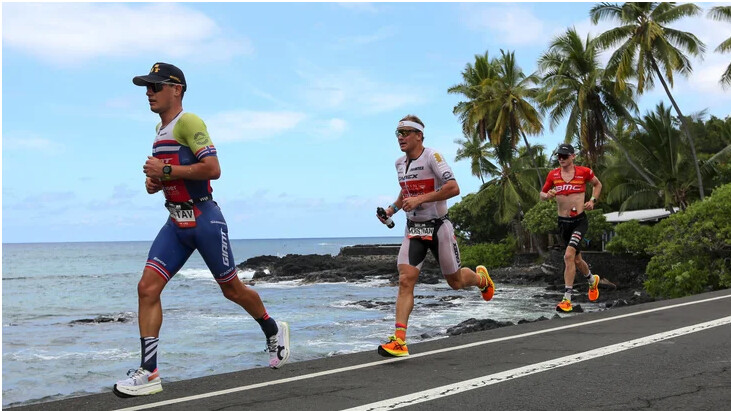
Read on to see how the 2022 Hawaii Ironman World Championship played out on the Big Island.Hawaii Ironman World Championships 2022: The SwimWith similar conditions to Thursday’s women’s race – slightly choppy with a rolling swell – many assumed the swim would favor the stronger swimmers. But on this day, everyone seemed to be a strong swimmer. Straight from the start cannon, a large pack formed, led by Sam Laidlow and Florian Angert. Despite attempts to pull away in the first half of the swim, neither were successful in building a definitive lead.
Instead, a staggering 19 pros exited the water within 15 seconds of each other, led by Angert in 48:15 and Laidlow in 48:16. This tight pack included some of the most dangerous triathletes in the field, setting up the likes of Kristian Blummenfelt, Gustav Iden, and Braden Currie in perfect position for a tactical race at the front of the field.
One minute and 15 seconds later, another large pack emerged from the water, containing even more strong cyclists capable of quickly bridging the gap. These included Igor Amorelli, Patrick Lange, Rudy Von Berg, and Magnus Ditlev.A third and final large pack, four minutes down from the leaders, contained Matt Hanson, Chris Lieferman, Cam Wurf, Sebastian Kienle, Joe Skipper, and Lionel Sanders.
Hawaii Ironman World Championships 2022: The BikeLaidlow was the one to take charge in the initial miles of the bike, setting an average pace of 27 miles per hour over the first 25 miles. Max Neumann was the only one willing to take the bait, staying just out of Laidlow’s draft to avoid a penalty.
Behind them, big groups stuck together as the crosswinds picked up through the lava fields. Fifty seconds down, the first chase group of 11 included Ditlev, Blummenfelt, Iden, O’Donnell, and Bakkegard; almost two minutes behind was a group of 18 that included contenders like Lange, Currie, Ben Hoffman, and Denis Chevrot.At mile 30 on the bike, the massive groups continued through the rolling hills on the way to Hawi. With 42 men racing within 5 minutes of each other, space was hard to come by – and the referees noticed.
As with the women’s race on Thursday, the penalties began early and often, with Angert, Clement Mignon, Mathias Petersen, and Arnad Gilloux being the first to serve their five-minute punishment for position infractions. Leon Chevalier soon joined them for a one-minute penalty as well.
Soon, more setbacks started to snowball in the men’s field. With each passing mile, Sanders saw the race get away from him as his position slipped from 4:42 down out of the water to 7:13 by mile 30. Colin Chartier, who was in the first large pack out of the swim, found it difficult to recover after an early flat tire. Lange seemed unable to jump on to the train of competitors passing him at full speed, and in a shocking twist, pre-race favorite Currie dropped from the race around mile 35.
Meanwhile, the men’s race began to take shape near the base of Hawi as Ditlev went to the front of the race and took control. Behind him, Laidlow and Neumann could not match the effort, while countrymen and training partners Iden and Blummenfelt sat 30 seconds behind Ditlev, working together near mile 50.
Just after the Hawi turnaround, Laidlow reclaimed his lead, but Ditlev, Neumann, Blummenfelt, and Iden were hot on his tail. Further back, a group including Kyle Smith, Tim O’Donnell, and Jesper Svensson trailed the leaders by 2:30; 3:30 back from the leaders were Kristian Hogenhaug and Daniel Bakkegard. A big group of dangerous bike/runners sat 5 minutes behind the front pack that included Wurf, Chevalier, Skipper, Lange, Kienle, and Andreas Dreitz.
Near mile 90, disorganization plagued the chase group of Iden, Blummenfelt, Ditlev, and Neumann as they lost an additional 1:30 to the race leader, Laidlow. Further back, Wurf, Kienle, and Chevalier led a rally to try to get within striking distance of the front, putting 2:20 into the Norwegian group over a span of over 10 miles.
As the race barreled toward T2, the chaos continued, with Ditlev receiving a five-minute position penalty at a time when most would be making their critical moves in a race.Up front, Laidlow seemed to not know – or care – about what was playing out behind him. Instead, the young gun stayed focused on his own race, surging ahead. By mile 88, Laidlow’s lead grew to 2:37; at mile 94, a 4:11 advantage.
Heading into T2, Laidlow smashed Cam Wurf’s 2018 bike course record with a split of 4:04:36—knocking almost five minutes off the previous time. Behind him, the chase group was six minutes down, and the second chase had 8:30-9:45 to make up.
Laidlow set out on the run with a target on his back. The question then became: Would his bold bike strategy pay off, or would it end in disaster? Could he actually beat the notoriously fast Norwegian runners to the finish line? Could anyone?
Hawaii Ironman World Championships 2022: The RunAs the men’s pro field moved through T2, the field shifted from large packs to a steady trickle. It was soon clear who had paced themselves well on the bike and who had burned their matches. Behind Laidlow, Blummenfelt and Iden led the charge, setting out at a 5:54 minute-per-mile pace to the leader’s 6:13 pace. Behind them, O’Donnell and Kienle were the fastest movers in the second chase pack early in the run, along with Ditlev—finally released from his penalty.
As Laidlow made his way up the Palani climb, his pace slowed to 6:23. Iden and Blummenfelt powered on, checking their watches to ensure they were sticking to their staggeringly consistent 5:58 pace. With every footfall, they seemed to cut into Laidlow’s lead. Neumann, looking to hold his own in his Kona debut, followed suit.
Slightly further back, strong runners like Kienle and Ditlev were working together as well, slowly making their way up through the top ten, through the first half of the marathon—as did Joe Skipper. At the halfway point, they found themselves in fifth and sixth place, with elder statesman Kienle offering words of encouragement to the young Dane as they ran together.Between miles 11 and 16, the Norwegians’ march toward Laidlow started to stall as the Frenchman found a way to staunch the bleeding. As he made his way out the Queen K, it seemed as if he found a pace he could comfortably sustain.
At the turnaround in the infamous Energy Lab, Laidlow could see exactly where he was relative to his competition. He knew he had a lead of just over two minutes, but what he didn’t know was whether or not the Norwegians had another gear. Anticipating a battle, Laidlow gathered all he could from the aid stations – cups of ice, a gallon bottle of water to douse himself on the scalding Kona pavement.Indeed, Iden had just decided to drop his friend and training partner, pulling ahead in the Energy Lab just before mile 19, while Blummenfelt trailed behind. With less than eight miles to go, Iden broke out into 4:38 min/mi pace, laser-focused on the task ahead.
At mile 22, Iden gave Laidlow a pat on the back to let him know his time at the front was up. With a handshake and a smile, Iden made the pass, striding confidently to the finish line.After the pass, it was the Iden show, as the Norwegian extended his lead to set a new course record with a time of 7:40:24 and a new run course record of 2:36:15. Not far behind, Sam Laidlow valiantly hung on for second place with a time that also broke the previous run record, 7:42:24. Kristian Blummenfelt would fade only slightly, but still stand on the podium with another course record time of 7:43:23.
“That was so freaking hard,” Iden said just moments after his record-setting finish. “The last 10K I was worried about the legend of the island killing me. Everything was going pretty smoothly until I caught Sam Laidlow. When I passed him, the island really tried“That was so epic, and I’m so proud of Sam and Kristian making the podium. I’m not sure if I’m coming back here, this was too hard.”
Laidlow was tearful after leading the race for so long.
“I was just loving it, I’ve been dreaming this since I was four or five,” said an emotional Laidlow. “This is my style of racing. I’ve been inspired by Jan Frodeno, and the way he races. If I win, I want to win like he does. I’m just getting started.
“It’s hard to believe as I’ve been watching the Norwegians, and to beat the Olympic champion, I really can’t put words to it.”
(10/09/2022) ⚡AMPTwice LA Marathon champ John Korir aims for a Majors title
Two-time Los Angeles Marathon champion John Korir now wants a bigger title.
Korir will make his Marathon Majors debut at Chicago in the USA on Sunday confident of launching a serious assault on the crown.
He enjoyed an encouraging outing at the Los Angeles Marathon in March where he retained his title in a personal best time of 2:09:08.
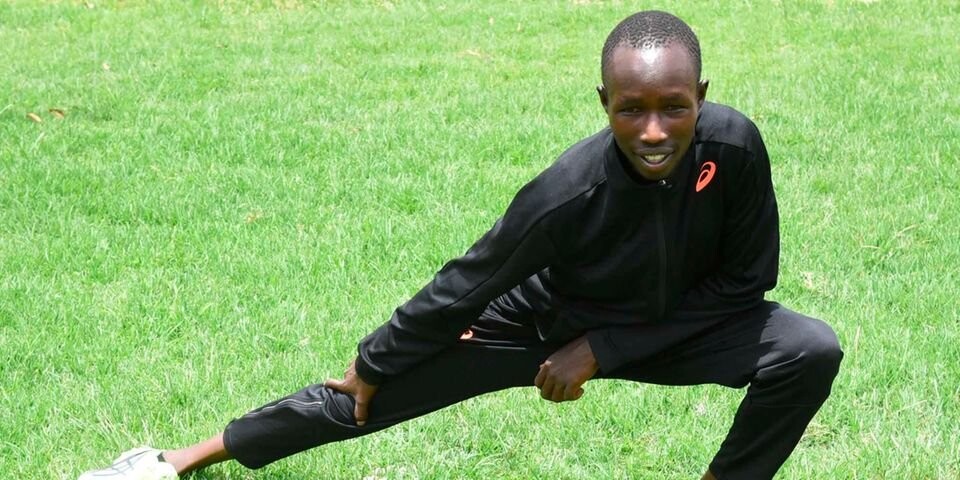
In Chicago on Sunday, Korir will come up against compatriots Amsterdam Marathon champion Bernard Koech who has a personal best of 2:04:09 and is the second fastest man in the field, Paris Marathon champion Elisha Rotich (2:04:21), Eric Kiptanui (2:05:47) and the Boston Marathon champion Benson Kipruto (2:05:13).
The Kenyan athletes will be seeking to wrest back the title from Ethiopians after Seifu Tura won last year with USA’s Galen Rupp coming in second while Kenya’s Eric Kiptanui finished third.
Korir told Nation Sport he was ready for the task and he will be eyeing a top-three finish.
“I started with build up at Kamoi in Elgeyo Marakwet which is known for its hilly terrain before shifting to Eldoret. I can say that I’m in good shape,” said Korir.
He added that since his elder brother Wesley Korir, a retired athlete, competed in the race before, he has given him tips about the course and he believes he will perform well.
“I’m lucky because my brother ran the Chicago Marathon when he was an active athlete and he has been guiding me on how to race on this course. He will personally be there to give me support during the race and I just want to run well and make him proud,” he said.
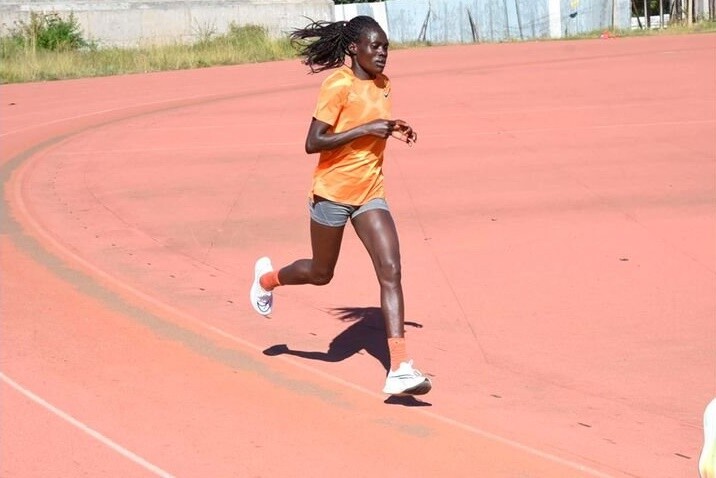
In the women category, three-time Milano Marathon Vivian Kiplagat, who trains at Kapsait Athletics Training Club in Elgeyo-Marakwet County will also be seeking the big prize as he comes face-to-face with defending champion Ruth Chepng’etich.
Incidentally, the two are under Rosa Associati management.
Also in the mix as another Kenyan, Celestine Chepchirchir.
Kiplagat said that after winning Milano Marathon in April in a personal best time of 2:20:18 she was in great shape physically and mentally.
“I’m focused on the race which I know will be fast and if the weather conditions are favorable, I want to run a personal best,” said Kiplagat.
Kiplagat won the 2018 Honolulu Marathon in Hawaii in 2:36:22, and the 2019 Abu Dhabi Marathon with a personal best time of 2:21:11. This was a massive minute inside her winning time in the Milano Marathon that year.
(10/08/2022) ⚡AMPby Bernard Rotich
Bank of America Chicago
Running the Bank of America Chicago Marathon is the pinnacle of achievement for elite athletes and everyday runners alike. On race day, runners from all 50 states and more than 100 countries will set out to accomplish a personal dream by reaching the finish line in Grant Park. The Bank of America Chicago Marathon is known for its flat and...
more...Valencia Half Marathon entry list bristling with talent
Organizers of the Valencia Half Marathon have once again revealed their hand in wanting blistering times, and possibly a world record at this year’s edition that will be held on October 23.
In the official elite entry list announced Friday, Commonwealth Games 10,000 bronze medalist Kibiwott Kandie is the stand-out entry in the men’s race.
Remember Kandie is the culprit who broke the world record over the distance two years ago in a scorching 57 minutes 32 minutes. That record was however lowered by his rival, Uganda’s Jacob Kiplimo to 57:31, in Lisbon last year.
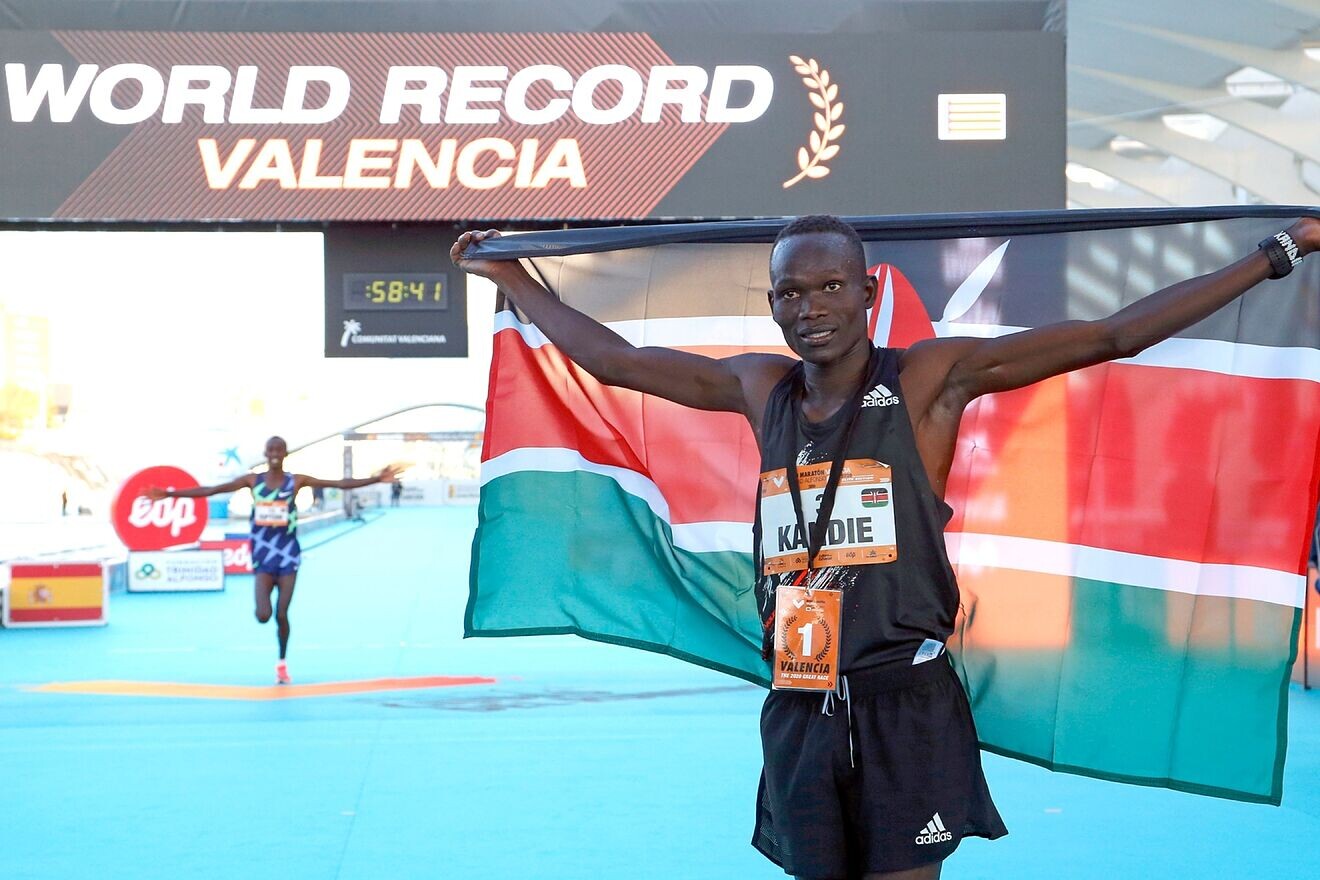
Other star runners of note lined up in the men’s race are Kenyans Sebastian Sawe (58:02), Daniel Mateiko (58:26), Kennedy Kimutai (58:28), Rodgers Kwemoi (58:30), Bernard Ng’eno (59:07) and Alfred Barkach (59:36).
“I’m glad I will be competing once again in Valencia Half Marathon where I ran a world record and this time I don’t want to say anything but just run a good race,” he said.

Pushed further he relented that he would not mind lowering his personal best time.
In the women's category, world 10,000m bronze medalist Margaret Chelimo will be leading her compatriots including Vicoty Chepng’eno who is the fastest in the field with personal best of 1:05:03 and Irene Kimais (1:06:34).
Also in the line-up are Purity Komen (1:07:10), Vivian Melly (1:08:17), Agnes Ngolo (1:09:15), and Kenyan-born Turk Yasemin Can.
While admitting a world record may not be on the cards, Marc Roig, recruiter of the Valencia Half Marathon international elite, averred: “I am convinced that the quality of the elite that will run this half-marathon will be news around the world again thanks to its high standards.”
Ethiopia’s Letesenbet Gidey broke the mixed-gender world record of 1:02:52 last year.
(10/08/2022) ⚡AMPby Bernard Rotich
Valencia Half Marathon
The Trinidad Alfonso Valencia Half Marathon has become one of the top running events in the world. Valencia is one of the fastest half marathon in the world. The race, organized by SD Correcaminos Athletics Club, celebrated its silver anniversary in style with record participation, record crowd numbers, Silver label IAAF accreditation and an atmosphere that you will not find...
more...Here's Why You Keep Getting Injured, According to a Physical Therapist.
Today, the hill feels easier to climb. I step and press firmly into the rain-saturated dirt and raise myself one step closer to the horizon line, my heels lifted. The springs at the back of my legs are loaded and ready to release. There is no stretch or strain. I feel powerful. My back is erect and does not ache. No collapsing today as I charge up the hill. I can still hear my cross-country coach say "lean into it."
I've had the privilege of being shaped into an ultrarunner by my home state, Montana. My love for running is nurtured by following trails that connect landscapes. There is a great importance in the existence of these places, as well as sustaining our bodies - the vessels that take us there. As a doctor of physical therapy, my focus is to effectively build resiliency.

The Strength to Run
Our heart and lungs are invaluable aerobic tools that carry us forward, but trail runners cannot overlook our muscles, ligaments, tendons, or bones, either. The message of "be fit to run," instead of "run to be fit," is not new, but a large majority of non-elite runners have a difficult time following through with the former, in hot pursuit of the latter. Running has a simple essence, but the motion broken down is incredibly demanding on the body and deserves specific steps, and a plan, so running can continue.
Strength training can sometimes be a dirty phrase around the running world. Runners sometimes worry that BMI (body mass index) changes will impact performance and compromise their training hours, but there is a wealth of research supporting strength training improves running economy through neuromuscular changes in the body (2). A recent review of nearly 20 studies found body mass was unchanged from baseline with the implementation of strength training, but running performance markers did improve.
Bottom line? Your body - and your running - gains from strength training.
Research shows that resistance training can reduce risk of overuse injury. Based on a large meta analysis, strength training reduces overuse injury risk by half. Strength-to-run is what can help carry us forward when our lungs are sucking wind and our mind is telling us to take a nap in the wildflowers instead.
The Main Reason Trail Runners Keep Coming Into My Clinic
The main reason runners should invest time in strength training is to help stave off injury and to improve running performance. As a physical therapist, we see a broad spectrum of runners.
Now, strength training is a catchy term, and there are a ton of recommendations out there for how best to approach the endeavor of getting stronger. My approach comes via inspiration from a community colleague and friend, Dr. Evelyn Tate, as well as building research (from Richard Willy, Richard Blagrove, Rikke Beyer) around strength, running, and general strength/conditioning principles.
Best Practices: Approaching Resistance Training for Endurance
When starting out, in order to increase strength in a safe and effective way, following a periodization program is smart.
Strength-to-run is what can help carry us forward when our lungs are sucking wind and our mind is telling us to take a nap in the wildflowers instead.
Periodization means starting with higher repetitions (15-20) of an exercise, with a lower weight and, each week or so, decrease reps and increase weight. The goal? To incrementally build muscle strength, in order to keep your tendons and bones as healthy as possible in common overuse injury sites for endurance athletes (i.e. patellar tendon, tibia, achilles). If life happens and you take a week or two off, no problem. Simply start back over with your progression. Once you reach week 8, the goal is to maintain that rep/set pattern through the season.
Here's a Sample 8-Week Progression Plan:
When selecting from the endless bank of exercise variations, choose one large compound lift like back squats, front squats, deadlifts, or RDL (Romanian deadlift) as your first lift, and then 4 or 5 additional exercises focused on quads, glutes, hamstrings and especially the calves. During running, forces through the gastroc complex are up to 6-8x body weight.
Core exercises can be spread throughout your session, too. "Core" goes beyond the abdominal muscles, the sought after 'six pack.' It's also the muscles that hold us up, line our backs, surround our hips, and support the pelvic floor.
Now, even though our legs are what carry the body forward, trail runners cannot neglect the benefit of upper body strength. When the mountain gets steep enough, we lean in, and our arms become an extension of the legs pushing down through the knees, moving toward the sky. There may even be times where you are on all fours pushing and pulling yourself up and over rocks.
Running itself is a plyometric motion (rapid stretch-contract of muscle tissue, i.e. jumping and hopping), so your strength session does not need to be dense with plyo/power exercises, but for specificity of training, the addition of 1 to 2 plyo-power exercises is a good option.
If you find that your strength training sessions are causing the quality of your running to suffer, first decrease your volume of lifts, meaning decrease the number of sets or repetitions, and then second, decrease weight. Too often, the solution is to lower the load we are trying to move. We cannot lower the height of a mountain, but we can be stronger in our approach. If facing body soreness two days after a lift, the session was likely a bit too dense, and you can simply decrease total loading.
With all the guidelines and science to serve as the strong supportive frame, it is important to remember in training that maintaining our body's capacity to move through terrain is a fluid process. As trail runners, we are constantly evaluating terrain, checking in with maps, and pausing (even just for a moment) to look at the beauty. Your training and strength to run deserves the same respect.
(10/08/2022) ⚡AMPby Trail Runner Magazine
Spanish runner goes viral for strange stunt at half-marathon
On Sunday, at the end of the Alcúdia Half Marathon in Valencia, Spain, a runner went viral for all the wrong reasons after refusing to break the tape and finish his half-marathon.
Luis Agustín Escriche reached the finish line well below the course record time, but according to Spanish media, he did not want to lower the course record by too much, so he would be able to beat his time again next year.
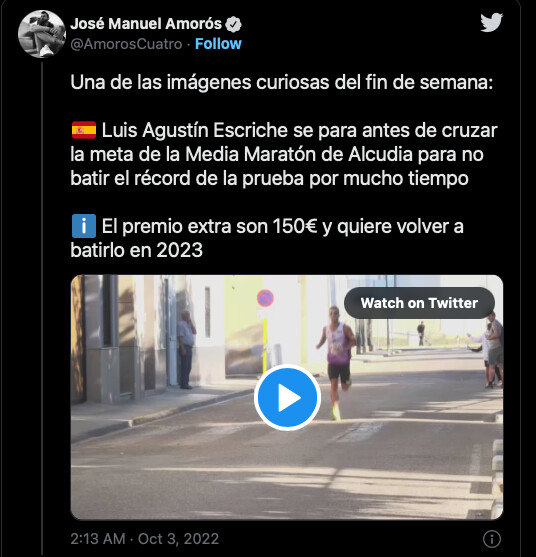
As Escriche approached the finish line, he looked at his watch and stopped, provoking the surprise of the race announcer, who said aloud (in Spanish): “Will he cross the finish line? We don’t know exactly why he doesn’t cross the finish line, but here is your champion.”
Nearly 30 seconds passed from the moment the athlete arrived at the finish, before finally deciding to break the ribbon, securing a victory in which he had no competition.
Escriche stopped the clock at 68:45, taking 35 seconds off the previous record of 69:20, earning himself 150 euros.
The runner better hope this stunt doesn’t come back to haunt him, as now the race has tons of publicity, and he will have to maintain his fitness to beat his previous time in 2023.
(10/08/2022) ⚡AMPby Running Magazine
World's fastest two-legged robot developed at Oregon State University
Students and alumni of the engineering program at Oregon State University in Corvallis, Ore., have created a two-legged robot named Cassie who recently set a Guinness WorldCassie clocked a time of 24.73 seconds at Oregon State’s Whyte Track and Field Center, starting from a standing position and returning to that position after she finished the sprint, with no falls.You may have noticed Cassie had a little trouble staying in her lane; this is because she operates with no cameras or external sensors–she is, essentially, blind.
According to the engineers at Agility Robotics, she trained one year for this race in a simulation environment, which was compressed to a week through a computing software known as parallelization. Parallelization helps the robot learn, going through different techniques and calculations that are happening at the same time.
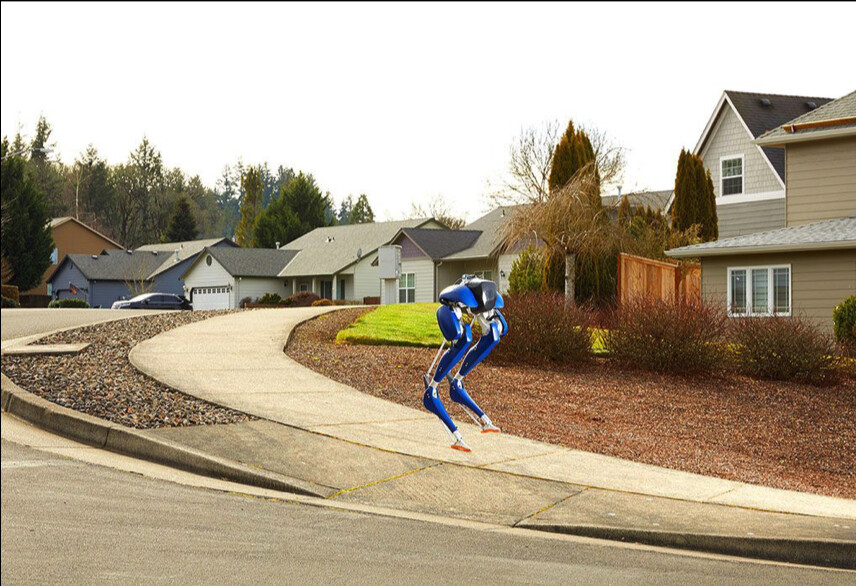
Although Cassie came up a little short of Florence Griffith Joyner’s 100m world-record time of 10.49 seconds, the engineers behind it called her accomplishment “a big watershed moment” for robotics.
“This may be the first bipedal robot to learn to run, but it won’t be the last,” said OSU professor Alan Fern. “The exciting part of this race is the potential. I think progress is only going to accelerate from here.”
We may not see Cassie at the Olympics in 2024, but I wouldn’t rule her out as an Olympic 100m favourite in 2036. Record for the fastest 100m by a bipedal robot.
(10/08/2022) ⚡AMPby Running Magazine
Can Mantz and Sisson set American records on Sunday at the Chicago Marathon
Conner Mantz and Emily Sisson are looking to set American records at the Chicago marathon on Sunday. Mantz, who comes to his marathon debut with impressive XC and track credentials, has his eye on Leonard Korir’s American debut mark of 2:07:56, which was set in Amsterdam in 2019.
“All of my races and workouts have led up to this distance,” Mantz said. “I get excited thinking about it but I need to remember my first marathon and there are some unknowns.”
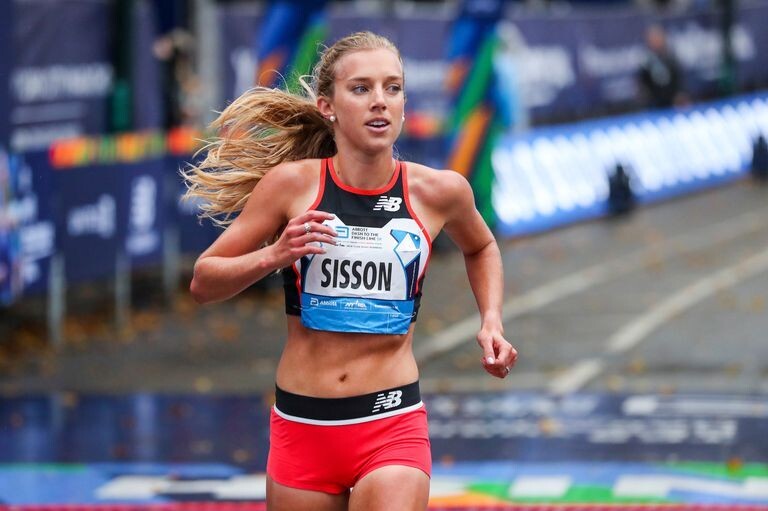
Sisson, who set the American women’s record in the half-marathon with a 1:07:11 at the USATF Half-marathon Championships in Indianapolis in May, only has one completed marathon under her belt – a 2:23:08 at London in 2019 (she dropped out of the 2020 Olympic Trials)– but has her eyes on the women’s American record of 2:19:12, which was set this past January by Keira D’Amato in Houston.

“My first marathon experience was really positive, and I really enjoyed it,” Sisson said. “After my first marathon in London I was drawn back to it and really want to see what I can do.
“My main goal is to try to break 2:20. If I’m feeling good and the record is in striking range I’ll take a stab at it. I had a really good buildup without any big setbacks. The weather for the weekend looks great, and I don’t know how many times I’ll have that, so I might as well take a swing at it.”
The temperatures will be in the low-50s at the start of the race and most likely cross the 60-degree mark by the time the men’s and women’s winners will cross the finish line. While it may be a touch humid at the beginning of the race, that isn’t expected to have that much of an effect.
Even more promising is the wind. Chicago is unique among the World Marathon Majors in that much of the course up to the halfway point is run in the core of the downtown area among the tall buildings, which can whip the wind around. It also leaves the potential for the competitors to be dealing with a headwind as they make the final push up Michigan Avenue to the finish.
This year, the predicted 7-12 mph winds will be from the southeast, which could be a bit of an assistance over the final few miles.
The race is set to start at 7:30 AM Sunday, and will be shown locally on NBC and streamed on Peacock.
(10/07/2022) ⚡AMPby Let’s Run
Bank of America Chicago
Running the Bank of America Chicago Marathon is the pinnacle of achievement for elite athletes and everyday runners alike. On race day, runners from all 50 states and more than 100 countries will set out to accomplish a personal dream by reaching the finish line in Grant Park. The Bank of America Chicago Marathon is known for its flat and...
more...Boston Marathon first Japanese winner has passed away at age 91
The Boston Athletic Association extends condolences to the many family and friends of Shigeki Tanaka, the 1951 Boston Marathon champion who passed away this week. Tanaka made history by becoming the first Japanese athlete to win the Boston Marathon, sprinting away from the field in his unique split-toed shoes to claim victory in 2:27:45.
At just 19, Tanaka’s win helped inspire future generations of Japanese athletes, and his victory served as a unifying point for America and Japan following World War II. We will always remember Mr. Tanaka.
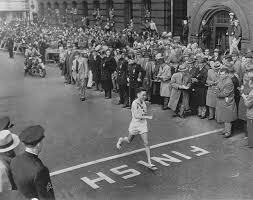
Tanaka was born in 1931.
Tanaka was 13 and living 20 miles from Hiroshima at the time of the 1945 Hiroshima atomic bombing. Following his Boston Marathon victory, he recalled, "We saw a bright light and heard a little noise. But no one thought anything about it at the time... three days later, we heard the terrible news."
He laid the groundwork for his career as a marathon runner by running 20 km from Shōbara to a Saijō municipal stadium as a high school student. He was a first-year student at Nihon University at the time of the Boston Marathon.
Japanese athletes had been barred from the 1948 Summer Olympics in London and from all major international competitions after World War II. The 1951 Boston Marathon was only the second post-World War II athletic competition, after the 1951 Asian Games held a month earlier, to invite Japanese athletes.
Tanaka was one of four Japanese runners invited to compete by Will Cloney of the Boston Athletic Association. The others were Japan's national champion Shunji Koyunagi, Yoshitaka Uchikawa, and Hiromi Haigo.[

At the time, Tanaka was 20 years old, and weighed 118 pounds. The runners stopped in Hawaii, San Francisco, and New York City en route to Boston. In each stopover they went to a movie theater and people wrapped money in paper and threw it on stage for them. Tanaka later recalled that he "felt pretty strange to receive money like that, like a beggar almost... We brought sugar to bring back to Japan—that's how bad things were."
The four were given a welcoming ceremony arranged by servicemen at the Charlestown Naval Shipyard. Because Tanaka was from Hiroshima, The Boston Globe nicknamed him "atomic boy", which he found "a burden". Tanaka later recalled that people in the United States welcomed them warmly and both Japanese and Americans cheered him during the race.
Tanaka became the Boston Marathon's first Japanese winner. He won the event in 2:27:45, the third fastest time in the event's history to that point.
He took the lead on Heartbreak Hill and led convincingly with four miles to go. Observers expected him to break Suh Yun-bok's 1947 course record, but following his pre-race plans, Tanaka stuck to his own schedule; he did not push himself and finished comfortably. After the race, he stated through an interpreter, "I did not plan a record-breaking race, I ran only to win."
Tanaka won the marathon racing in tabi-inspired split-toe running shoes made by Onitsuka, which he thought would give him better traction.
The three other Japanese runners in the race also did very well: Shunji Koyunagi finished in 5th place, Yoshitaka Uchikawa in 8th place, and Hiromi Haigo in 9th place.
After his running career, Tanaka worked as a salaryman for a Tokyo area department store and served as a director at the Japanese Amateur Athletics Federation until his retirement. Tanaka died on October 4, 2022. He was 91.
(10/07/2022) ⚡AMPHere is your guide to running twice a day
The act of doubling (running twice a day) has gained popularity among elite athletes and marathoners as a way to boost mileage and overall training benefits. If you’re trying to increase your mileage, the idea of running twice a day sounds appealing and promising. And don’t get me wrong, it is, but there are proper ways to do it so you don’t find yourself injured or overtrained.
When you begin doubling, the goal is to reduce the recovery time your body needs between sessions, which will eventually teach your body to bounce back faster.
Who should run twice a day?
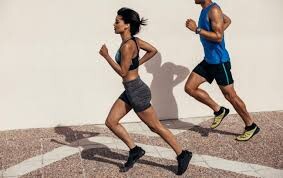
Whether or not you should consider doubling depends on what level of runner you are, and your current training goals. For example, if you are training for a marathon and are peaking at 100 to 120 kilometers a week, doubling allows you to break up your recovery runs into smaller sessions for a little less stress on the body.
Doubling can be a useful tool for runners who are injury prone or have a busy schedule but are determined to run a marathon.
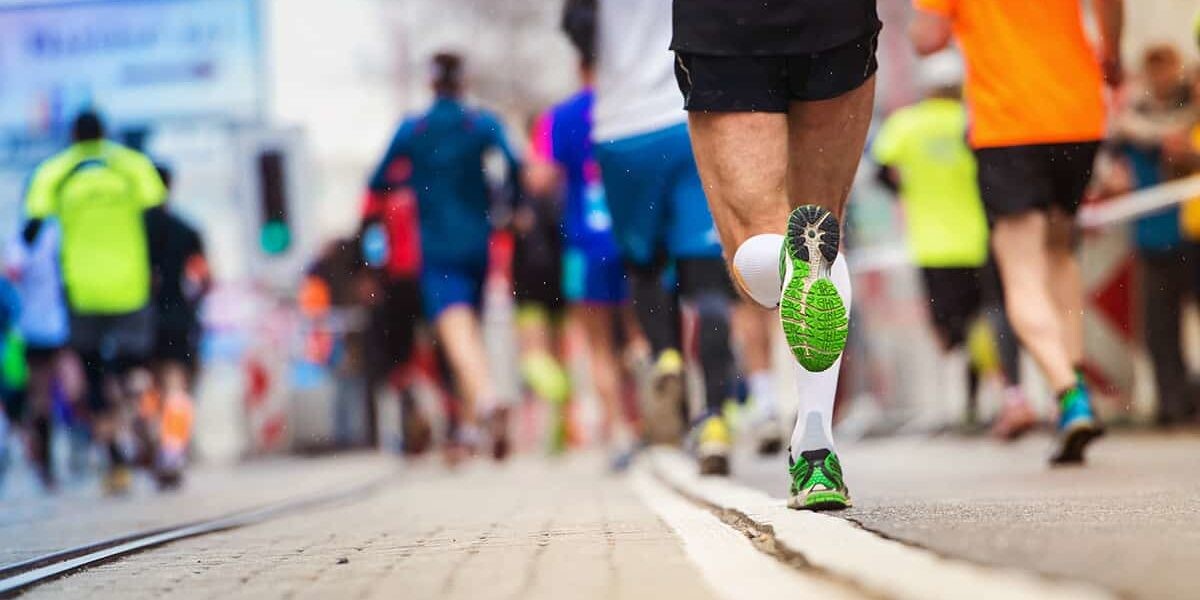
How to double run
Unless you’re an experienced runner or have built up your mileage to double runs, you should generally avoid it, as there’s a fine balance between running twice a day and overtraining. Finding the balance between the two is essential for avoiding injury.
Here are some tips you should consider before starting your first double run.
Start by only adding one double day to your schedule and see how your body reacts to it. Make sure you refuel with a large meal after your first run and stay hydrated throughout the day. Give yourself at least four to six hours between the end of the first and the second for recovery, plus grab a pre-run snack before your second run.
The best place to start is by adding a second run on an easy day. Doubling on an easier day will prepare your body for harder efforts and make it simpler to adjust to running twice a day. After you have mastered the double easy run, try adding another easy run to your workout days to aid in performance and recovery.
(10/07/2022) ⚡AMPby Running Magazine
Defending champions Chepngetich and Tura face strong opposition in Chicago
Ruth Chepngetich and Seifu Tura will defend their Bank of America Chicago Marathon titles on Sunday (9) but will take on stronger fields than they faced last year at the World Athletics Elite Platinum Label road race.
Chepngetich, the 2019 world champion, has won six of the eight marathons she has completed to date, and has finished on the podium in the other two. The Kenyan’s most recent victory came in Nagoya earlier this year when she smashed the course record with 2:17:18, just 10 seconds she of the PB she set in Dubai in 2019.
She has set PBs at a range of distances this year, on the road and track, so she could be in form to improve on her marathon best this weekend, provided she doesn’t go out too hard like she did in Chicago last year.
Ruti Aga looks to be one of Chepngetich’s strongest opponents. The Ethiopian has won just one marathon to date, but she has reached the podium in six other races, including New York in 2019 and three times in Berlin. Her PB of 2:18:34 was set in the German capital four years ago, while her last completed marathon was in Valencia in 2020.
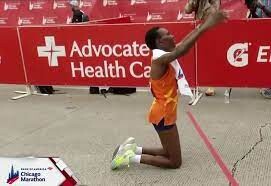
Kenya’s Celestine Chepchirchir heads into this weekend’s race in good form, having taken a few minutes off her PB to finish fourth in Seoul earlier this year in 2:20:10.
Compatriot Vivian Kiplagat won in Milan earlier this year in a PB of 2:20:18. She will be keen to improve upon her fifth-place finish in Chicago last year.
Haven Hailu is still a relative newcomer to the marathon, having contested just four races at the distance. She won in Rotterdam earlier this year in 2:22:01, not far off her 2:20:19 PB set in Amsterdam last year. Fellow Ethiopian Waganesh Mekasha is also one to watch. A 2:22:45 performer at her best, she will be contesting her first marathon in the US.
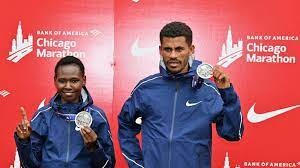
US women occupied two places on the podium in Chicago last year, and this Sunday Emily Sisson hopes to follow in those footsteps. A relative newcomer to the marathon, she clocked 2:23:08 on her debut at the distance in London in 2019. Earlier this year she broke the US half marathon record with 1:07:11 and has also set PBs for 15km, 20km and five miles.
One year on from his Chicago Marathon triumph, Tura returns to the US in good form as the Ethiopian aims to become the first back-to-back winner of the men’s race for more than a decade.
Tura, whose PB of 2:04:29 was set in Milan last year, started 2022 with a half marathon PB of 58:36 in Ras Al Khaimah. He followed that with a runner-up finish in Paris (2:05:10) and then went on to place sixth at the World Championships in Oregon.
Compatriot Herpasa Negasa has the fastest PB of the field, having clocked 2:03:40 in Dubai in 2019. He came close to that when finishing second in Seoul earlier this year in 2:04:49, but he is yet to win a marathon so he will be highly motivated this weekend.
Bernard Koech is another experienced marathon runner who has not yet won a race over the classic distance. He hasn’t raced since last October when he finished second in Amsterdam in a PB of 2:04:09.
Fellow Kenyan Elisha Rotich, meanwhile, is a winner of six international marathons. His most recent race over the distance was his 2:04:21 victory in Paris last year.
Former 1500m specialist Dawit Wolde, who represented Ethiopia in that event at the 2012 and 2016 Olympic Games, has transitioned to the marathon in recent years. He was third in Rotterdam last year in 2:04:27 and has finished on the podium in his past four marathons, including a win in Prague in 2019.
Stephen Kissa is even newer to the marathon. The Ugandan track specialist made a promising debut in Hamburg earlier this year, setting a national record of 2:04:48, which is also the fastest season’s best of this weekend’s line-up.
Others to look out for include 2021 Boston winner Benson Kipruto, Ethiopian half marathon record-holder Jemal Yimer, Daegu marathon champion Shifera Tamru, fellow Ethiopian Abayneh Degu, and Kenya’s Eric Kiptanui.
Elite fields
Women
Ruth Chepngetich (KEN) 2:17:08
Ruti Aga (ETH) 2:18:34
Celestine Chepchirchir (KEN) 2:20:10
Vivian Kiplagat (KEN) 2:20:18
Haven Hailu Desse (ETH) 2:20:19
Waganesh Mekasha (ETH) 2:22:45
Emily Sisson (USA) 2:23:08
Delvine Meringor (ROU) 2:24:32
Laura Thweatt (USA) 2:25:38
Sara Vaughn (USA) 2:26:53
Susanna Sullivan (USA) 2:26:56
Diane Nukuri (USA) 2:27:50
Men
Herpasa Negasa (ETH) 2:03:40
Bernard Koech (KEN) 2:04:09
Elisha Rotich (KEN) 2:04:21
Dawit Wolde (ETH) 2:04:27
Seifu Tura (ETH) 2:04:29
Stephen Kissa (UGA) 2:04:48
Abayneh Degu (ETH) 2:04:53
Benson Kipruto (KEN) 2:05:13
Shifera Tamru (ETH) 2:05:18
Eric Kiptanui (KEN) 2:05:47
Kyohei Hosoya (JPN) 2:06:35
Hamza Sahli (MAR) 2:07:15
Amanuel Mesel (ERI) 2:08:17
Hiroto Fujimagari (JPN) 2:08:20
Guojian Dong (CHN) 2:08:26
Kiyoshi Koga (JPN) 2:08:30
Riki Nakanishi (JPN) 2:08:51
Jemal Yimer (ETH) 2:08:58.
(10/07/2022) ⚡AMPby World Athletics
Bank of America Chicago
Running the Bank of America Chicago Marathon is the pinnacle of achievement for elite athletes and everyday runners alike. On race day, runners from all 50 states and more than 100 countries will set out to accomplish a personal dream by reaching the finish line in Grant Park. The Bank of America Chicago Marathon is known for its flat and...
more...Organizers of the 50th running of the Credit Union Cherry Blossom 10 Mile Run announced today that next year’s race will offer a $50,000 record bonus
$50,000 World and American Record bonus pool* and hosting PRRO and RRCA Championships are just a few of many highlights planned to commemorate 50 years of world class road racing in our Nation’s Capital.
October 7, 2022, Washington, DC: Organizers of the 50th running of the Credit Union Cherry Blossom 10 Mile Run (CUCB) announced today that next year’s race will offer a $50,000 record bonus, to be divided equally* among any man and woman setting a World Athletics World Best and/or American 10 mile record at The Runner’s Rite of Spring® on April 2, 2023.
The bonus payouts will be in addition to $69,000 in guaranteed prize money, with $44,000 paid to the top ten men and women in the international field and $25,000 to the top ten American men and women (double dipping allowed for the Americans). The race was one of the first U.S. events to pay prize money back at the dawn of the prize money era in 1984 when the total purse was $13,400, split evenly among the top men and women.
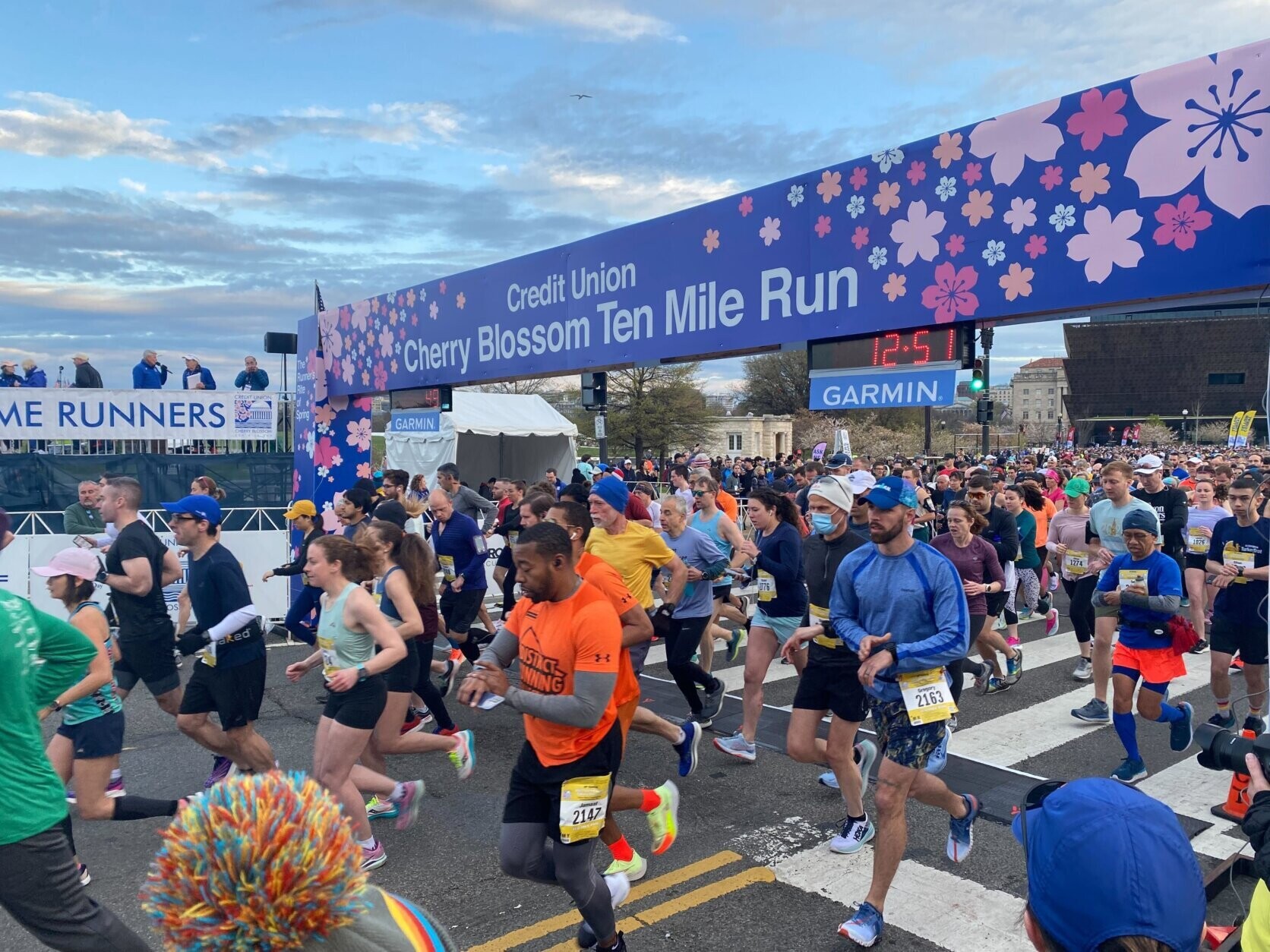
* If World Best times and American Records for men and women are set at the event (i.e. four records set), the $50,000 would be split into four $12,500 shares. If only one World or American record is set by either a man or a woman, the athlete setting the record would get the full $50,000. If an American sets both the World and American records, and no other records are set, he or she would receive $50,000.
Currently, the times to beat are as follows:* Haile Gebreselassie’s (ETH) World Athletics Best of 44:24, run at the Tilburg 10 Mile in Tilburg, Netherlands, September 4, 2005;* Keira D’Amato’s World Athletics Best in a women’s only race of 51:23, run at the UpDawg 10 Mile in Washington, DC, November 24, 2020;* Greg Meyer’s American Record of 46:13, run at the Cherry Blossom Ten Mile in Washington, DC, March 27, 1983;* Keira D'Amato’s previously listed World Best 51:23 is also the American Record for a women’s only race.
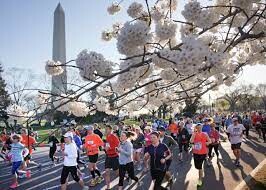
The 10 Mile will serve as the Road Runners Club of America National 10 Mile Championship and the 2022-2023 PRRO Circuit Championship. Winners of the 2022-2023 PRRO Circuit events will be eligible for the $10,000 PRRO Super Bonus by winning the PRRO Championship (the bonus is split if an eligible male and female win the Championship).
Event Director Phil Stewart said, “Our 50th anniversary will be like no previous edition of the race, with the largest prize pool of guaranteed and bonus money ever, and featuring the RRCA and PRRO Championships. The race has always been a leader in the support of elite competition and we want to highlight this heritage in a big way in this special year.”
The inaugural Cherry Blossom 10 Mile in 1973 was won by Sam Bair, in a time of 51:22; the women’s winner was Kathrine Switzer, in a time of 1:11:19; 127 men and 12 women ran that first race. Bill Rodgers holds the honor of most victories, with four consecutive wins between 1978 and 1981. Three women have each won the race three times: Julie Shea (1975-77), Lisa Weidenbach (1990-1992) and Lineth Chepkurui (2008-10). Ben Beach leads all Cherry Blossom finishers with an active streak of 49 years. A comprehensive media guide detailing a wide variety of statistics from the first 49 CUCB races is available here.
Other significant highlights of the 50th anniversary celebration will be announced in mid-October, including the procedures for entering the lottery for race registration and changes in the 5K.
Thanks to Credit Union Miracle Day’s title sponsorship since 2002, the Credit Union Cherry Blossom events have raised over $10.2 million for the Children’s Miracle Network Hospitals, including $323,000 in 2022.
About the Credit Union Cherry Blossom 10 Mile:
The Credit Union Cherry Blossom 10 Mile, organized by Cherry Blossom, Inc., a 501c(3) chapter of the Road Runners Club of America, is known as “The Runner’s Rite of Spring®” in the Nation’s Capital. The staging area for the event is on the Washington Monument Grounds and the course passes in sight of all of the major Washington, DC Memorials. The event serves as a fundraiser for the Children’s Miracle Network Hospitals, a consortium of 170 premier children’s hospitals across North America. About one-third of the funds raised support Washington, DC’s own Children’s National (“Children’s Hospital”). The event also funds the Road Runners Club of America’s “Roads Scholar” program designed to support up-and-coming U.S. distance running talent.
Credit Union Miracle Day, Inc., a consortium of credit unions and credit union suppliers, is the title sponsor of the Credit Union Cherry Blossom 10 Mile, 5K and Kids’ Run. Current presenting sponsors include ASICS, MedStar Health and Wegmans; supporting sponsors include CO-OP Financial Services, CUNA Mutual Group, PSCU, Potomac River Running, Gatorade Endurance, Suburban Solutions and UPS.
The event is a proud member of the PRRO Circuit (PRRO.org), a series of this country’s classic non- marathon prize money road races with circuit stops in Washington, DC; Spokane, WA; and Utica, NY.
In addition to being sanctioned by USA Track & Field and the Road Runners Club of America, the Credit Union Cherry Blossom events have earned Gold Level Inspire Certification from the Council for Responsible Sport in recognition of its legacy of commitment to sustainability and thoughtful resource management.
(10/07/2022) ⚡AMPby Runners Web
Cherry Blossom Ten Mile Run
The Credit Union Cherry Blossom is known as "The Runner's Rite of Spring" in the Nation's Capital. The staging area for the event is on the Washington Monument Grounds, and the course passes in sight of all of the major Washington, DC Memorials. The event serves as a fundraiser for the Children's Miracle Network Hospitals, a consortium of 170 premier...
more...Generali Munich Marathon on Sunday is featuring the strongest field ever in its 36 year history
With the strongest field in its history the GENERALI MUNICH MARATHON will take place on Sunday. The unofficial world junior record holder Tsegaye Mekonnen and fellow Ethiopian Mare Dibaba, who was the marathon World Champion in 2015, head the start lists. Their personal bests of 2:04:32 and 2:19:52 respectively make them the fastest runners ever entered in the traditional Bavarian race.
For the first time in over 20 years an international elite field was assembled for the 36th edition of the GENERALI MUNICH MARATHON. Organisers hope that both course records will fall on Sunday.
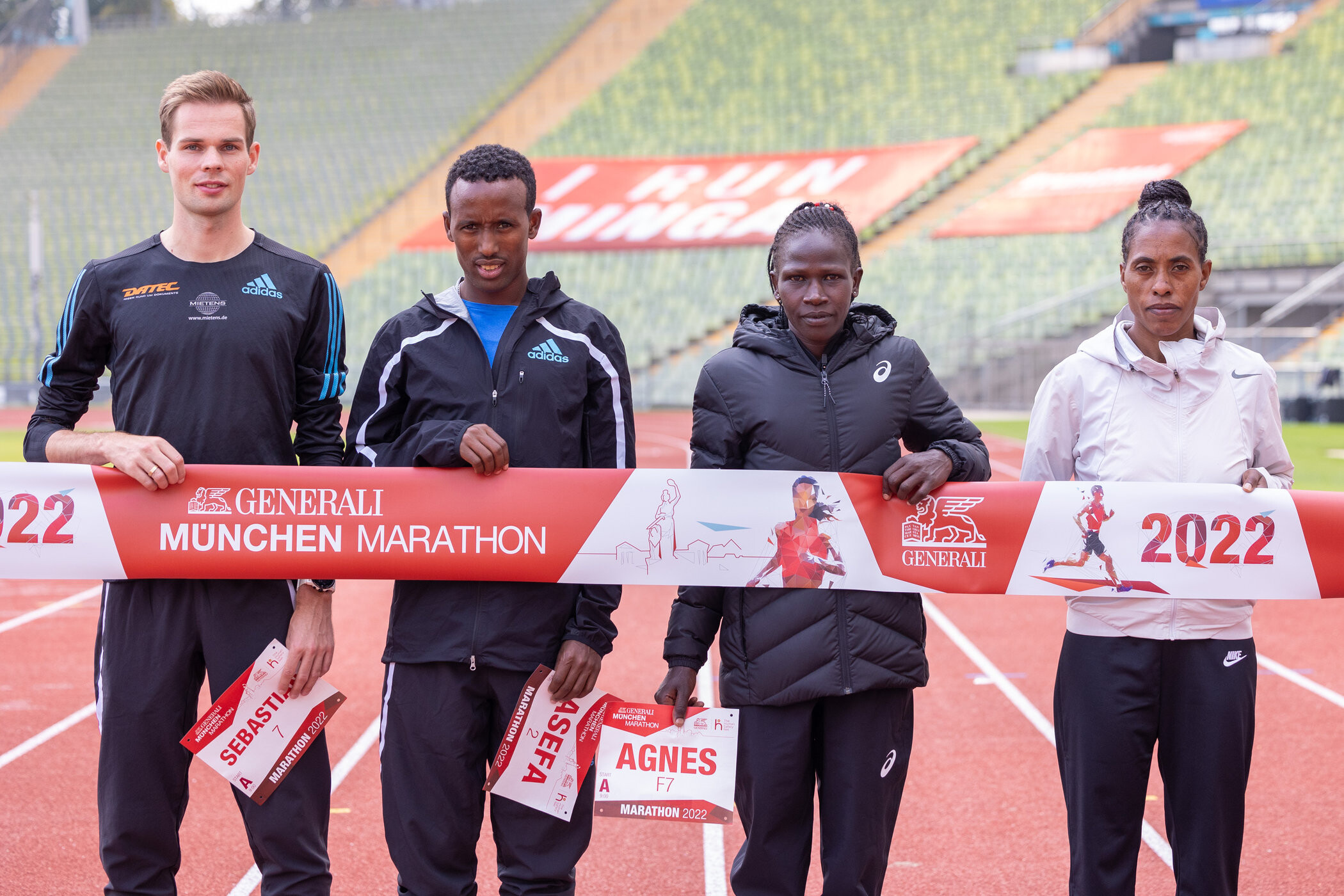
A total of around 18,500 runners are expected total part. About 5,000 of them will run the classic distance which starts and finishes inside the Olympic Stadium. The GENERALI MUNICH MARATHON is an Elite Label Road Race of the international athletics federation, World Athletics. The race will start at 9.00 am on Sunday and a live stream is available at: www.generalimuenchenmarathon.de
50 years after winning the Olympia marathon gold medal in Munich Frank Shorter is back in the city as a guest of honor. “I am very happy to have the opportunity to be back in Munich - the city where I was born in 1947 and where I celebrated my biggest career win in 1972,“ said 74 year-old Frank Shorter.
“We are looking forward to the strongest elite line-up in our history. With the former World Champion Mare Dibaba and the runner who holds the unofficial world junior record, Tsegaye Mekonnen, we managed to get two big names to Munich for the return of the elite fields. Since weather predictions are favourable we hope that both course records will be broken on Sunday,“ said Race Director Gernot Weigl.
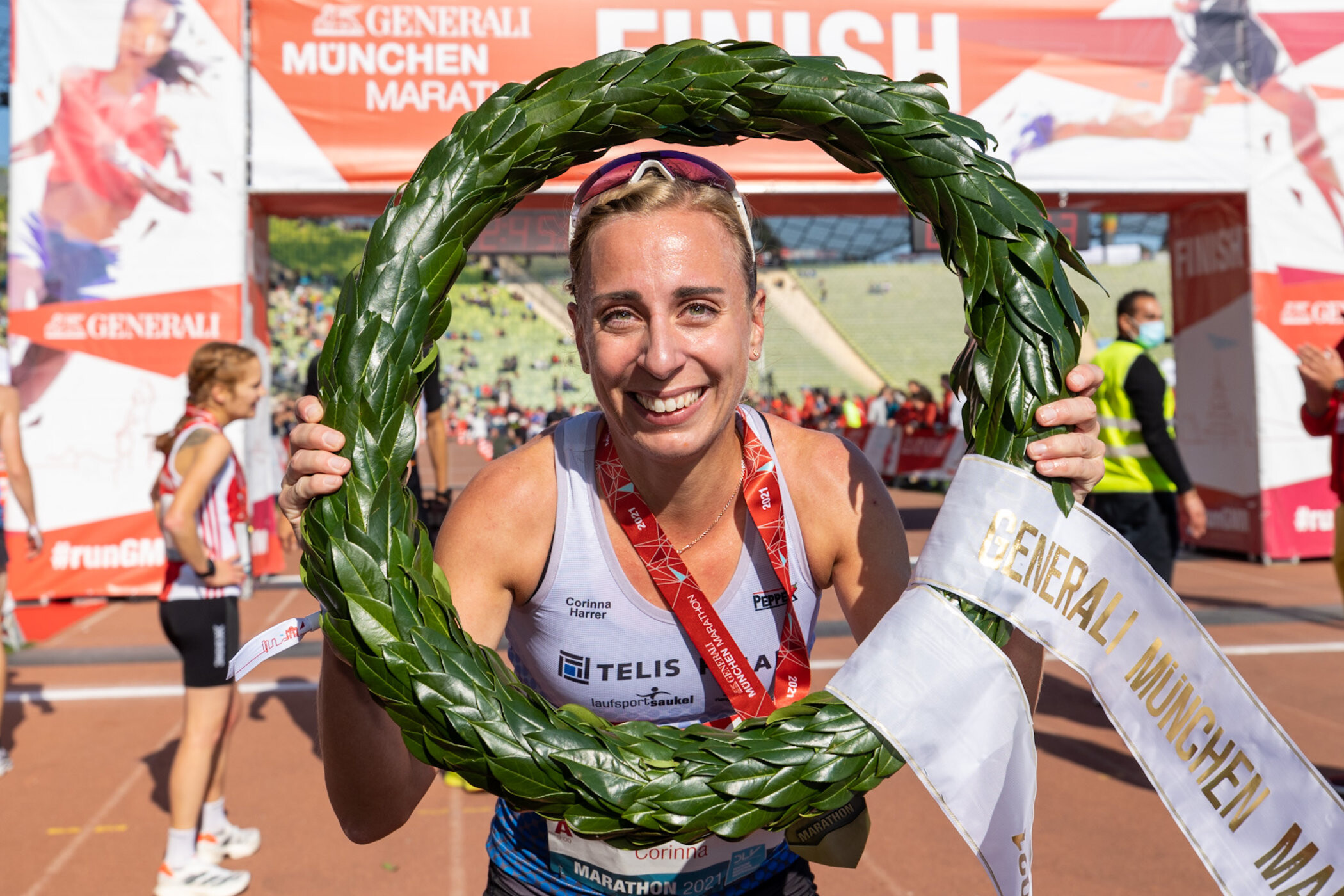
Tsegaye Mekonnen caused a major upset when he took the Dubai Marathon in 2014 aged just 19 years old. His time of 2:04:32 still stands as the unofficial world junior record (World Athletics does not ratify junior records in the marathon). In 2017 Mekonnen also won the Hamburg Marathon. Now 27 years old the Ethiopian has not competed over the classic distance since 2018 and now intends to come back with a strong performance in Munich. “I had injury problems and then the pandemic played its part as well, so I did not run a marathon for three years. Now my training has gone well and I intend to run a 2:06 on Sunday,“ said Tsegaye Mekonnen.
Two other runners are on the start list with personal bests of sub 2:10 and below the 2:09:46 course record: Ethiopia’s Mengistu Zelalem has a PB of 2:08:48 while Kenya’s Edwin Kimaiyo is in a similar range with 2:09:12. Current a half marathon split time of around 64:00 is targeted for the first group.
A big improvement of the course record seems possible for the women in Munich. Germany’s Susanne Hahn established the current mark of 2:32:11 ten years ago. Mara Dibaba heads the women’s field with a world-class personal best of 2:19:52. Besides the World Champion of 2015 and Olympic bronze medallist from 2016 there are two fellow-Ethiopians who have run under 2:25: Atsede Bayisa has a fine personal best of 2:22:03 and Aberu Zennebe has a PB of 2:24:30. “I have prepared for three months and my goal is to run a personal best“, said Aberu Zennebe. A winning time of sub 2:25might well be within reach on Sunday since it is planned that the first group reaches the half way mark in around 71:30. There are eight athletes on the start list who have run under 2:30.
Elite runners with personal bests:
Men:
Tsegaye Mekonnen ETH 2:04:32Mengistu Zelalem ETH 2:08:48 Edwin Kimaiyo KEN 2:09:12 Meshack Koech KEN 2:10:17 Emmanuel Sikuku KEN 2:11:05 Ngonidzashe Ncube ZIM 2:11:46 Justus Kangogo KEN 2:13:34 Berhane Tesfay ERI 2:14:42 Vincent Kiprotich KEN Debüt Philimon Kipchumba KEN Debüt Rodgers Keror KEN Debüt Sebastian Hendel GER Debüt
Women:
Mare Dibaba ETH 2:19:52 Atsede Bayisa ETH 2:22:03 Aberu Zennebe ETH 2:24:30 Agnes Keino KEN 2:25:08 Viola Yator KEN 2:26:51 Mercy Kwambai KEN 2:27:32 Souad Kambouchia MAR 2:27:49 Helen Jepkurgat KEN 2:29:10 Caroline Nahimana BUR 2:30:09
Second photo:showing German debutant Sebastian Hendel with Tsegaye Mekonnen, Agnes Keino und Aberu Zennebe
(10/07/2022) ⚡AMP
Generali Munich Marathon
The GENERALI MUNICH MARATHON has held the elite label of the WORLD ATHLETICS since 2020 and the marathon route is officially measured and recognized. The route runs from the Olympic Park and Schwabing to Leopoldstraße with the Siegestor, via Königsplatz and the Pinakotheken to the English Garden. From there past the Chinese Tower and Art Nouveau villas in Bogenhausen, through...
more...Olympic 1,500m medalist Jenny Simpson is moving to the roads
One of the fastest U.S. milers in history is taking on a new challenge, according to her Instagram. The 2016 Olympic 1,500m bronze medallist, Jenny Simpson, may have hung up her spikes on the track, but will shift her focus to road races with her new sponsor, Puma.
“She’s ready to answer the call of the roads,” Puma’s Instagram reads. “Welcome to the FAM, Jenny. We are excited to see where this next challenge leads.”
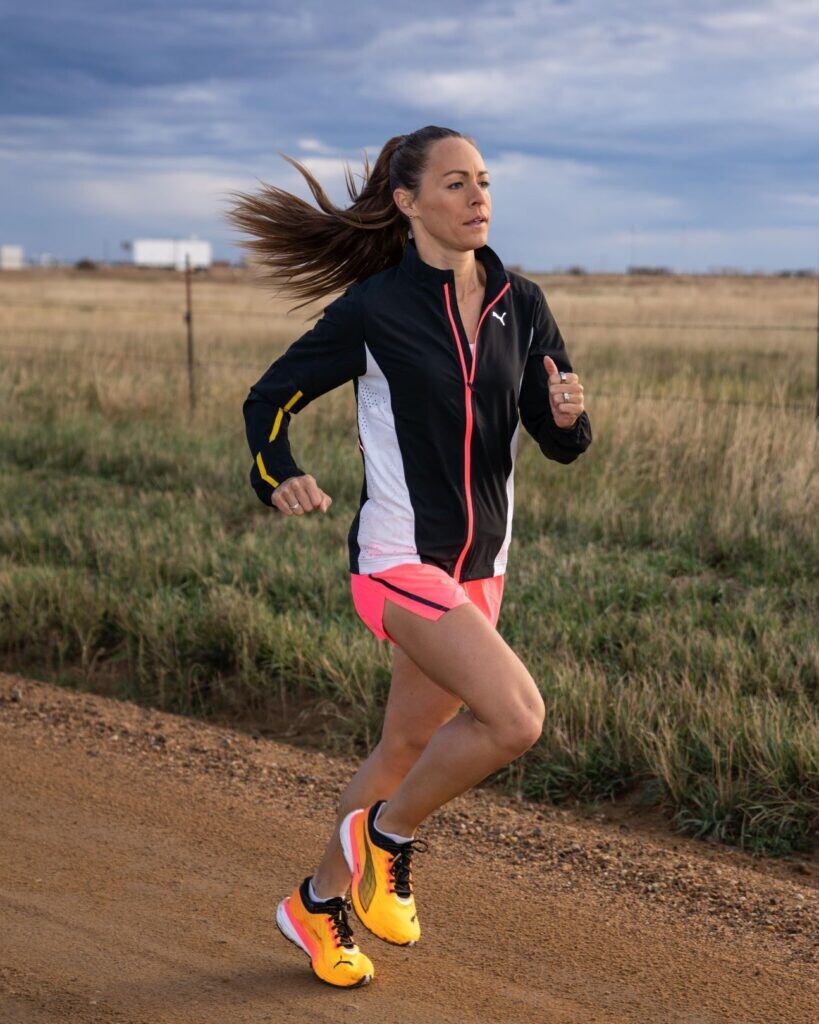
Simpson, whose last race (according to World Athletics) was the Cherry Blossom 10-mile road race in Washington, D.C. in September 2021, will run what she called “a little rust-buster” at the Army Ten-Miler in Washington on Oct. 9.
The Cherry Blossom 10-miler was Simpson’s first race longer than 5,000m. Although she has made the shift to distance running, the 36-year-old hasn’t hinted at whether she plans on moving up to the marathon distance.
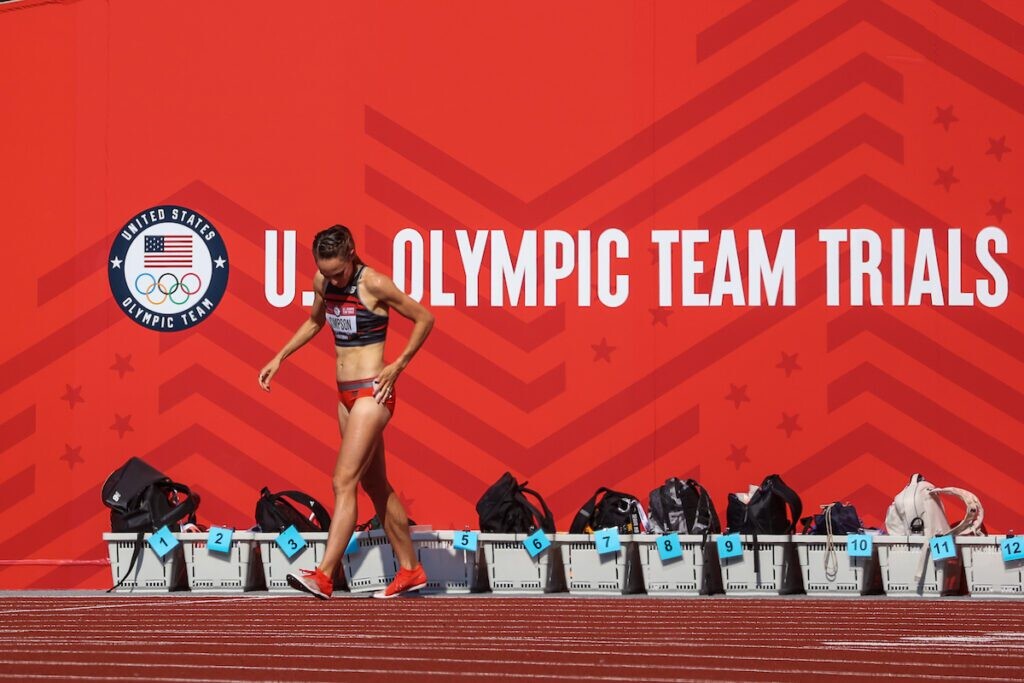
Simpson made her first Olympic team in 2008 in the 3,000m steeplechase, then in 2012 and 2016, she ran the 1,500m, earning a bronze medal in Rio behind Faith Kipyegon and Genzebe Dibaba. She is the only female U.S. athlete to win both a world championship title and an Olympic medal in the 1,500m.
She holds career PBs of 14:56 in the 5,000m, 4:16 in the road mile and 3:57.22 over 1,500m.
Throughout her career on the track, Simpson had a lot of success in road miles, winning eight NYC 5th Ave. Mile titles, including seven consecutive titles between 2013-2019.
Simpson focused much of her time through the pandemic helping her Boulder, Colo. community rebuild from a December 2021 fire. She is also a volunteer coach at the University of Colorado for the track and field and cross-country team.
(10/07/2022) ⚡AMPby Marley Dickinson
Philemon Rono out of TCS Toronto Waterfront Marathon with calf injury
The three-time Toronto Waterfront Marathon champion Philemon Rono of Kenya announced on Thursday that he will not be making the trip to Toronto this year, due to a recent calf injury.
Rono has won three of the last four iterations of the race (2019, 2017 and 2016), setting the Canadian all-comers record at 2:05:00 with his 2019 win.
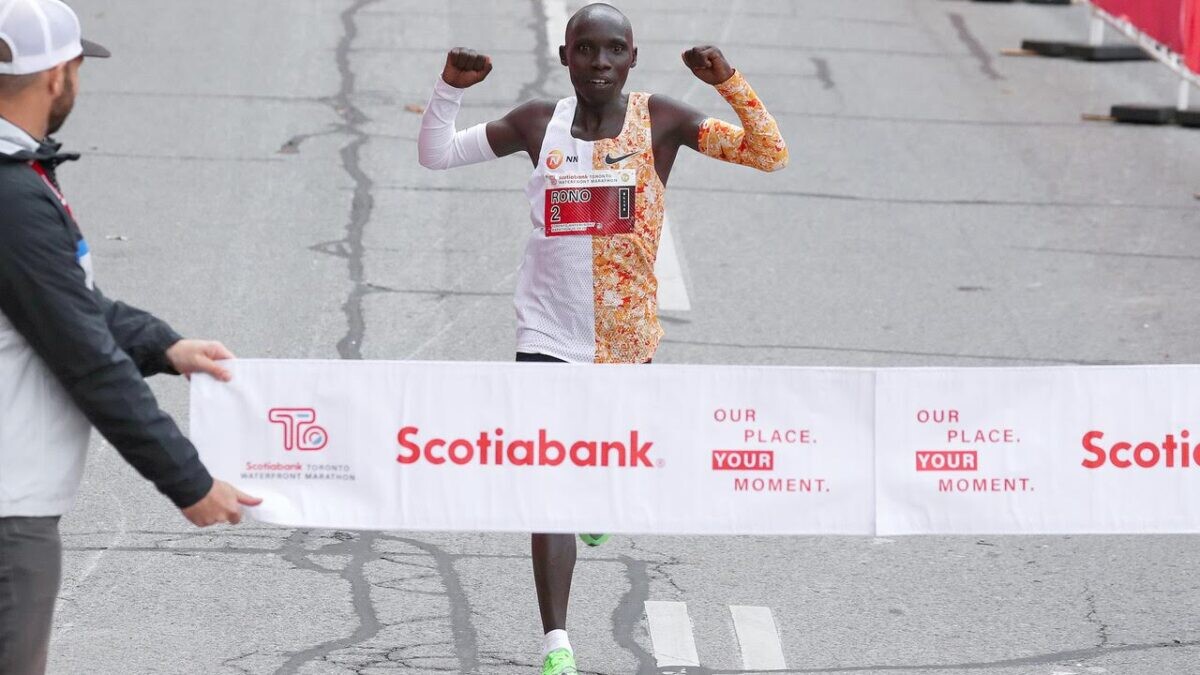
The 31-year-old trains in Kaptagat, Kenya, and is part of Eliud Kipchoge’s NN Running Team. Rono is known by his unique nickname, “Baby Police,” for his job as a police officer and his diminutive stature.
It is not known how Rono sustained his calf injury, but he was eagerly looking to become “the King of Toronto” by winning his fourth title in five years.
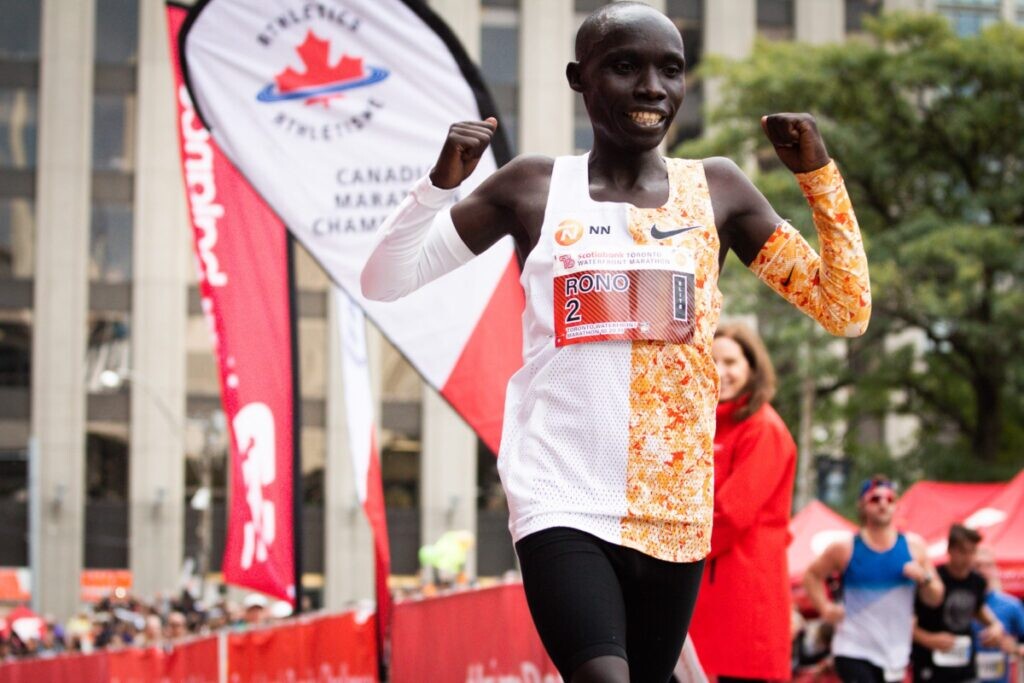
Kenya’s Felix Kandie and Barselius Kipyego and Ethiopia’s Yihunilign Adane will be the frontrunners to win in Rono’s absence. Kipyego trains alongside 2022 London Marathon champion Amos Kipruto and 2021 Boston champion Benson Kipruto in Iten, Kenya.
Canadian half-marathon record holder Rory Linkletter, Olympian Trevor Hofbauer and Lee Wesselius will also battle it out for the Canadian marathon title.
(10/06/2022) ⚡AMPby Marley Dickinson
TCS Toronto Waterfront Marathon
The Scotiabank Toronto Waterfront Marathon, Half-Marathon & 5k Run / Walk is organized by Canada Running Series Inc., organizers of the Canada Running Series, "A selection of Canada's best runs!" Canada Running Series annually organizes eight events in Montreal, Toronto and Vancouver that vary in distance from the 5k to the marathon. The Scotiabank Toronto Waterfront Marathon and Half-Marathon are...
more...Stay injury-free with these single-leg exercises
Running is a unilateral (one-leg at a time) action, and adding single-leg movements to your training regime can address muscle imbalances and lower your risk for injuries. In this video, Maine-based writer and adventure runner Ian Ramsey demonstrates four simple and quick exercises you can add to your routine tonight.
There are two predominant reasons runners strength train: injury prevention and improved performance. Single-leg exercises are ideal for the former because training each leg separately can help prevent one side from becoming stronger than the other or help your weaker side catch up.
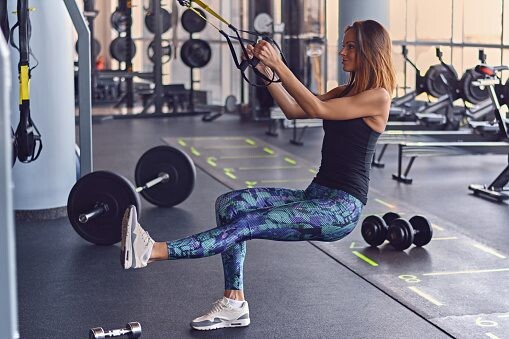
A recent study also showed that when participants did single-leg exercises in an alternating pattern (instead of doing all your reps on one side and all of them on the other), their time to exhaustion improved, indicating that alternating unilateral movements may improve performance for endurance athletes.
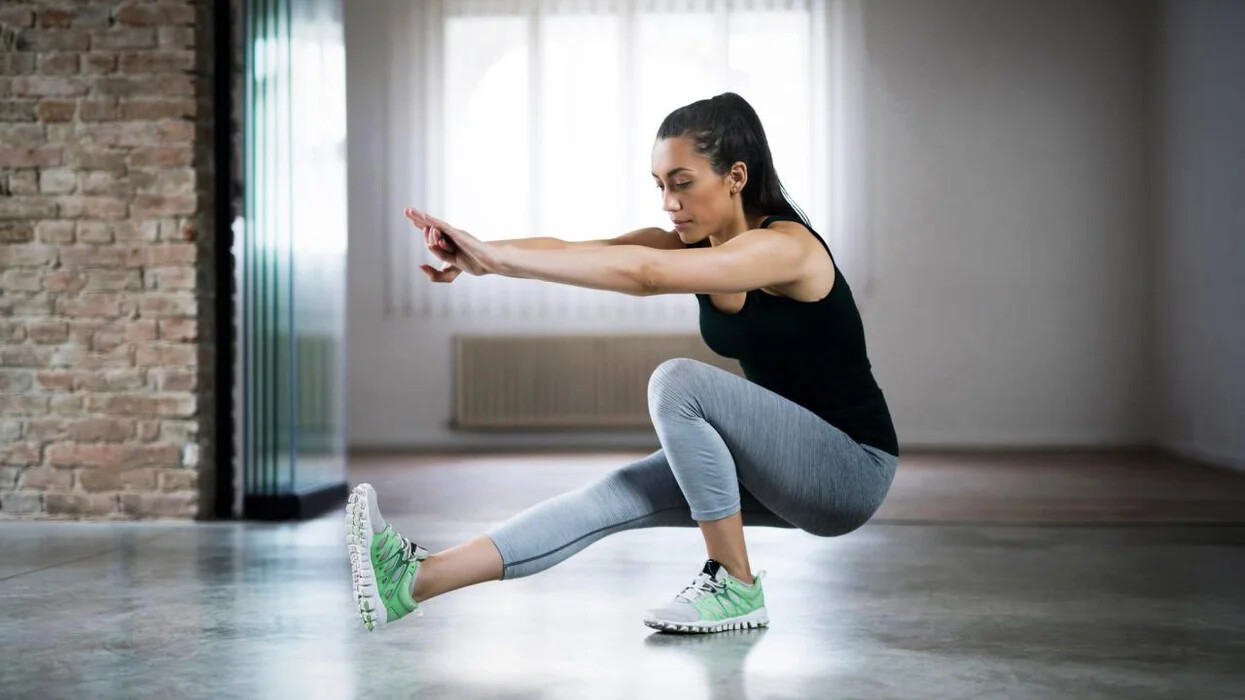
Strengthening your glutes, hips, knees, and core (all targeted in this video) will make you a more sturdy and resilient athlete, and will help you maintain efficient running form even when fatigued.
Ramsey demonstrates a single-leg bridge, pistol squat, single-leg deadlift and step-ups, and explains how each exercise will benefit you as a runner. If you’ve been wanting to start strength training but have no idea where to start, Ramsey’s video is the perfect quick watch to get you going.
(10/06/2022) ⚡AMPby Running Magazine
Kenyan Celestine Chepchirchir will be targeting a first World Marathon Majors title when she makes her debut at the Chicago Marathon
Reigning La Rochelle Marathon champion Celestine Chepchirchir will be targeting a first World Marathon Majors title when she makes her debut at the Chicago Marathon on October 9.
Chepchirchir, who has competed in seven marathons across the world, said: “This is my first time competing at the World Marathon Majors, which are very competitive in nature but I want to give it my best and come home with something to smile about.”
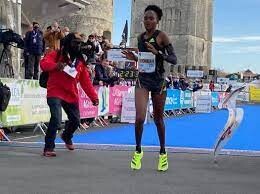
The former Cape Town marathon champion earned the Chicago Marathon nod following her fourth-place finish at the Seoul Marathon in April in a time of clocking 2:20:10.
“Despite not winning the Seoul Marathon title, I set a good time that earned me a call to the Majors. Majority of athletes I ran with are in the Majors now. As I head to Chicago, I am targeting even better times to pave way for more top races in the future,” she added.
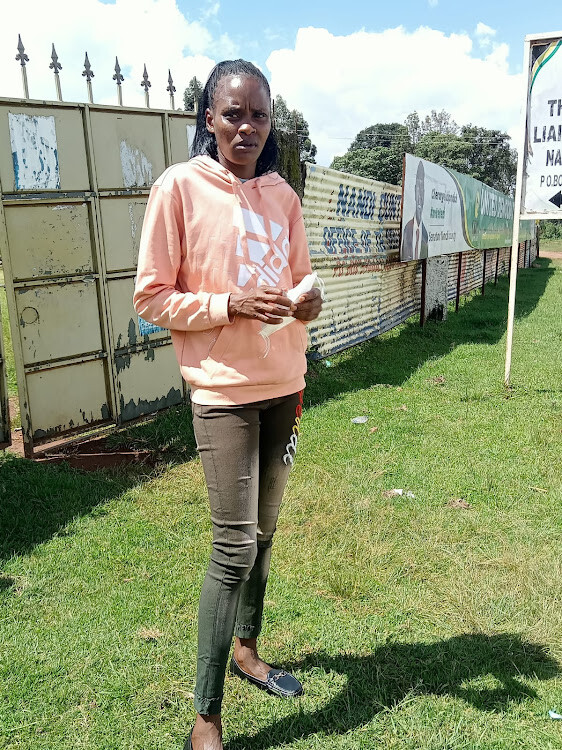
Chepchirchir said her training in Kapsabet has been top-notch and expects handsome rewards in one of the most congested and competitive races in the world.
“Looking at the names on the start list, I expect a very competitive race,” she added.
She will be up against compatriot Ruth Chepngetich, the defending champion and former world marathon champion.
Last year, Chepngetich won the title in 2:22:31 ahead of USA’s Emma Bates (2:24:20) and Sarah Hall in 2:27:19 for third.
Last year's third-place finisher Erick Kiptanui headlines the Kenyan contingent which also has Bernard Koech, Elisha Rotich, Benson Kipruto, and John Korir.
(10/06/2022) ⚡AMPby Emmanuel Sabuni
Bank of America Chicago
Running the Bank of America Chicago Marathon is the pinnacle of achievement for elite athletes and everyday runners alike. On race day, runners from all 50 states and more than 100 countries will set out to accomplish a personal dream by reaching the finish line in Grant Park. The Bank of America Chicago Marathon is known for its flat and...
more...Running outside year-round will make you indestructible
It’s the time of year when many runners start to shift some runs over to a treadmill or indoor track. Keeping most of your runs outside from the moment the days become shorter can be an efficient and straightforward training tool. If you can continue to train outside year-round, both your brain and body will benefit.
Aim to keep as many of your runs outdoors as possible, particularly in the fall season when the weather is in between summer warmth and the winter frigid temperatures. As it gradually gets colder, you will also adjust and it won’t be a huge shock when you step out into a deep freeze mid-winter.
Avoiding darker mornings and evenings due to safety concerns are, however, valid reasons to shift to an indoor setting, and it’s important to stay aware of your surroundings and prioritize safety.
You’ll gain mental strength and grit
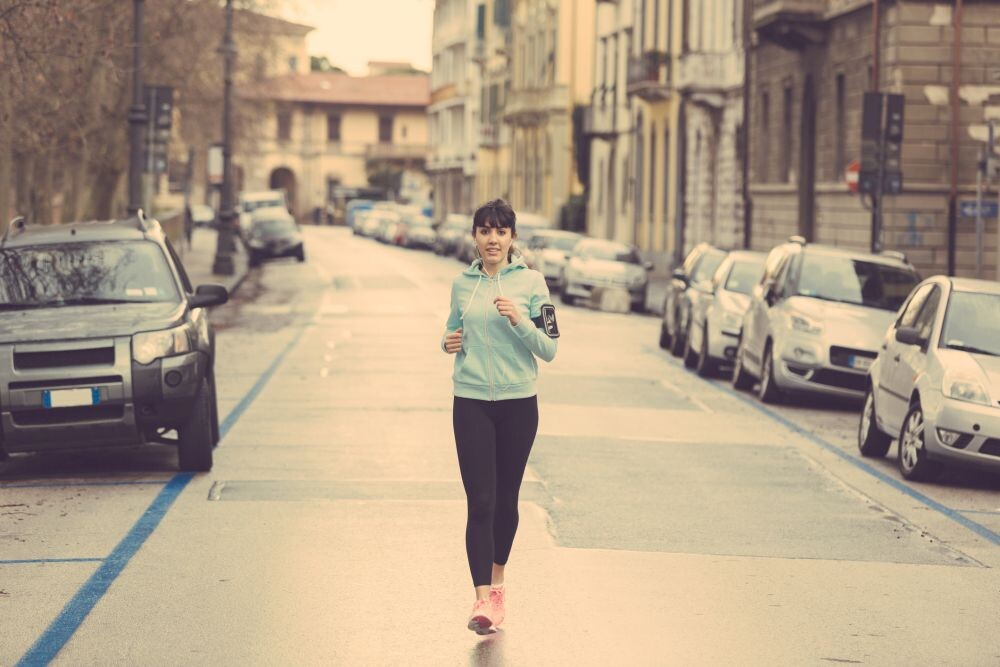
Depending on where you live, winter can feel interminable. Many people suffer from seasonal affective disorder (SAD) or subclinical variations of it. Exercising, period, can seem much less enjoyable much of the time. No matter how you reframe it, trudging through rain and snow is tough. Knowing that the long-term benefits outweigh the short-term challenges can be helpful motivation to get out the door.
Give yourself huge kudos every time you head out into a less-than-appealing day, and imagine how much easier hill training will feel in the daylight, in shorts, in a few months. Putting in the hard work early in the year will lead to more fun when the sun is shining.
Getting outdoors will boost your mood, even when the weather is bad

It can be hard to find motivation when the sky is cloudy or the weather is really cold. Even when it isn’t sunny, you’ll still be getting exposure to daylight, something neuroscientist Andrew Huberman says is key to longevity and staying healthy.
A Harvard University study showed that the elevated levels of carbon dioxide often present in indoor environments can have negative effects on cognitive function. Breathing fresh, oxygen-rich air (even if it’s chilly) is good for your body and brain.
Even the coldest winter runs, the ones where you can’t wait to get indoors and peel off the freezing layers, will give your brain a kick-start and leave you feeling better for having moved your body.
Training all winter will give you an edge on the competition
This early part of winter is the best time to build your aerobic base and set an important foundation upon which spring speed and endurance will be built. Think of your training as a pyramid—your winter base mileage forms the bottom layer on which your other training can rest.
If you skip this step, you won’t be ahead of the game when spring arrives, and it will take longer to get into racing shape. Running on snow or uneven terrain also recruits your stabilizer muscles into action, so you’ll be strenghtening areas of your body that aren’t usually a focus while you run.
Running during the unpredictable fall and winter months also means you’ll be challenging your body and brain to tackle new and different things regularly–another science-backed way to keep your brain and body optimized for many years to come.
(10/06/2022) ⚡AMPby Keeley Milne
Try this steady tempo workout to smash your upcoming half-marathon
Are you needing a little more confidence before you tackle a half-marathon this fall? We have just the workout for you. Many distance runners will use tempo workouts to increase their lactate threshold and to improve their body’s ability to clear the lactic acid that builds up over distance (especially late in the half marathon).
A tempo run is a middle ground between an easy jog and a fast-paced sprint, straddling the line between aerobic and anaerobic training.
Your tempo pace should be around your half-marathon pace, and something you should be comfortable running at for at least an hour. Another way to calculate your tempo pace is by taking your 5K PB and adding 30 to 45 seconds per kilometre.

The workout
Three to four reps of 10 minutes @ tempo pace with 90 seconds’ slow jog rest between reps.
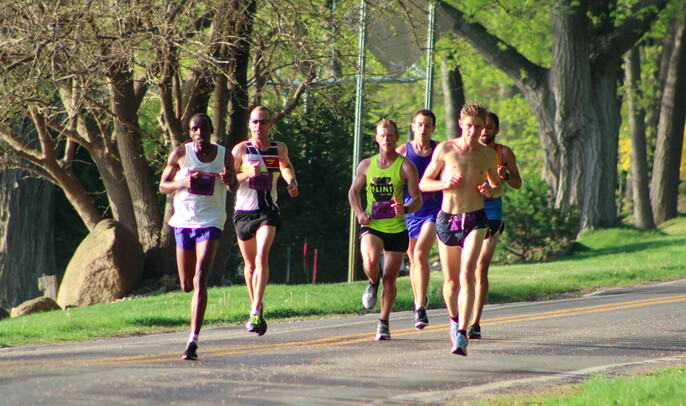
Work your way into the workout by staying controlled and hitting paces on your first two reps. If you find that you are struggling to hold the pace near the end of the first or second rep, extend the rest to two minutes instead of 90 seconds, and substitute a walk for the jog.
The idea with the jog rest is to keep your heart rate up to simulate race-like conditions.
If you’re able to complete all four reps, calculate your average pace through all four sections to find your projected half-marathon pace.
(10/06/2022) ⚡AMPby Marley Dickinson
Joyciline Jepkosgei receives promotion in Kenyan army following her success at London Marathon
Here’s your feel-good story of the day: Kenyan marathoner Joyciline Jepkosgei has been recognized by her country for her second-place finish at the 2022 London Marathon, earning a promotion in the army.
On Tuesday, Kenya’s Chief of Defence Forces (CDF), General Robert Kibochi, promoted Corporal Jepkosgei to the role of Sergeant (Sgt.) at the Kenyan Army Defence Headquarters in Nairobi.
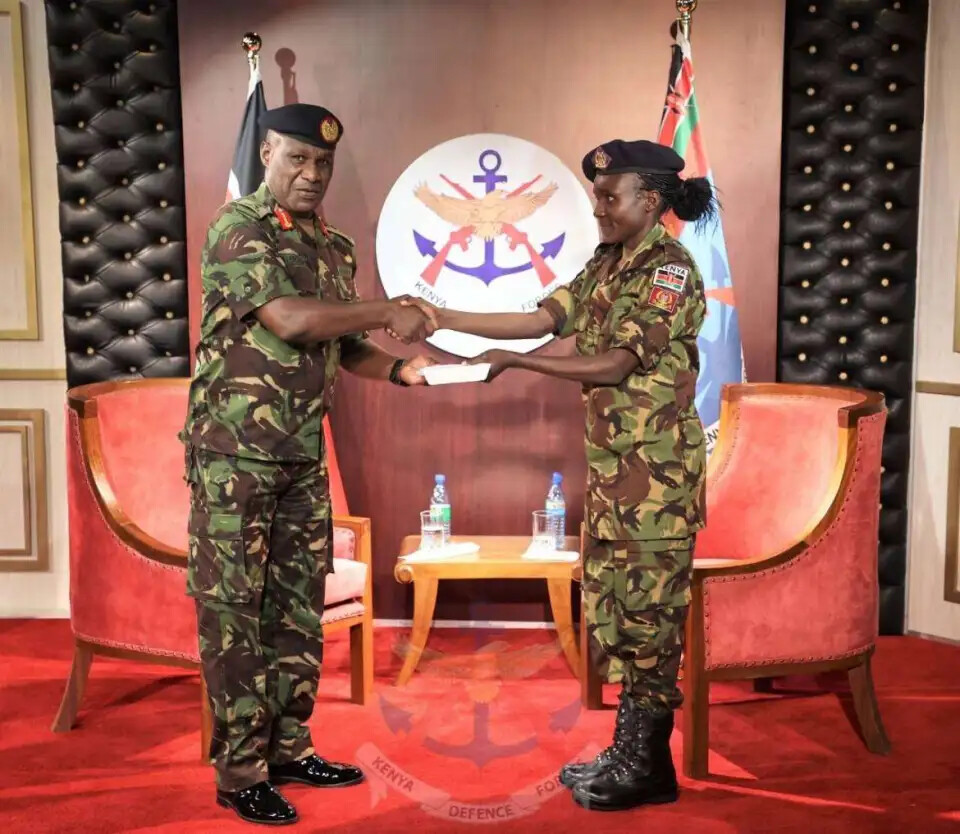
General Kibochi congratulated Jepkosgei for her excellent work in representing the country in major races and for improving her time, which has seen her break multiple world records.
“We are very grateful for your continuous hard work and for representing Kenya and KDF well,” said General Kibochi.
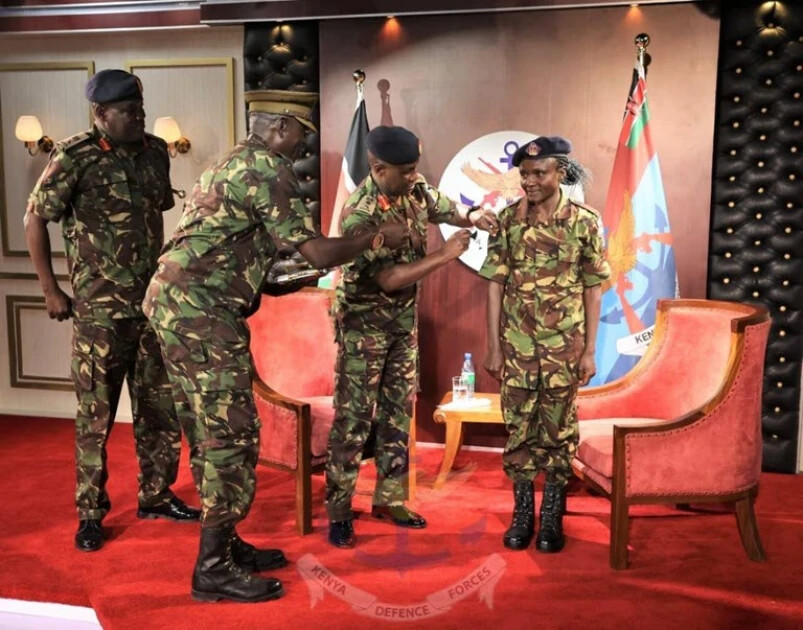
On Sunday, Jepkosgei clocked 2:18:07, to finish second to Ethiopia’s Yalemzerf Yehualaw, who won in 2:17:26. Jepkosgei won the London Marathon in 2021, and the New York City Marathon in 2019.
Jepkosgei is one of many world-class Kenyan athletes who work for official government organizations. 800m world record holder and two-time Olympic champion David Rudisha worked as a police officer during his running career, and so does two-time NYC Marathon champion Geoffrey Kamworor, plus Canadian soil record holder and defending Toronto Waterfront Marathon champion Philemon Rono.
If your workplace offered promotions for representing the company at a global marathon, would you train a little harder?
(10/05/2022) ⚡AMPby Running Magazine
TCS London Marathon
The London Marathon was first run on March 29, 1981 and has been held in the spring of every year since 2010. It is sponsored by Virgin Money and was founded by the former Olympic champion and journalist Chris Brasher and Welsh athlete John Disley. It is organized by Hugh Brasher (son of Chris) as Race Director and Nick Bitel...
more...Paris 2024 Olympic Games reveals routes for Olympic marathon and mass event run
Paris 2024 today unveiled the routes for the Olympic marathon and the two races – a 42.195km course and a 10km course – open to the general public as part of mass event running.
The announcement was made in the presence of Tony Estanguet, President of Paris 2024; Anne Hidalgo, Mayor of Paris; Valérie Pécresse, President of the Ile-de-France Regional Council; World Athletics CEO Jon Ridgeon; Geoffroy Sirven-Vienot Vice-President of Sponsorship, Events and Partnerships at Orange; Paula Radcliffe world record-holder between 2003 and 2019, and French international marathon runner Yohan Durand.
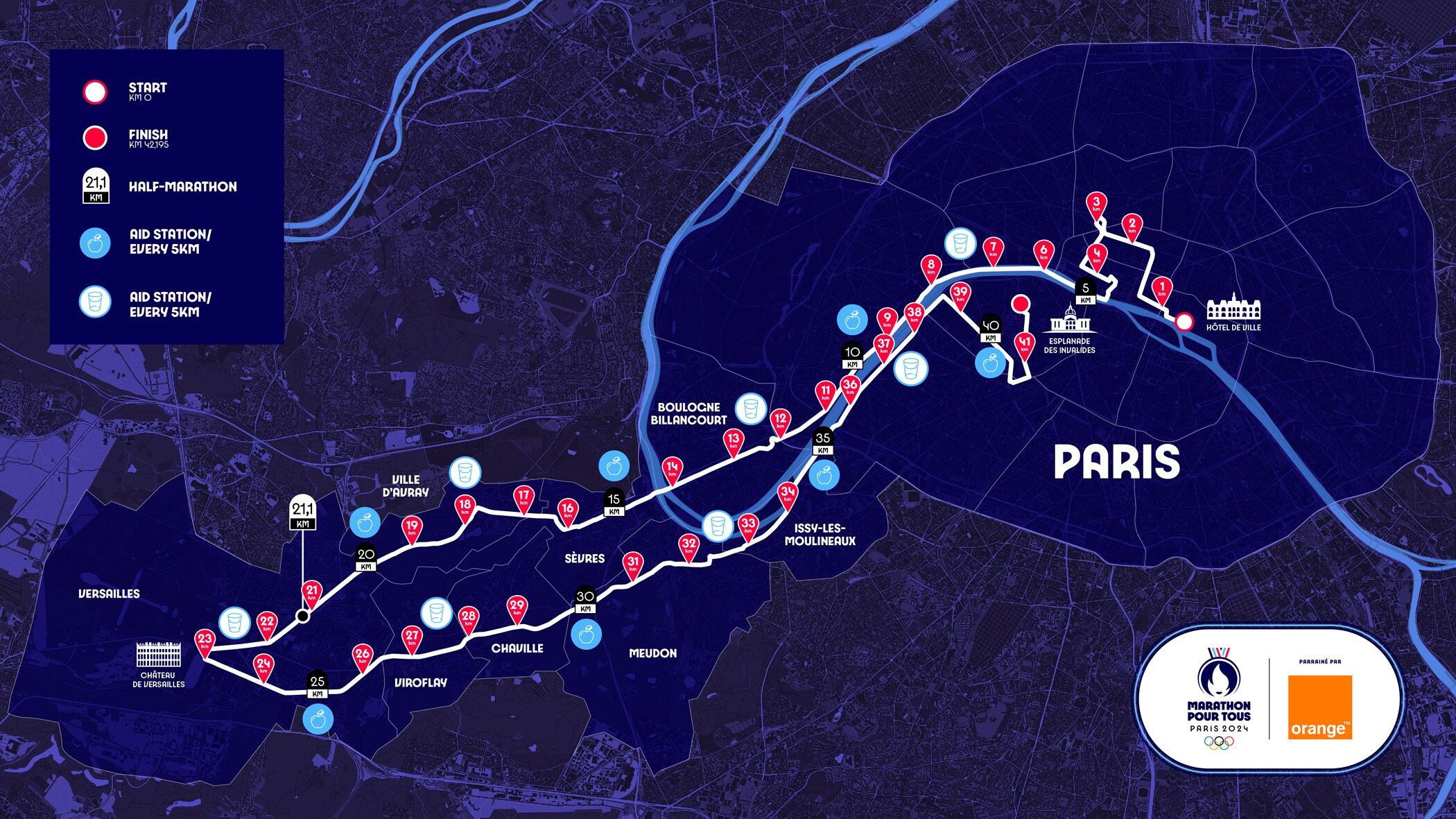
A remarkable, challenging and inspiring course
For the Olympic marathon, one of the most iconic events of the Olympic Games, Paris 2024 has unveiled a new route.

When planning the route for this legendary event, Paris 2024 drew inspiration from the ‘Women's March’ of 5-6 October 1789 when 6-7000 Parisian women marched through Paris, Sèvres and St Cloud before reaching Versailles and forcing the King back to the Tuileries Palace.
Starting at the Hôtel de Ville and finishing on the Esplanade des Invalides, the course will take in some of the most beautiful sights and monuments of Paris and its surroundings. It will deliver 42.195km of drama with the Louvre Pyramid, Grand Palais, Château de Versailles and the Eiffel Tower as its backdrop.
This Olympic Marathon also has a particularly tough profile with an overall elevation gain/loss of 438m. The route – specially designed for the Paris 2024 Games and approved by World Athletics – is unique, demanding and technical.
“With its unprecedented route, the Paris 2024 Marathon represents a great sporting challenge for the athletes, in a spectacular setting,” said Radcliffe. “This race, more unpredictable than ever, promises to be mythical.”
“Beyond a doubt, the Paris 2024 Marathon will have something special about it,” said two-time Olympic champion and world record-holder Eliud Kipchoge. “To perform in such an impressive setting, in a place so charged with history and symbolism, will be a unique experience. I could not ask for a more perfect race for the Games.”
“Paris 2024 is providing us a route that's rich in symbolism, entertainment and athletic challenge,” added Durand. “Taking up this challenge here in my home country is a lifelong ambition.”
A race open to the general public for the first time in Olympic history
With mass event running, the general public can put themselves in the shoes of their Olympic heroes and run the same marathon route.
To open up this experience to everyone, Paris 2024 will offer, in addition to the traditional 42.195km distance (20 years old and above), a 10km race accessible to as many people as possible (16 years old and up).
With 20,024 participants per race, Paris 2024 offers experienced athletes and up-and-comers a unique opportunity to participate in the Games and experience this festive, athletic gathering that is sure to leave each participant with an unforgettable memory.
(10/05/2022) ⚡AMPby World Athletics
Paris 2024 Olympic Games
For this historic event, the City of Light is thinking big! Visitors will be able to watch events at top sporting venues in Paris and the Paris region, as well as at emblematic monuments in the capital visited by several millions of tourists each year. The promise of exceptional moments to experience in an exceptional setting! A great way to...
more...Don’t let cold weather put an end to your outdoor running
When running in the summer, there isn’t much to think about when you’re preparing to head out the door, but when the temperature is cooler, you need to make sure you’re properly dressed for the conditions.
The golden rule of dressing for this time of year is to dress 10 degrees warmer than it actually is.
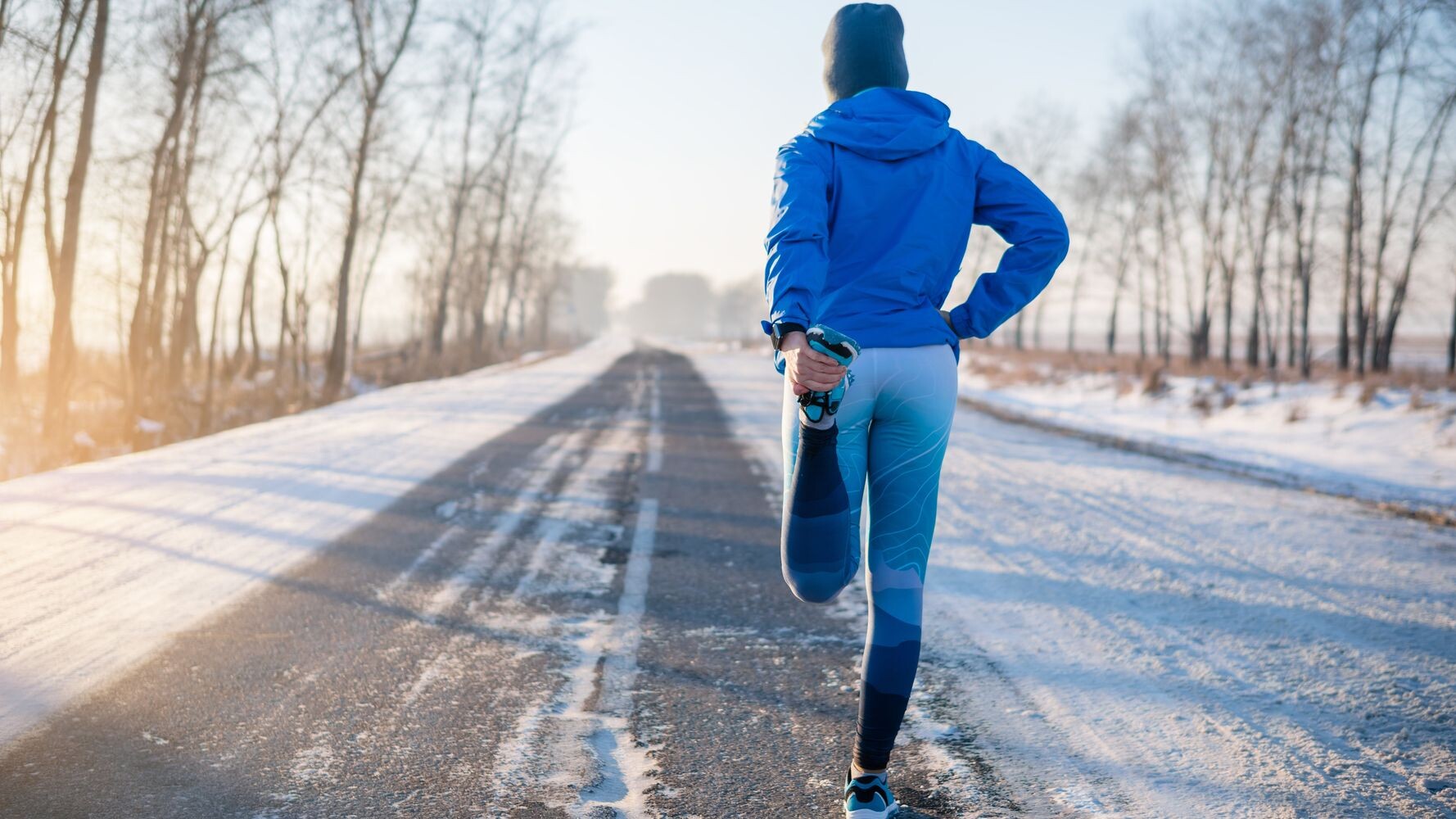
The idea behind the golden rule is that your body is prone to warm up from running as a result of increased heart rate and blood flow. More blood flow to your muscles and skin will help radiate heat away from the body, increasing your core body temperature.
Although you may feel chilly in the first kilometre, your body is bound to get warmer as the run progresses. It’s also better to overdress than underdress, as you can always take a layer off. Gloves, hats and running buffs are all game-changing running accessories for fall and winter, which will help keep your body heat in.

Of course, the golden rule can vary from one runner to the next, depending on one’s body temperature, but the normal range is between 36.5 and 37.5 C. One’s body temperature can vary depending on age, time of day, physical exertion level, health and emotions.
Try out the golden rule this fall and see if it works for you!
(10/05/2022) ⚡AMPby Marley Dickinson
Beijing marathon to return after two-year Covid hiatus Wednesday, October 05, 2022
Thousands of runners will line up for the Beijing marathon in November after a two-year Covid pause, organizers said, as sporting events gradually return to China.
The world's most populous country has canceled almost all international sports competitions since Covid emerged there in 2019, with the Beijing Winter Olympics in February this year a rare exception.

Race organizers said on Tuesday that 30,000 runners would be able to take part in the 26-mile (42-kilometer) course through the capital on November 6 -- but only Beijing residents can register.
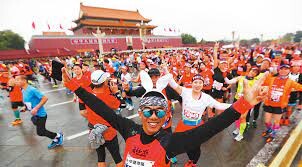
China is the last major economy wedded to a zero-Covid policy, stamping out virus flare-ups with snap shutdowns, mass testing and lengthy quarantines.
The table tennis world team championships kicked off last Friday in the megacity of Chengdu, though participants must stay in a "closed loop", and it was announced last week that China would host the season-ending World Tour Finals for badminton in December.
(10/05/2022) ⚡AMPBeijing Marathon
The Beijing Marathon is an annual marathon held in Beijing, People's Republic of China. The race was first held in 1981 and has been held every year since. The race begins at Tiananmen Square and finishes at the National Olympic SportsCenter stadium. Beijing Marathon is now a full marathon only marathon race. At the 2009 edition of the race, 4897...
more...

